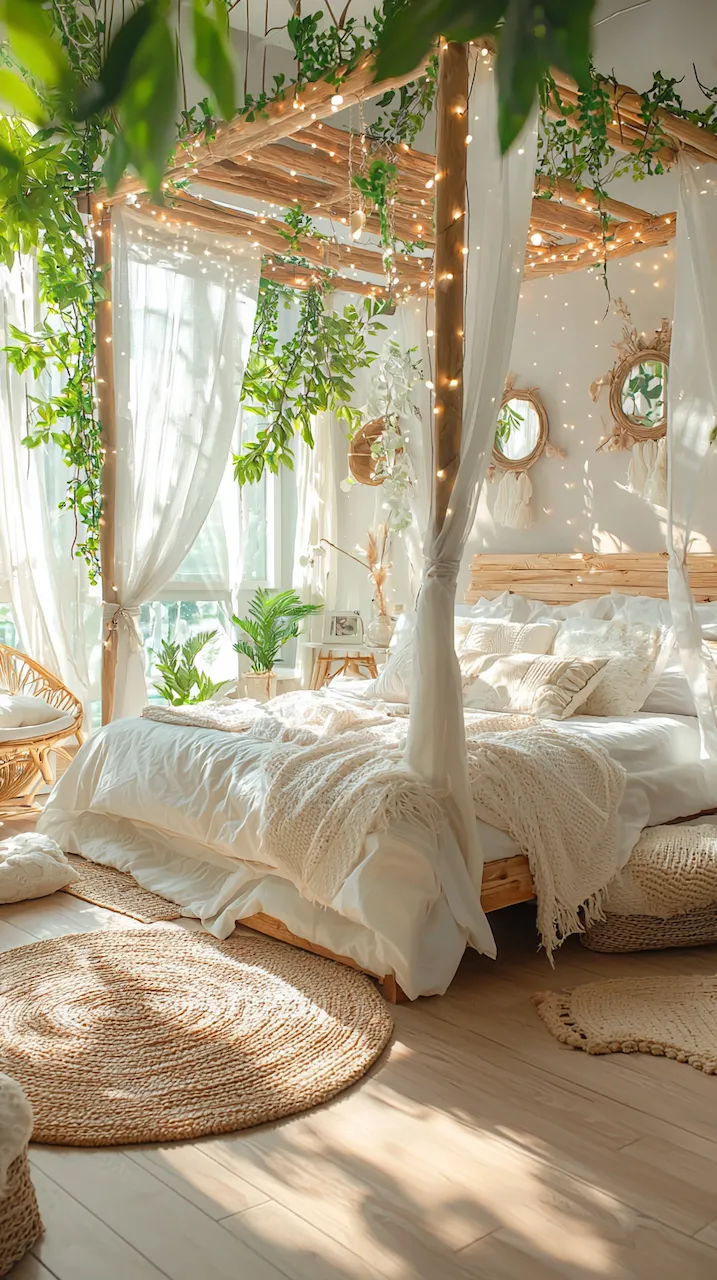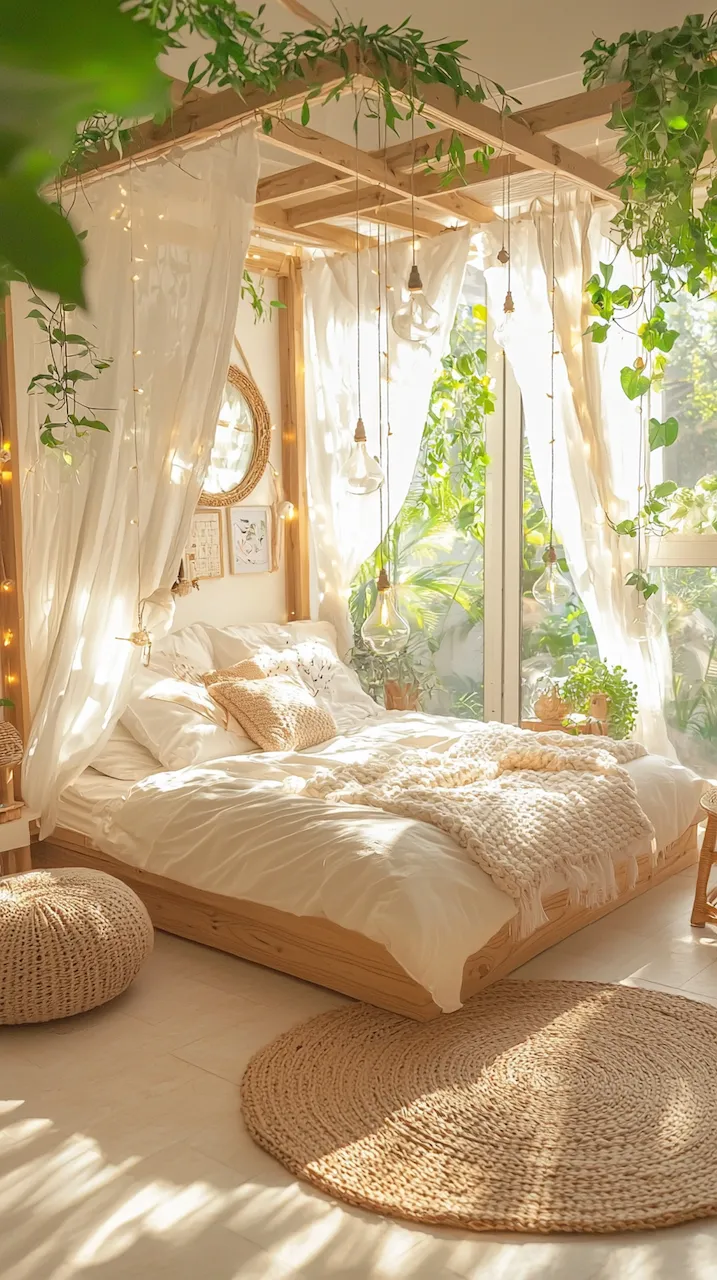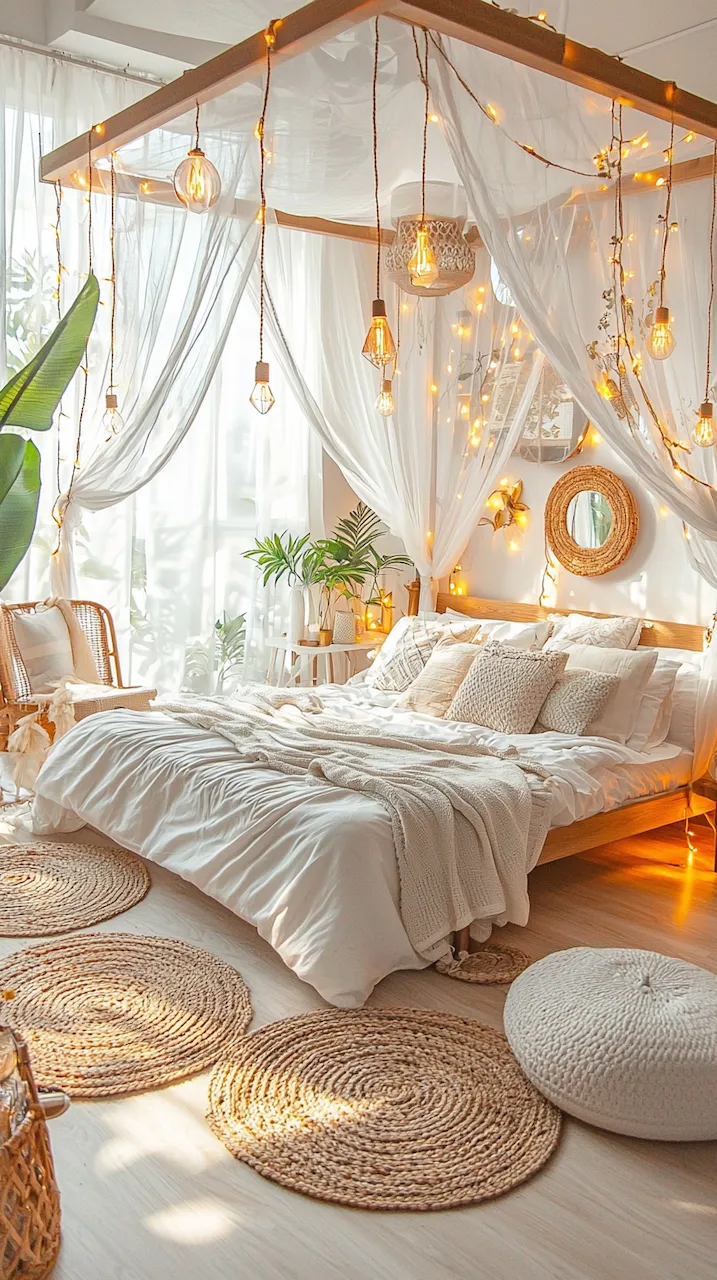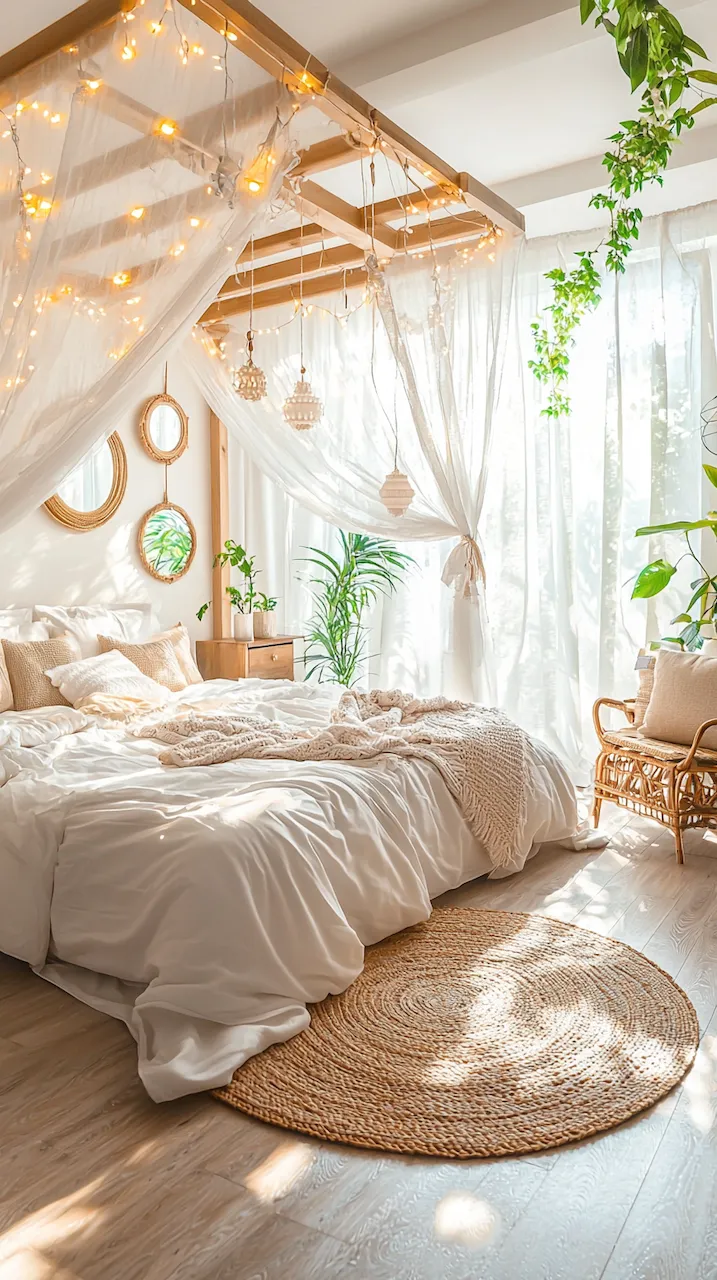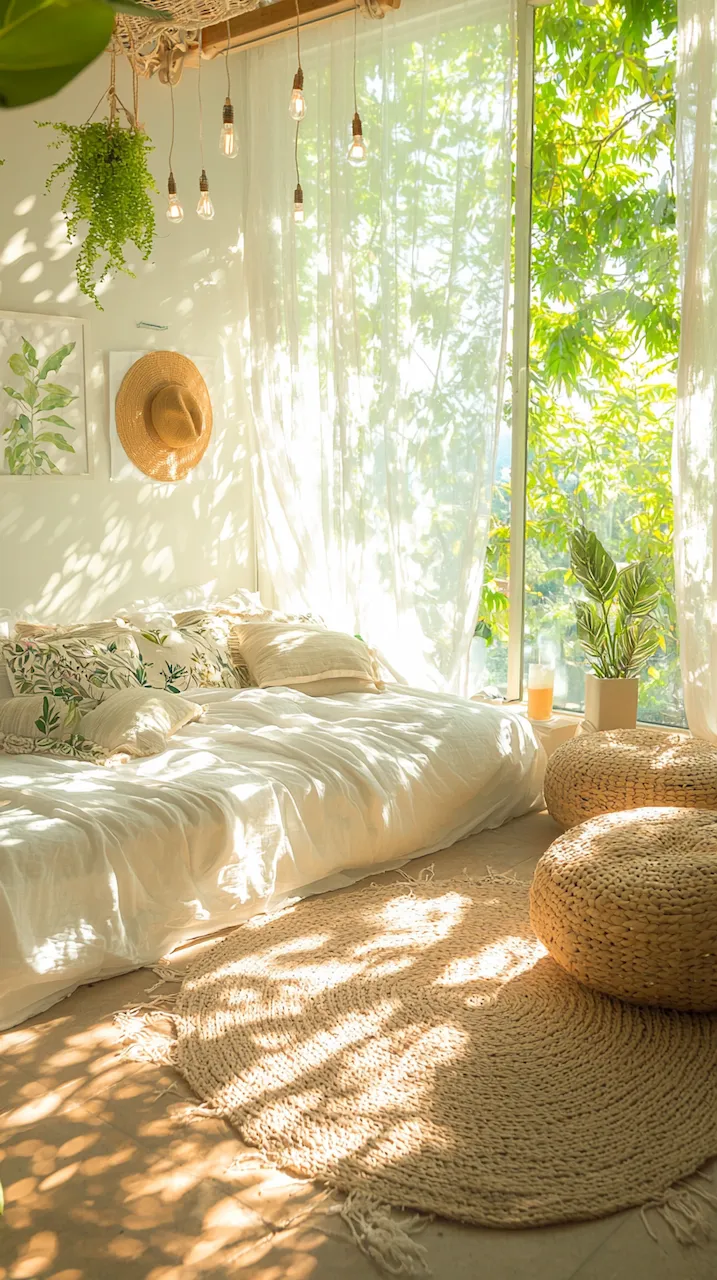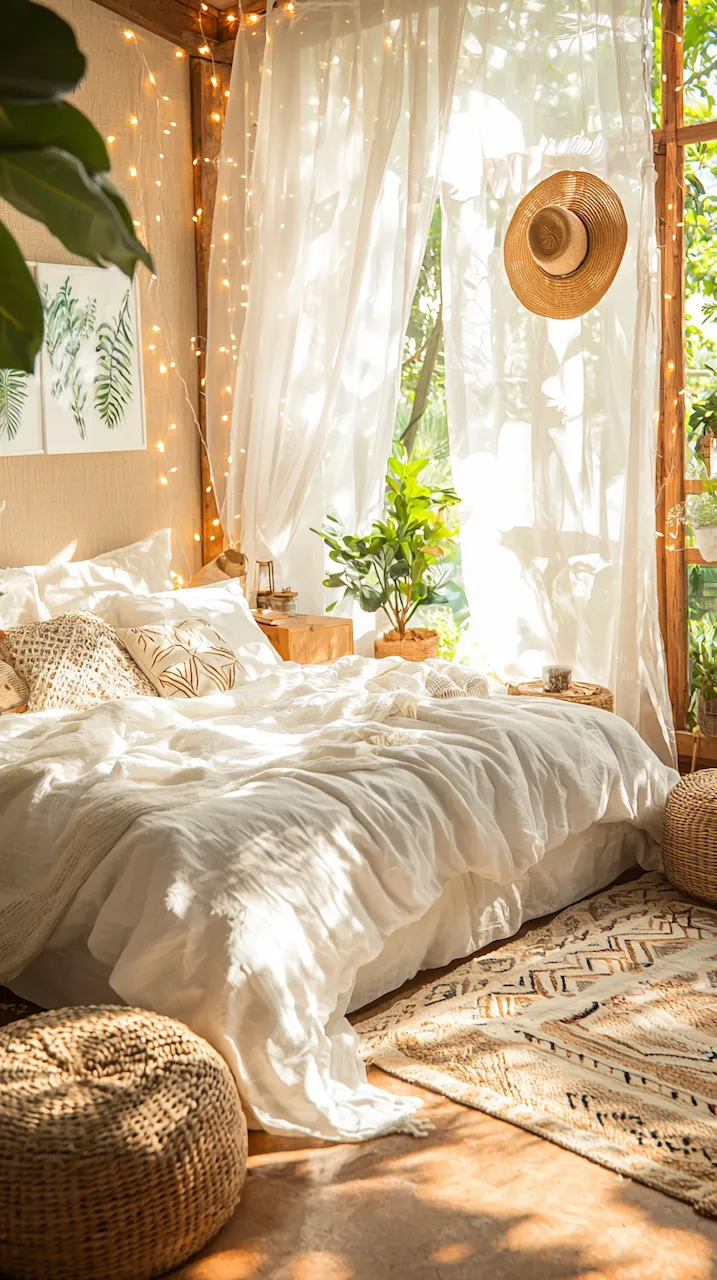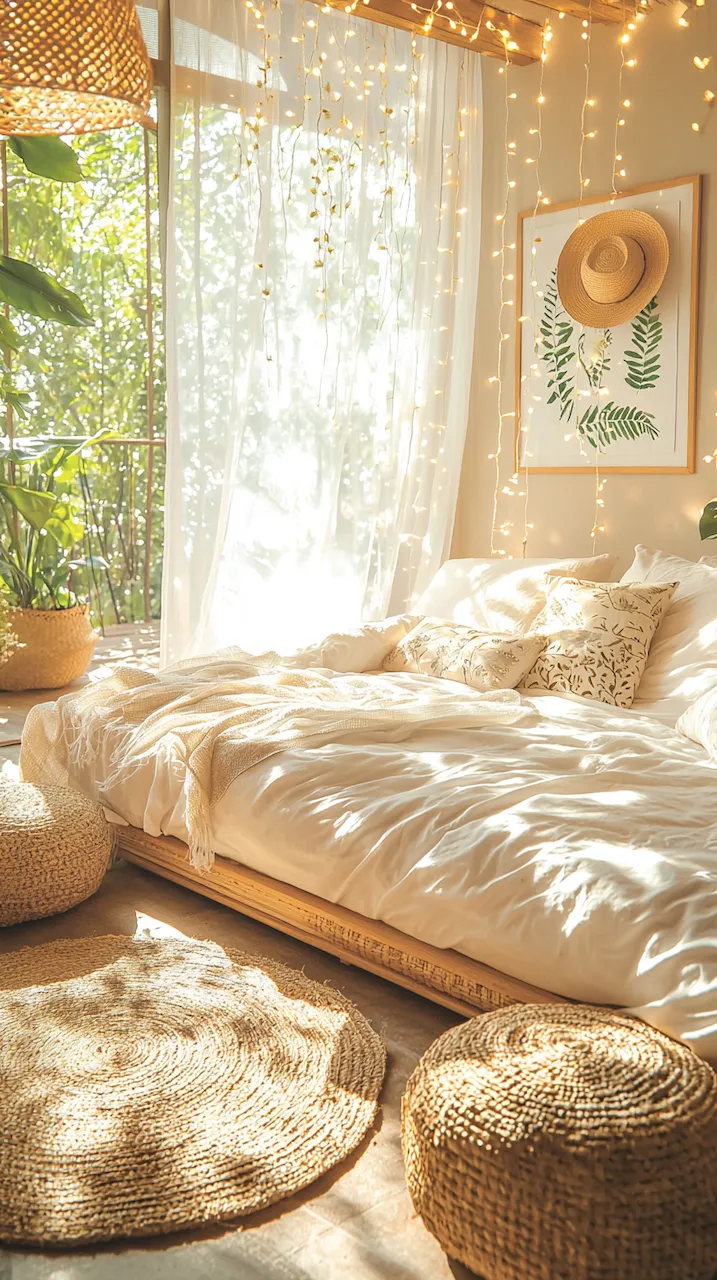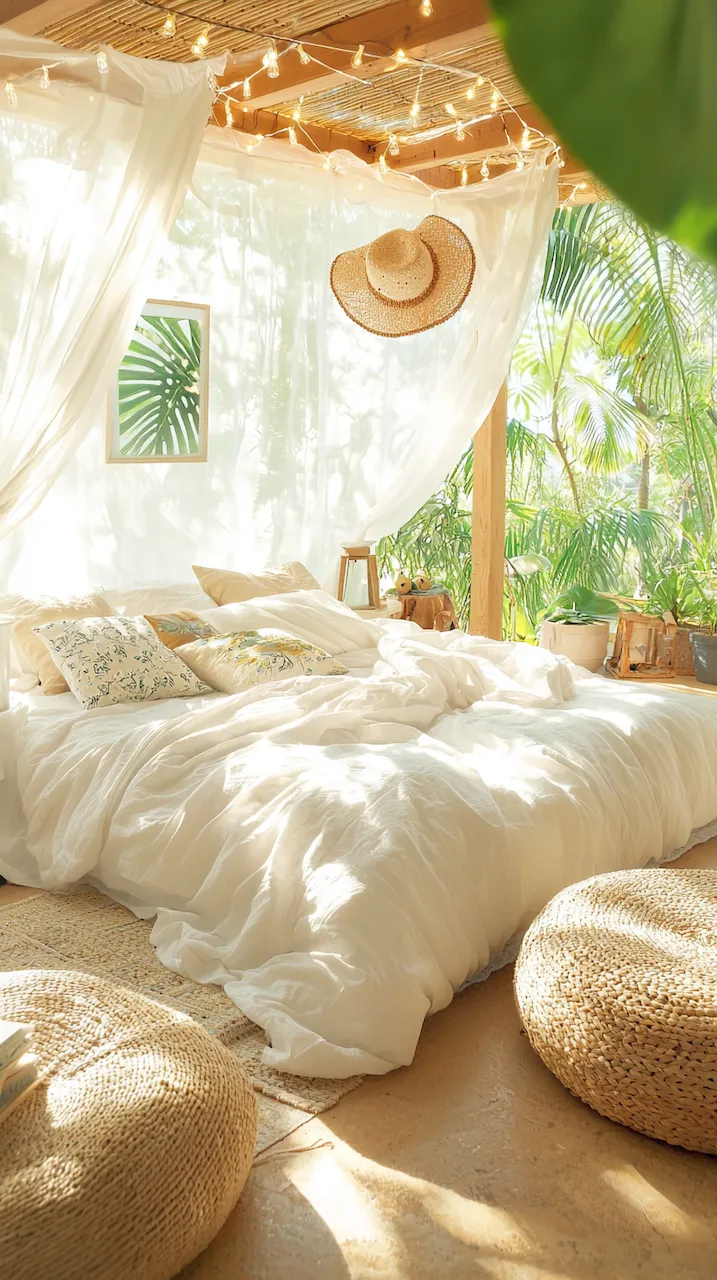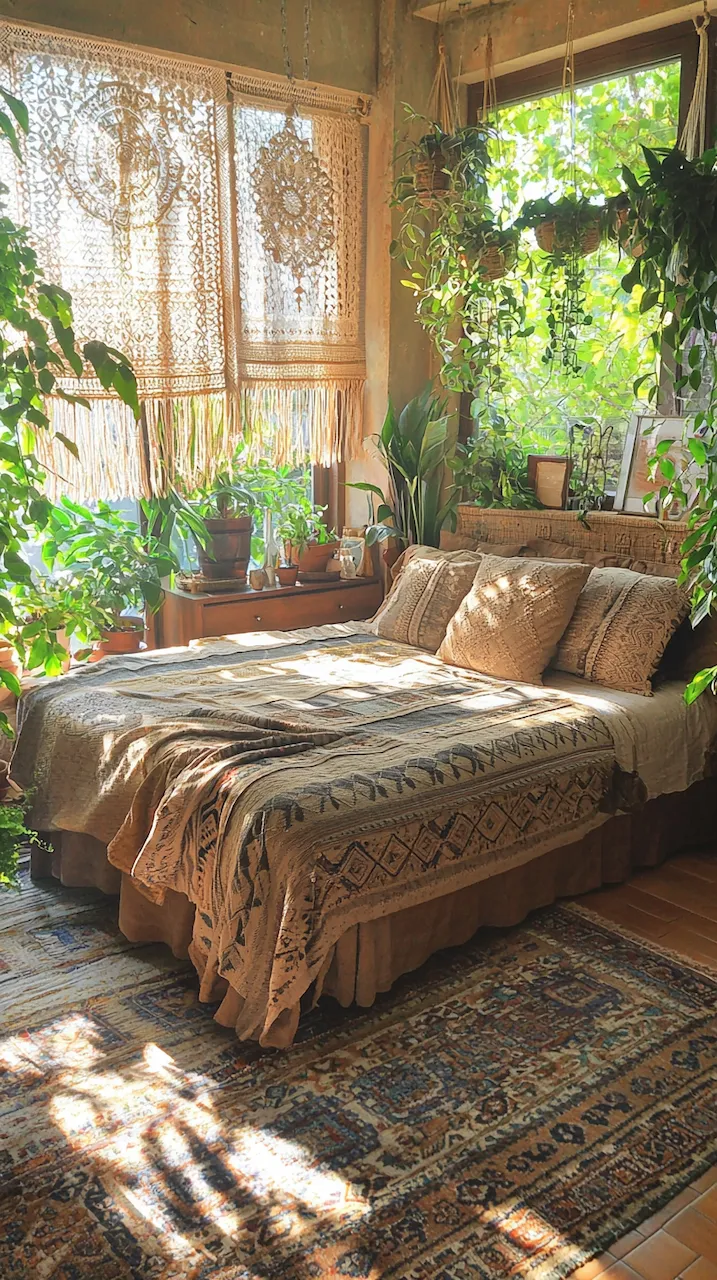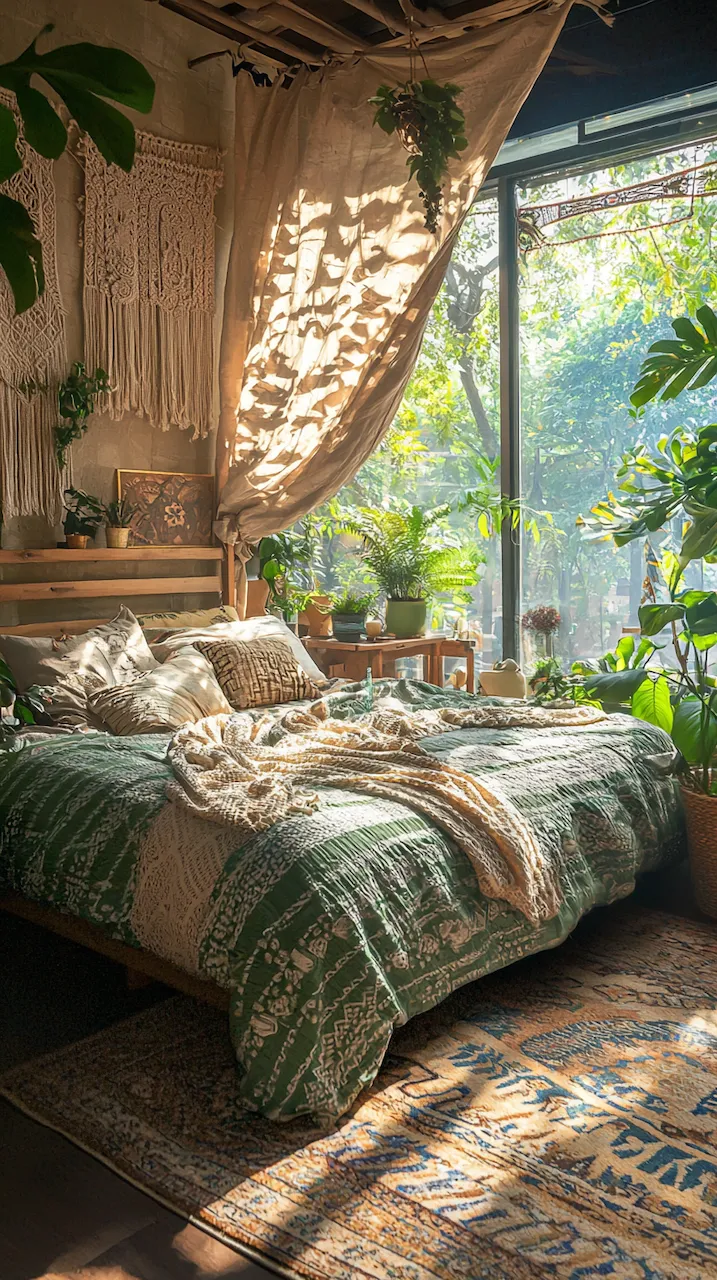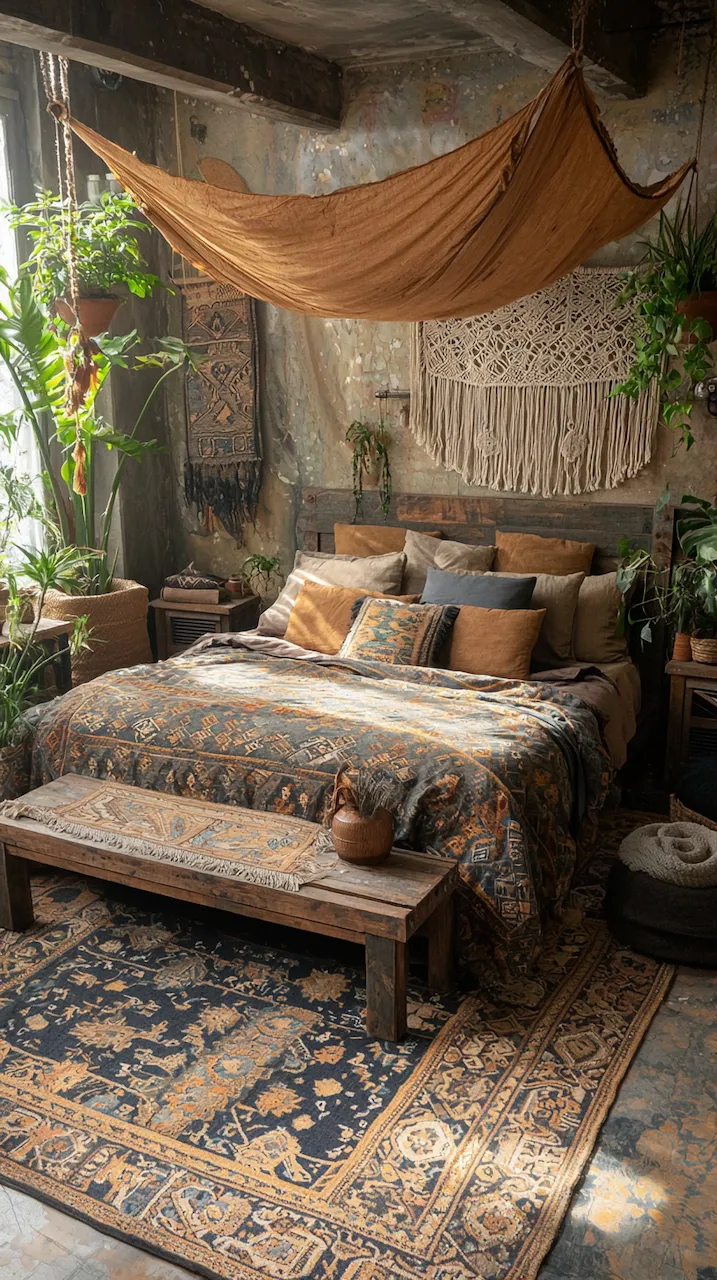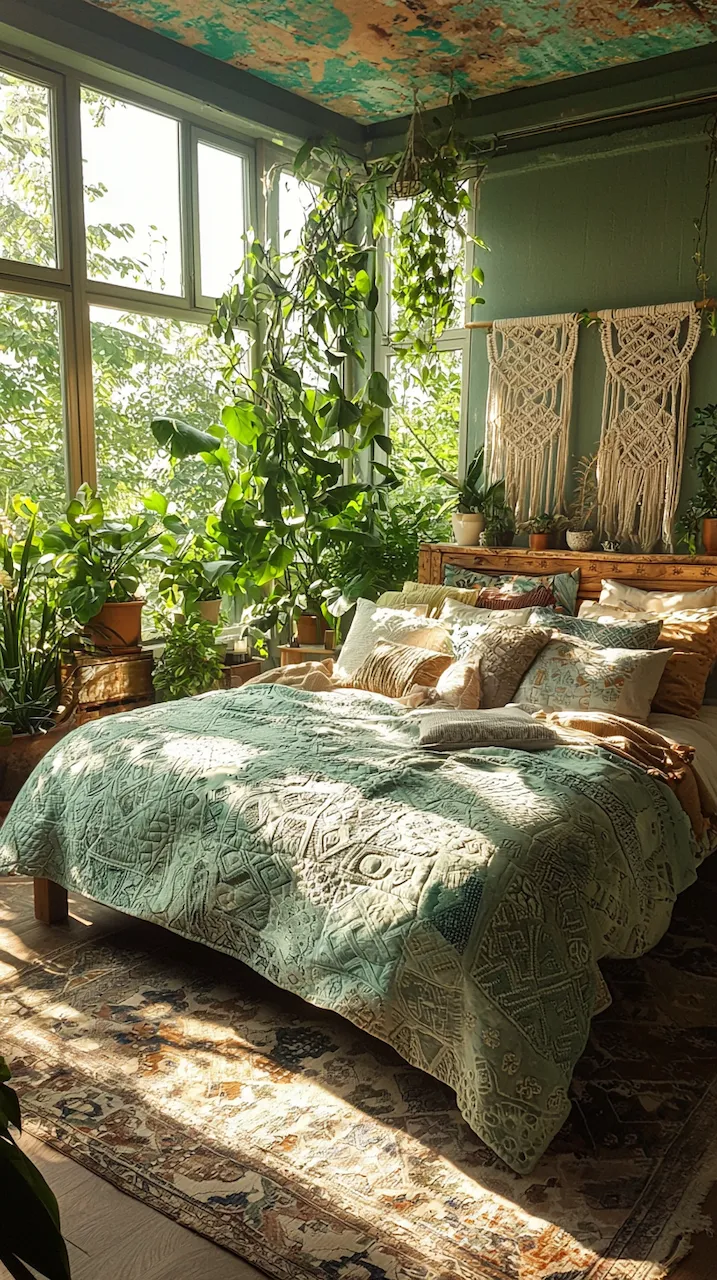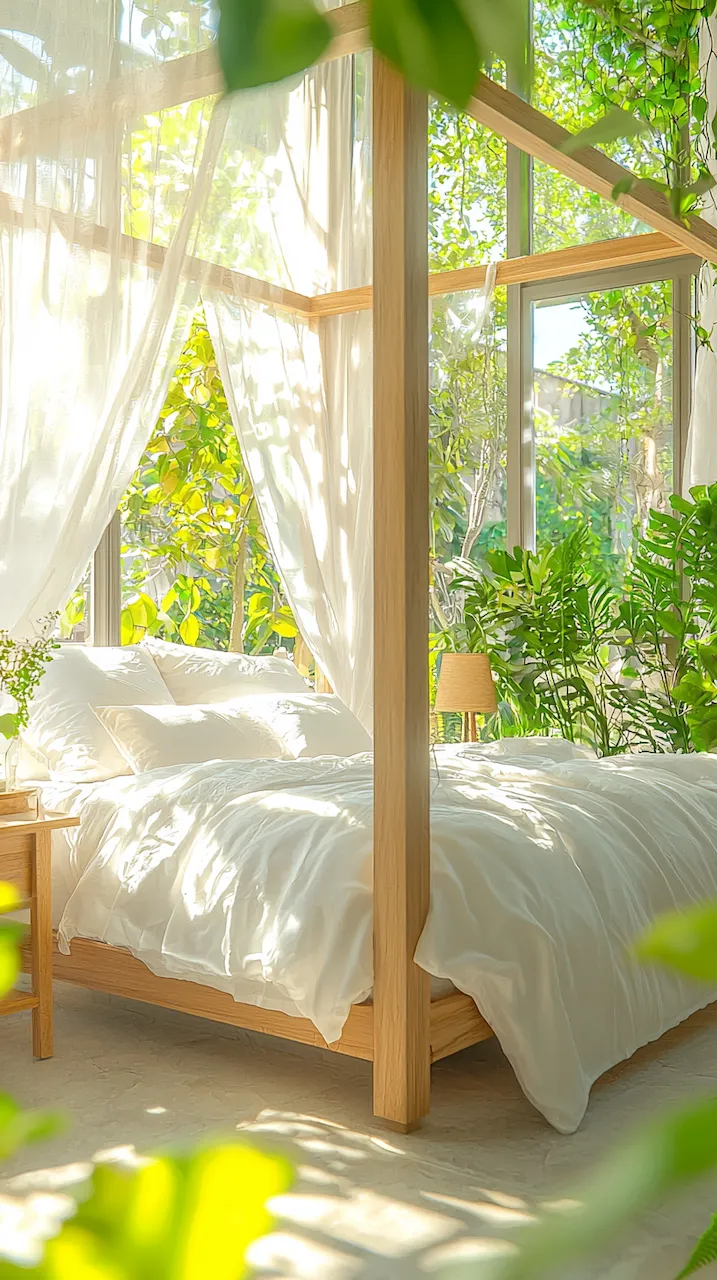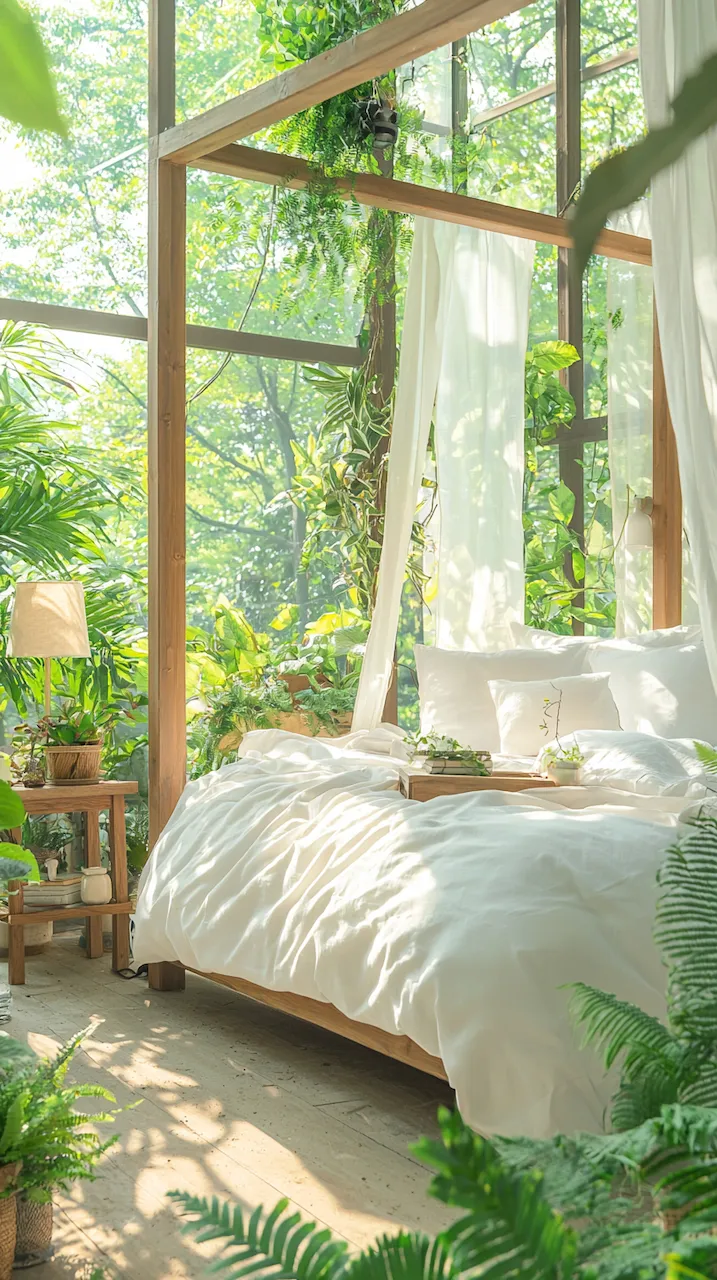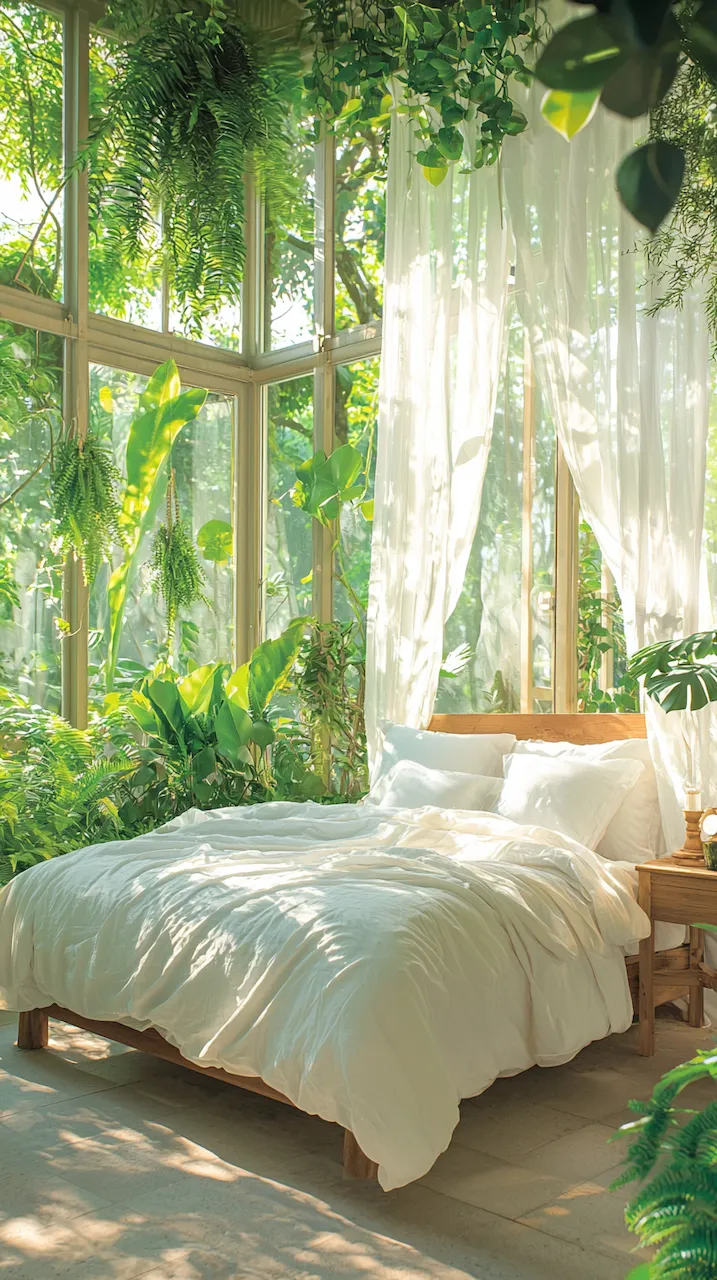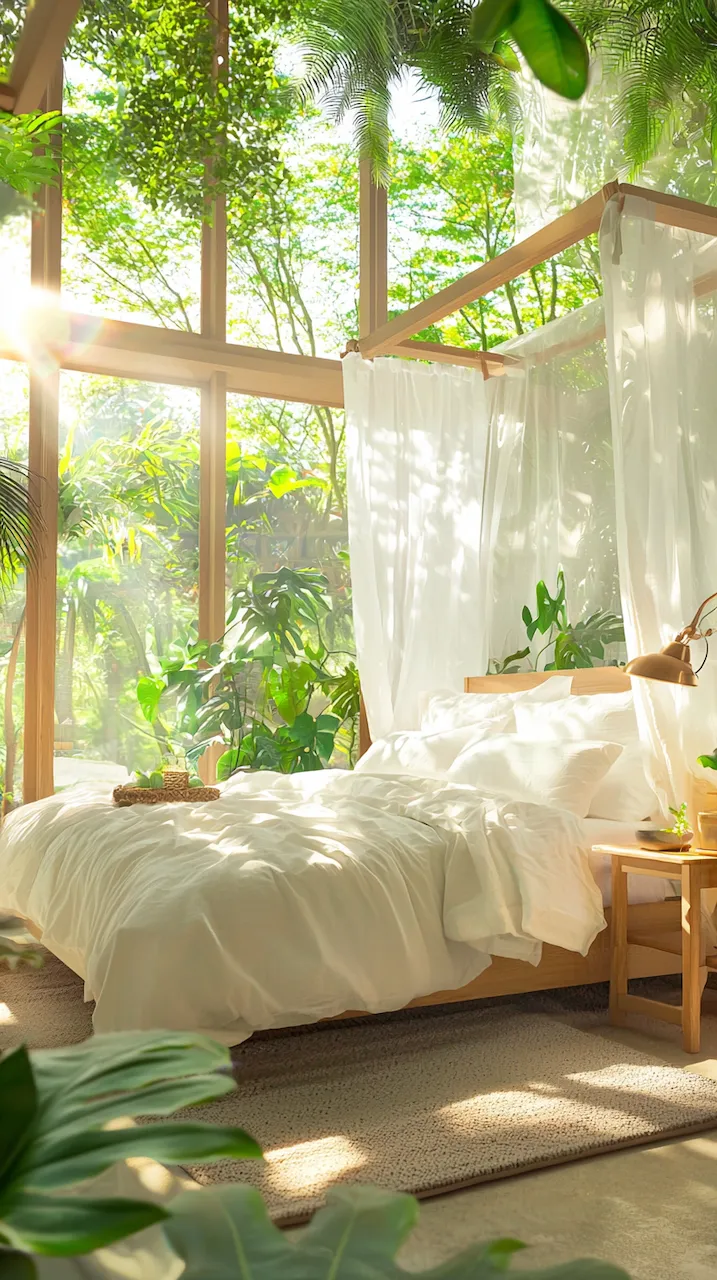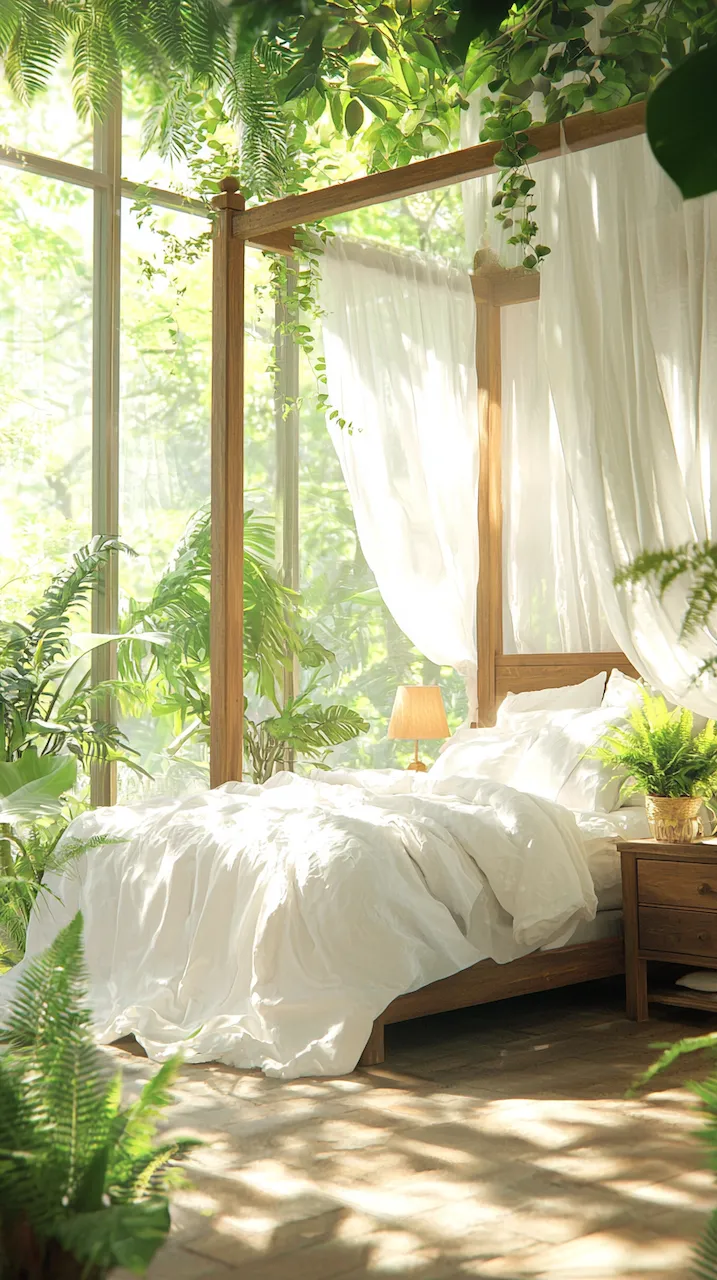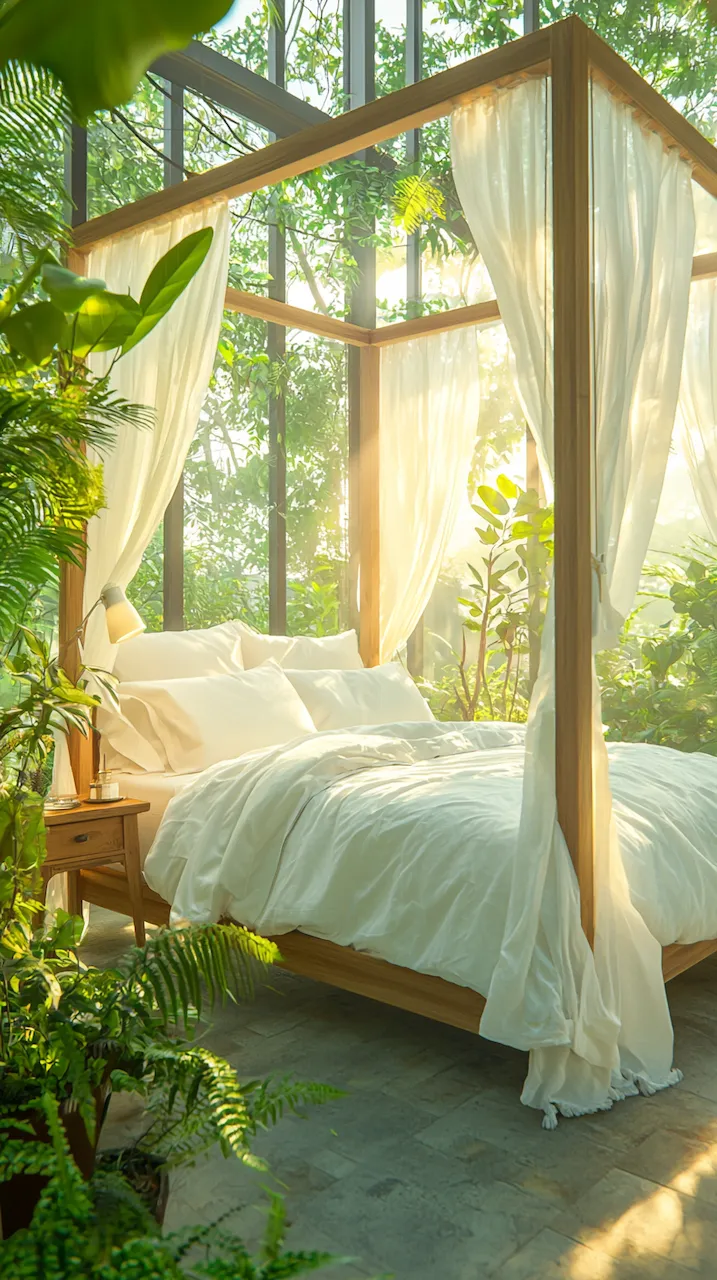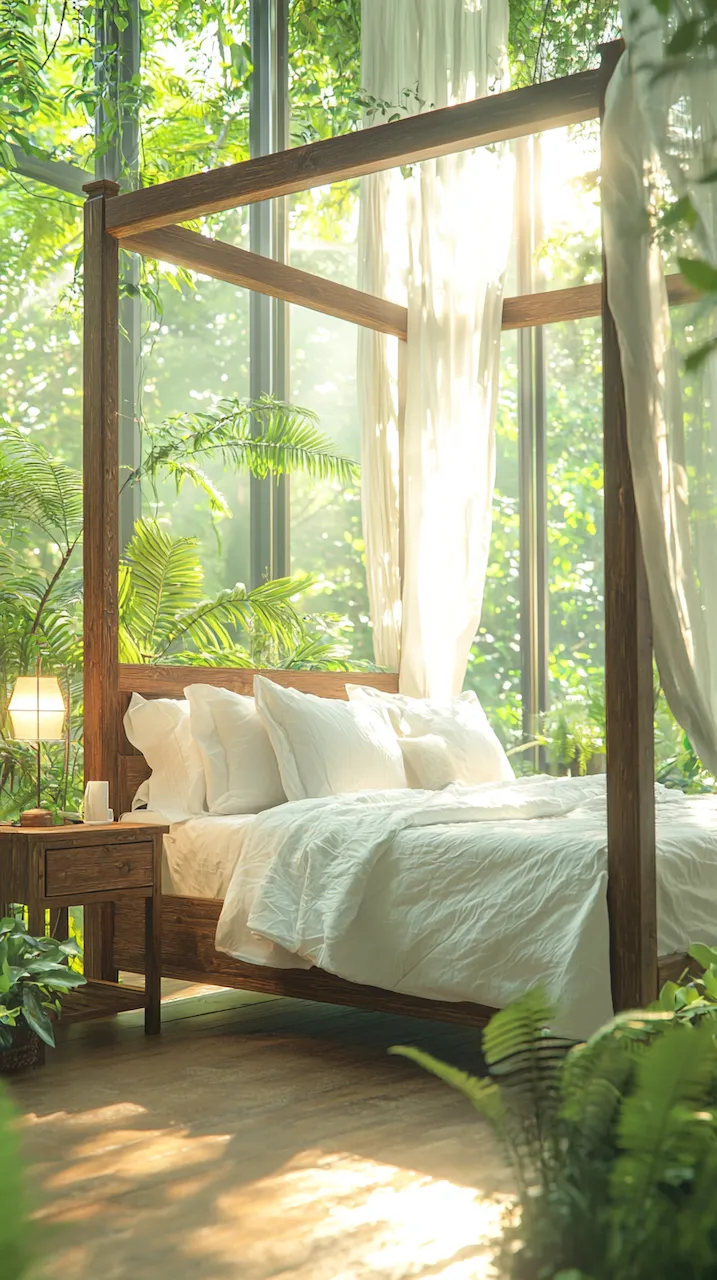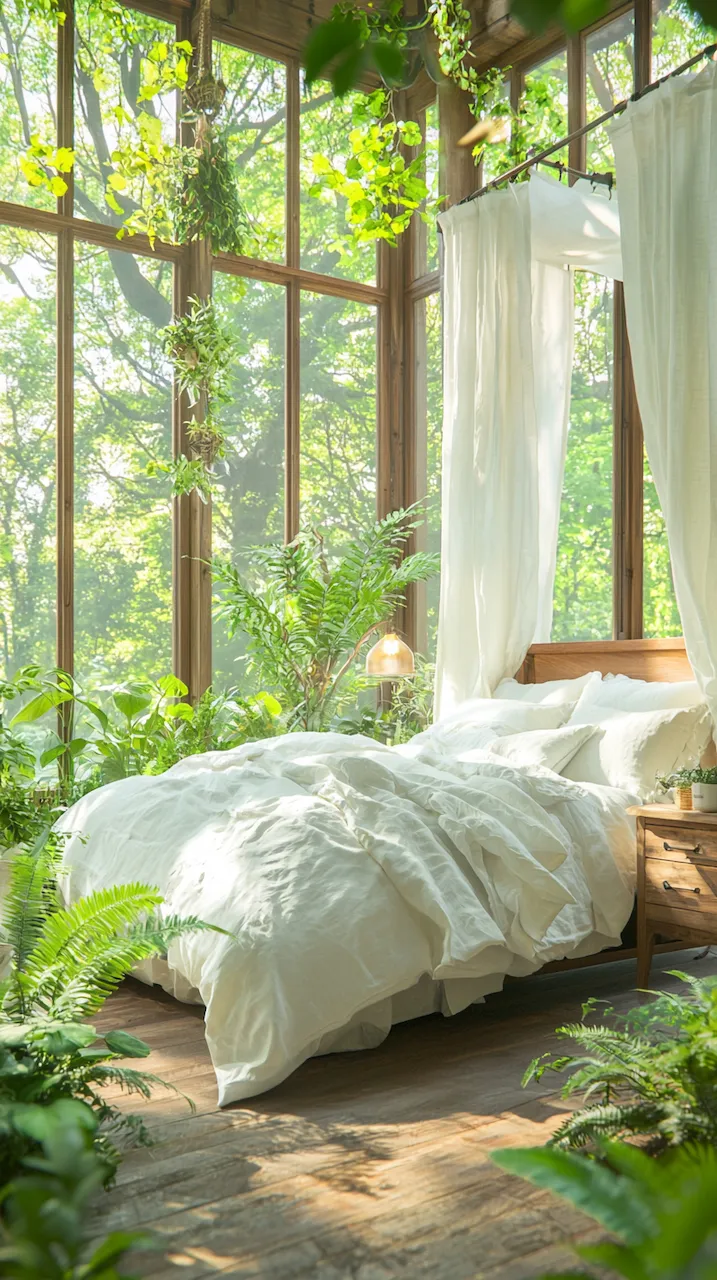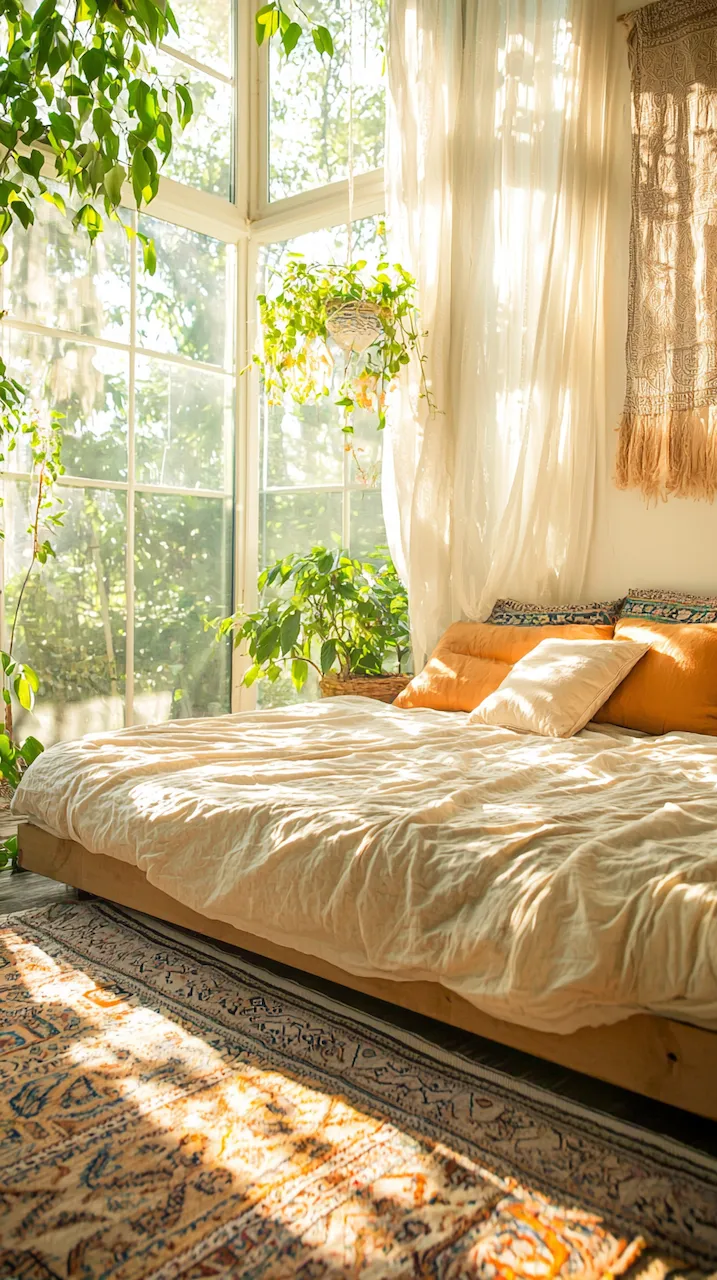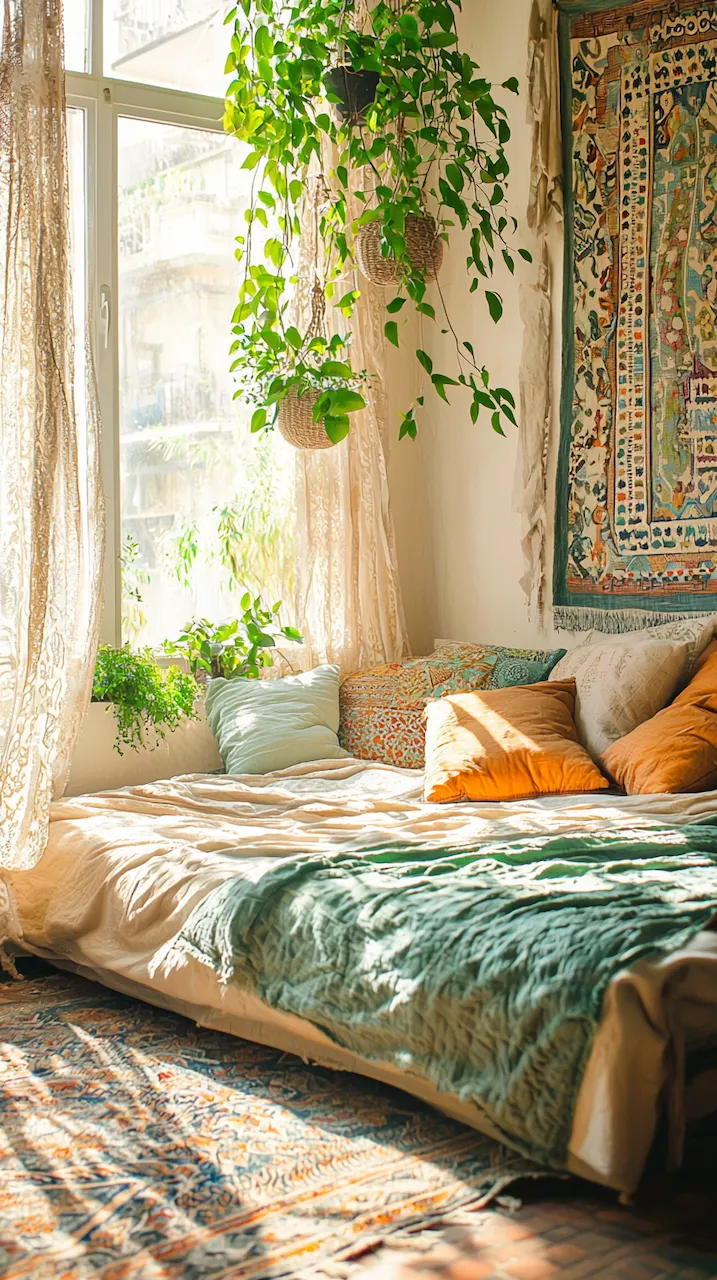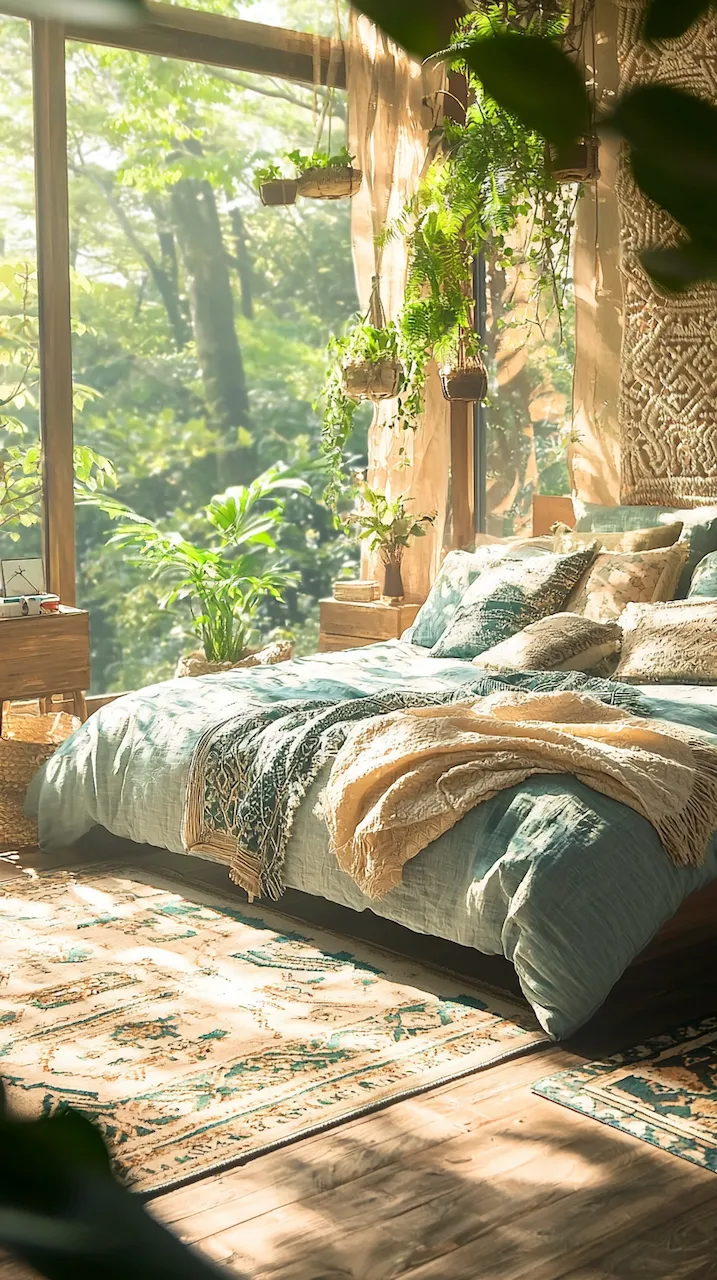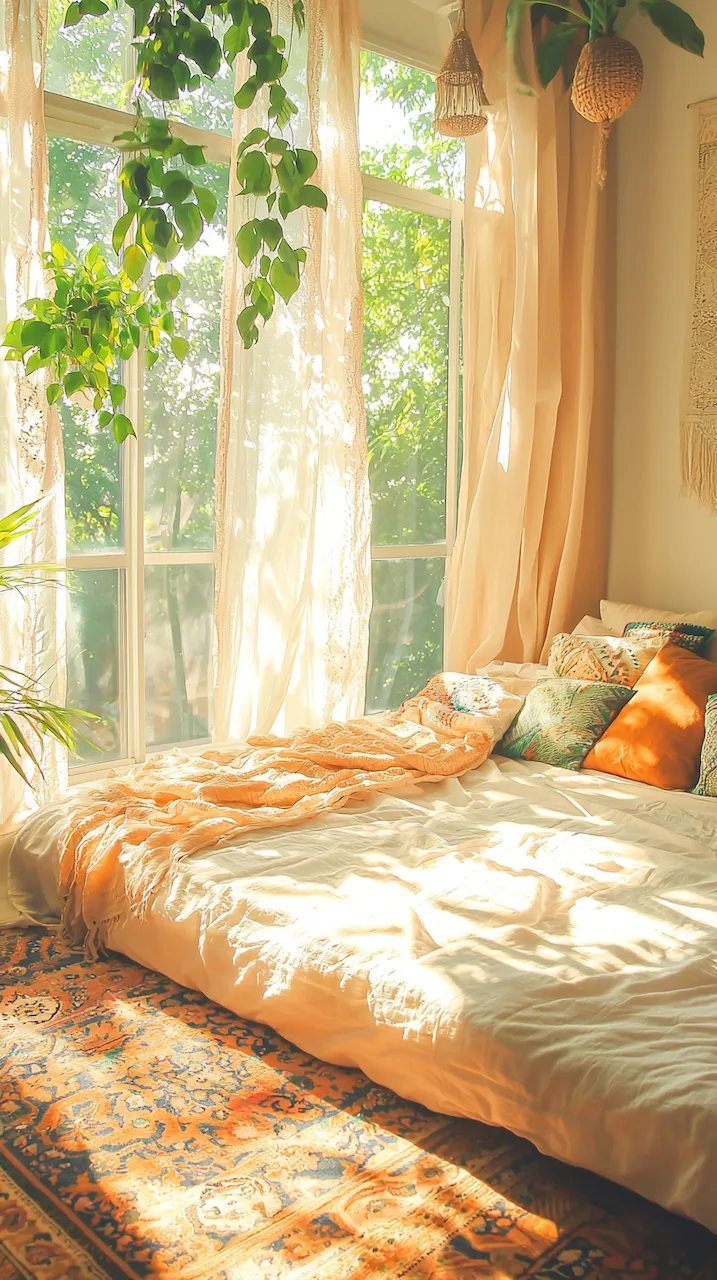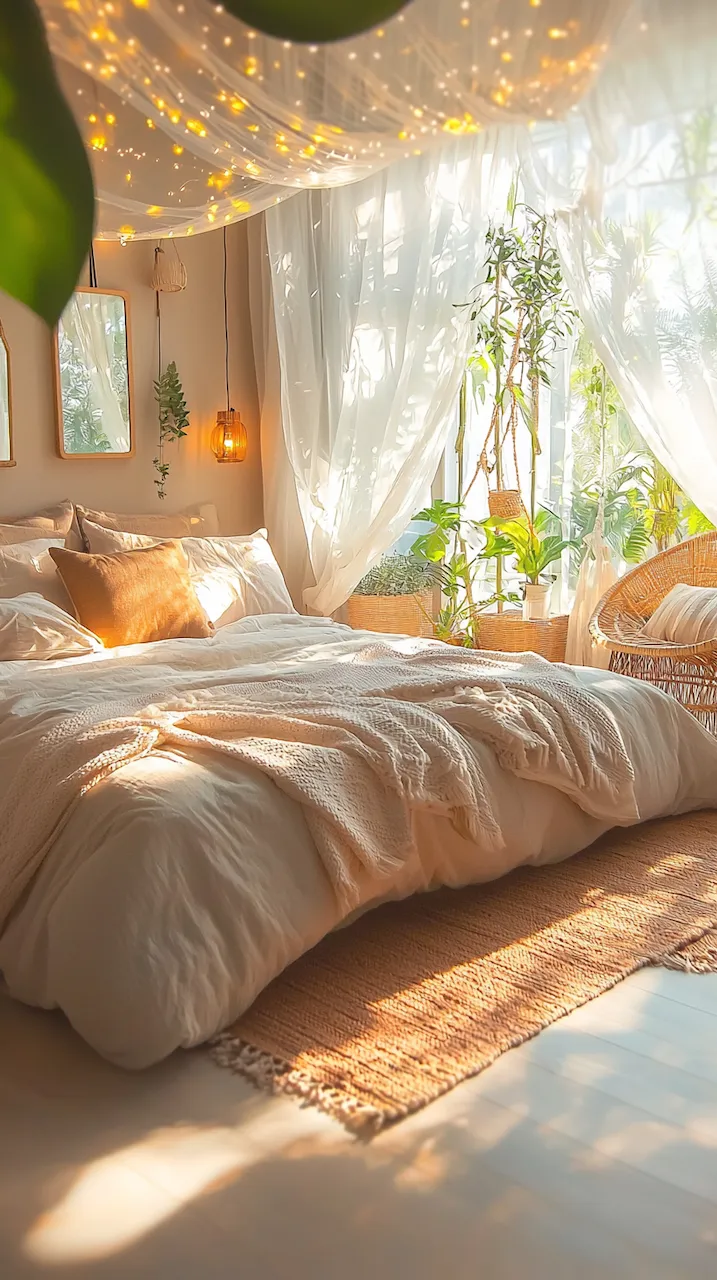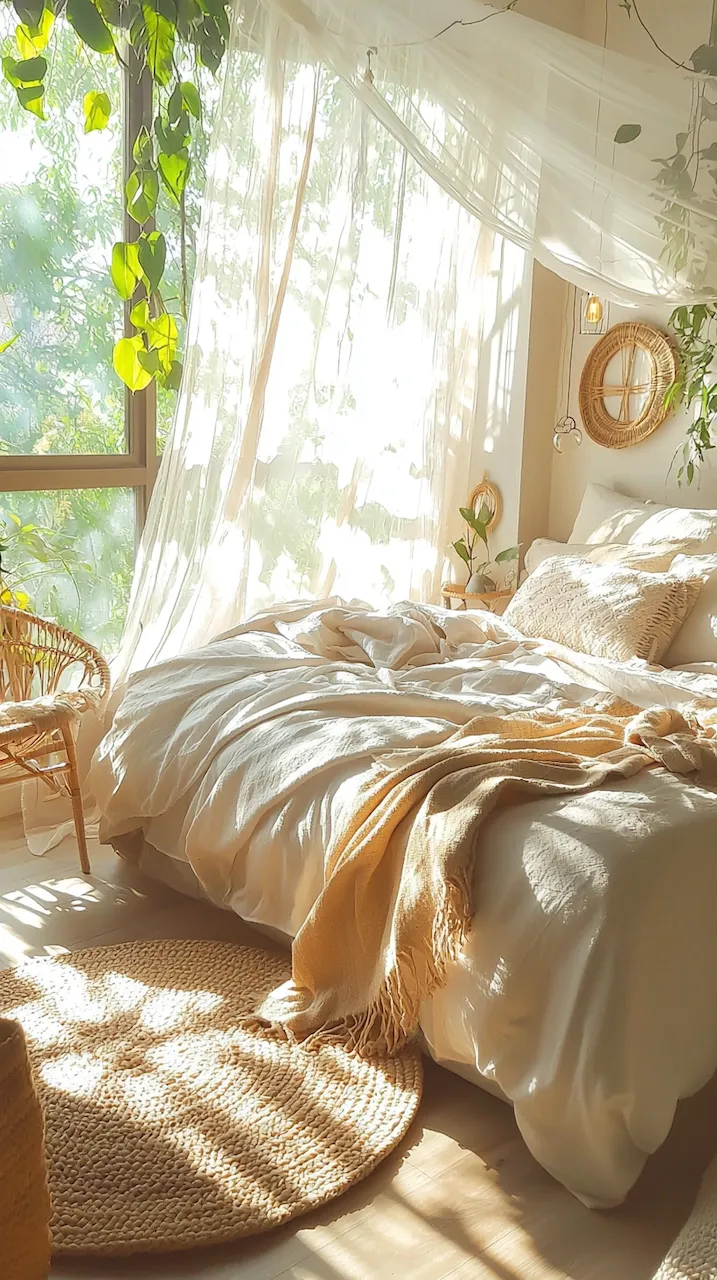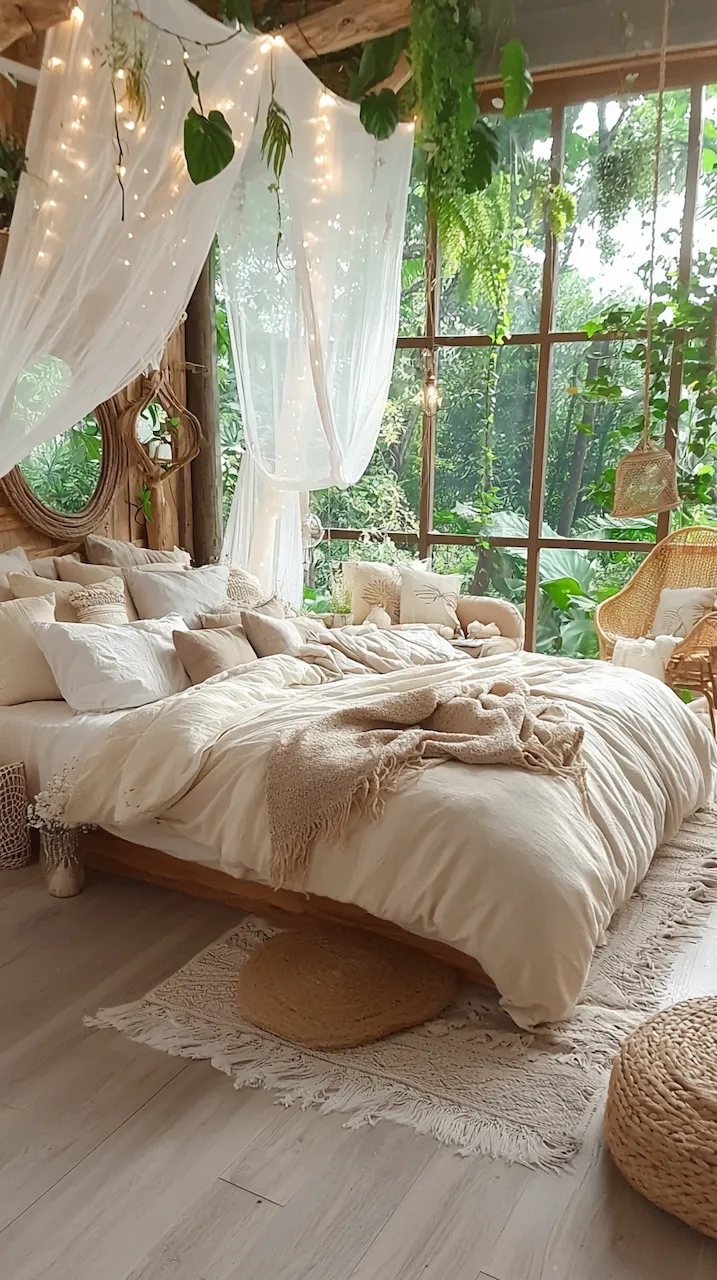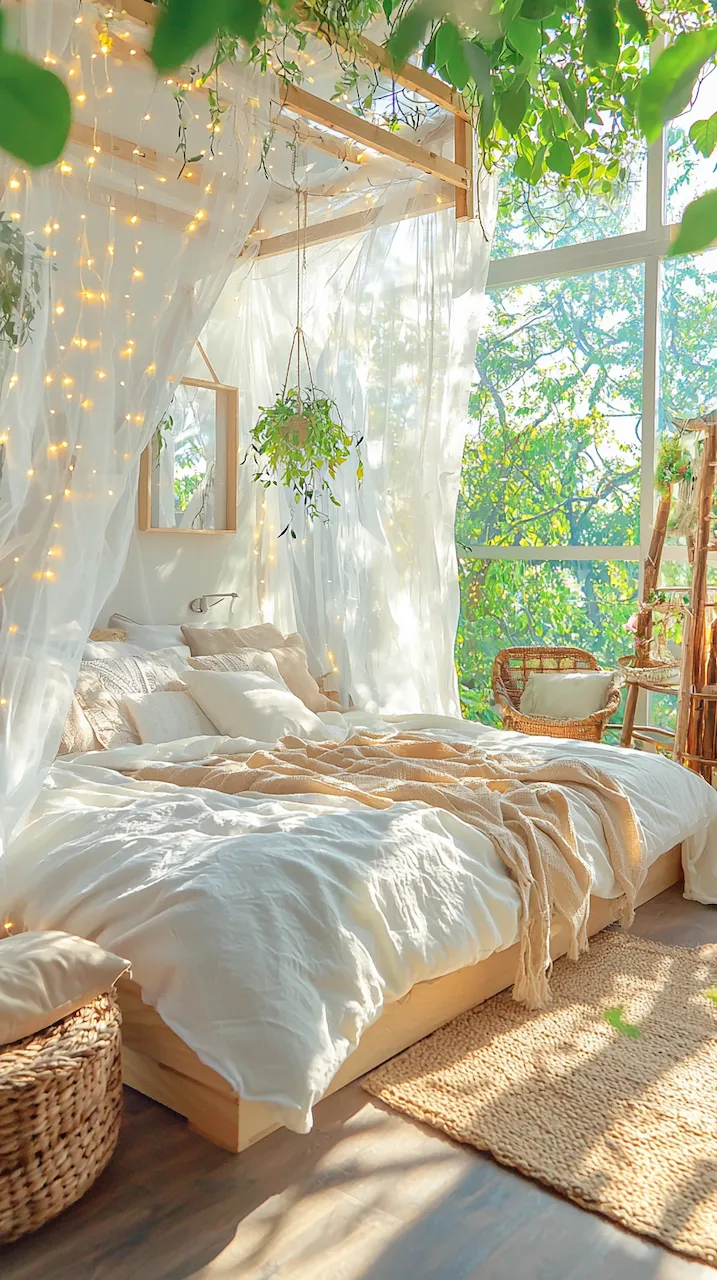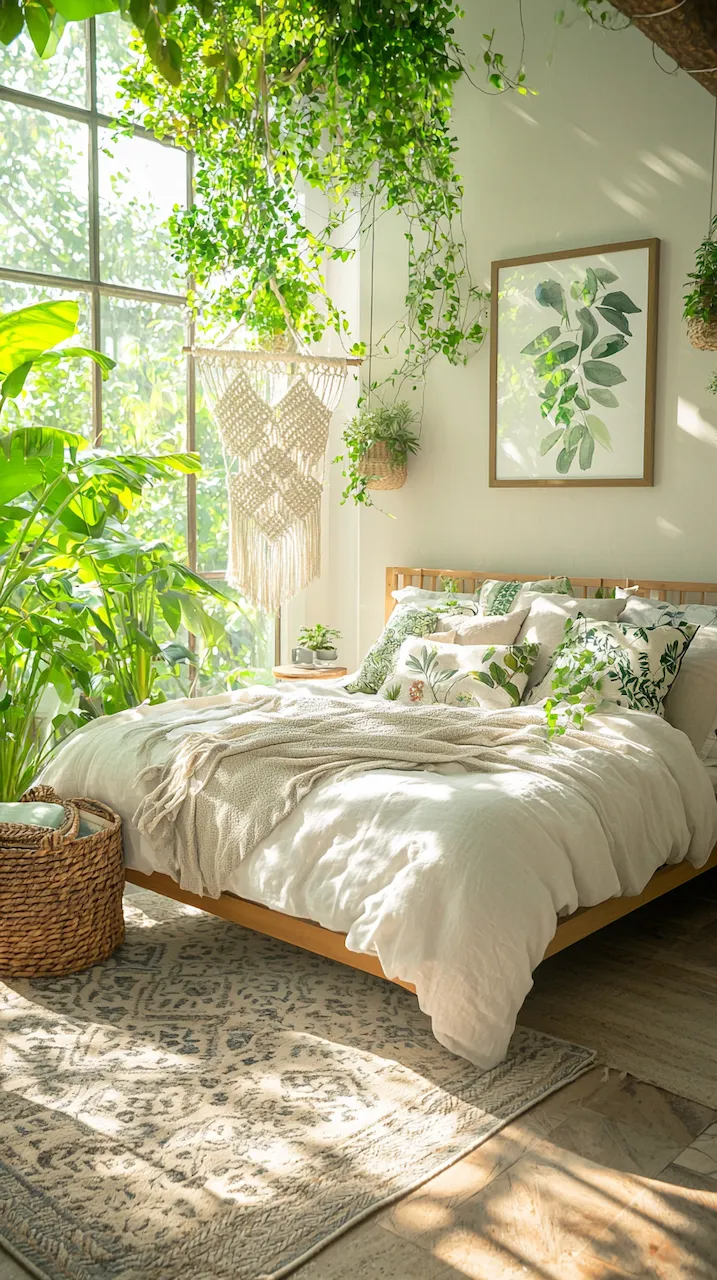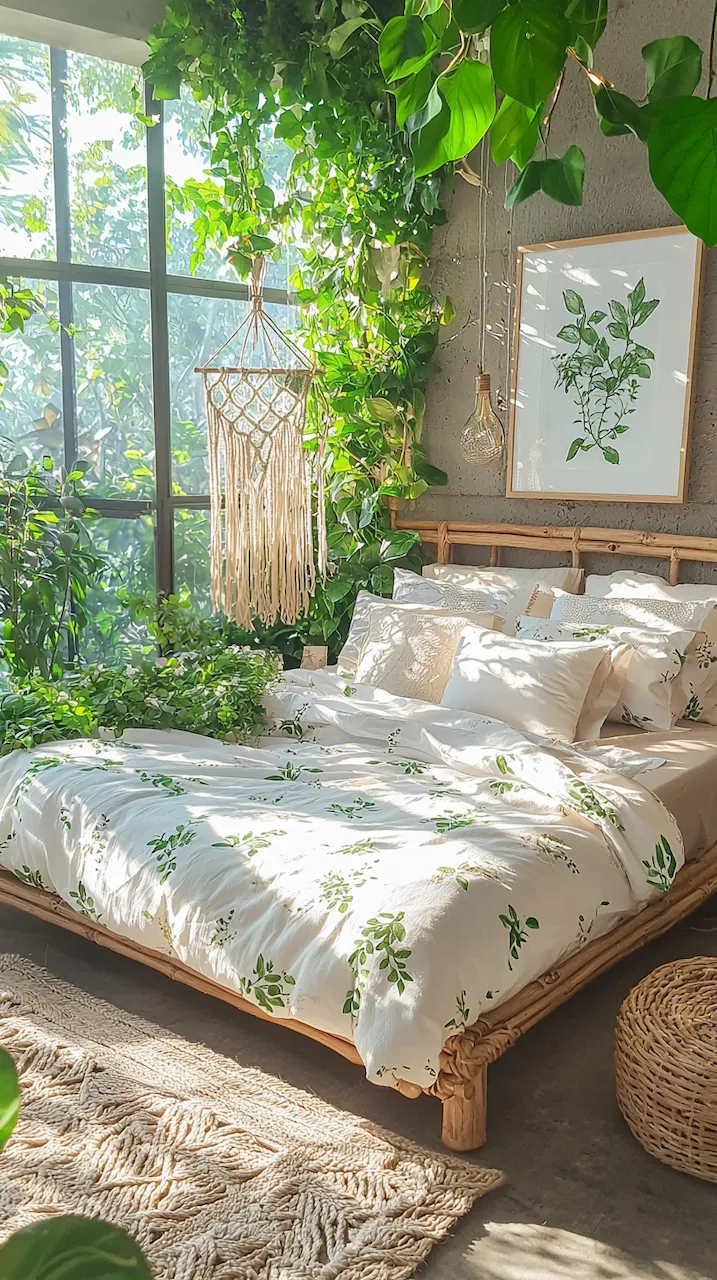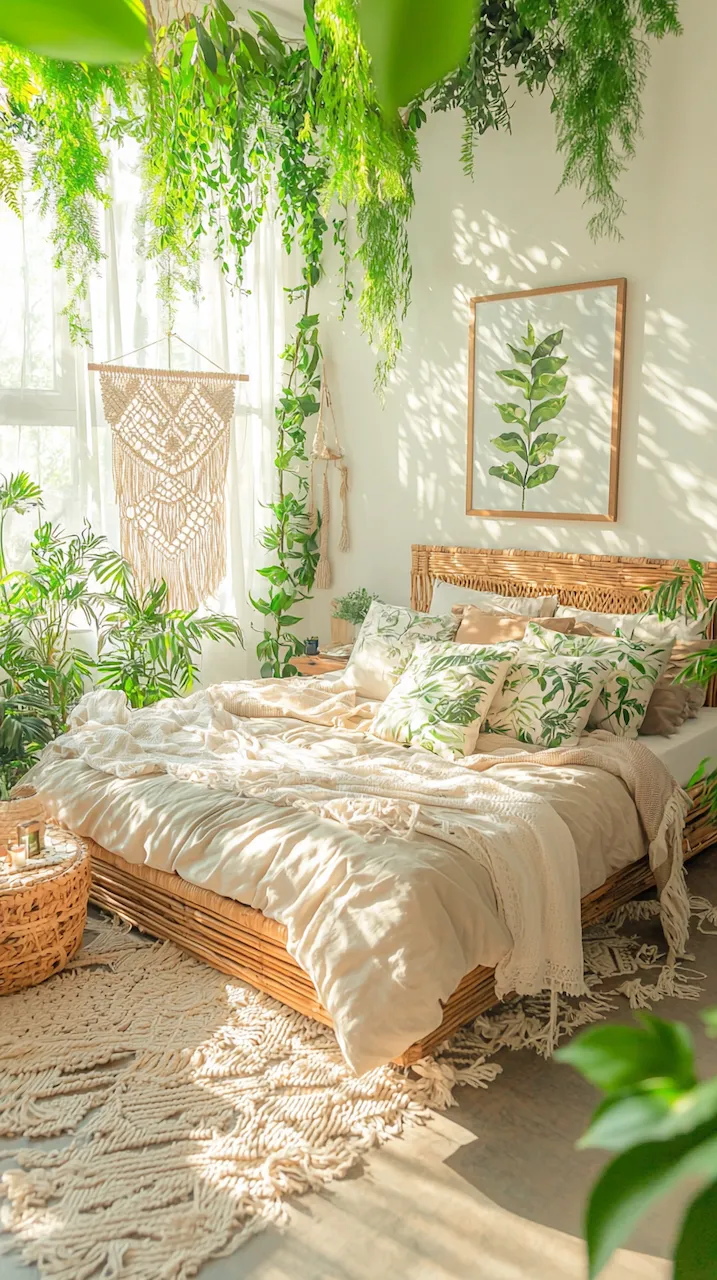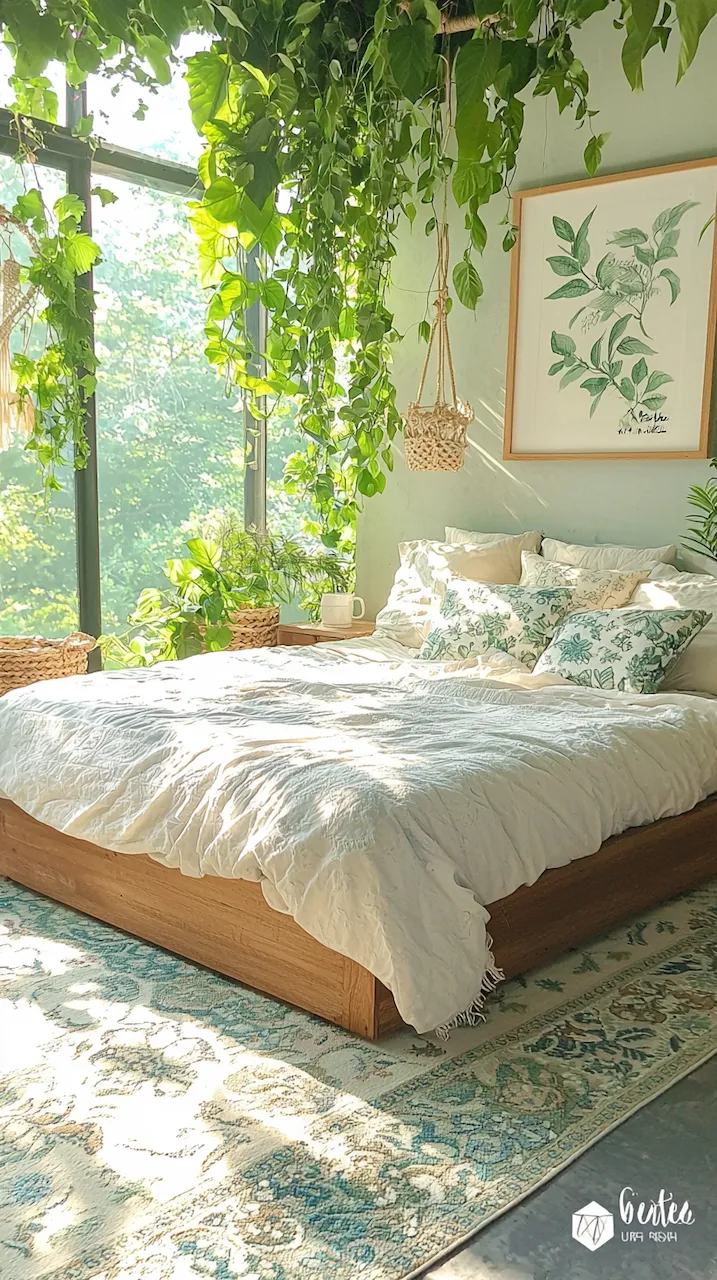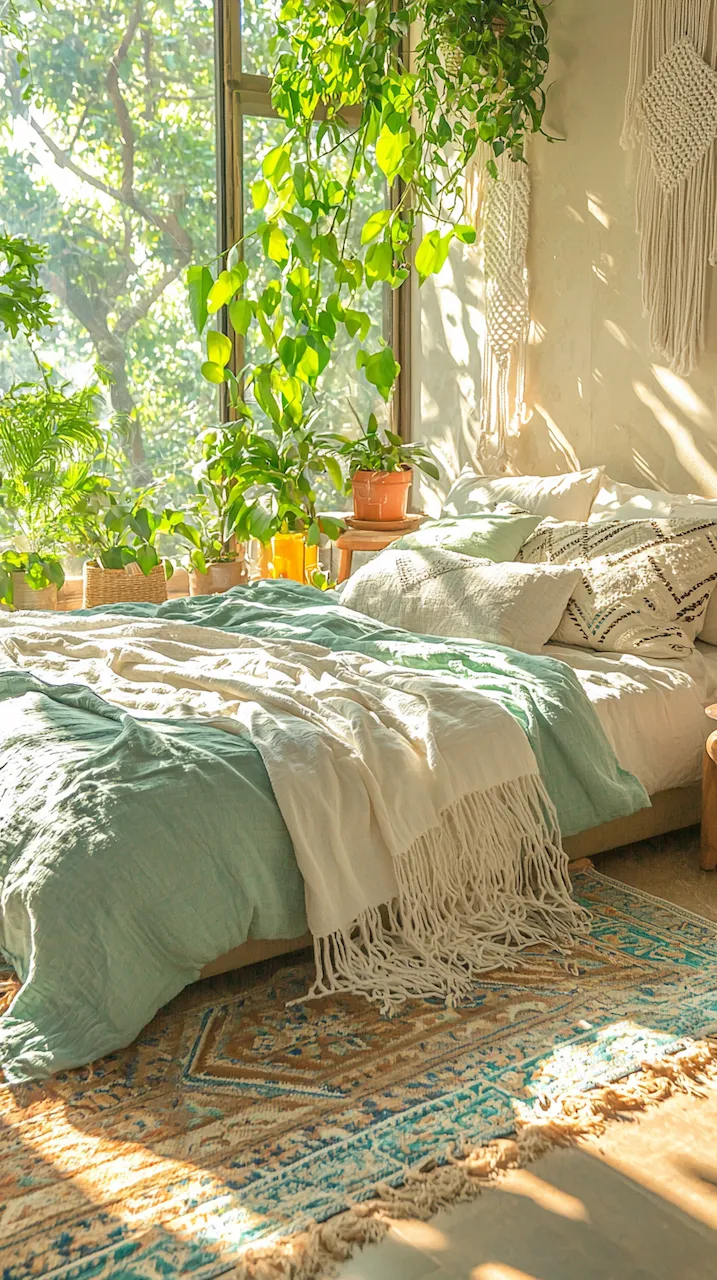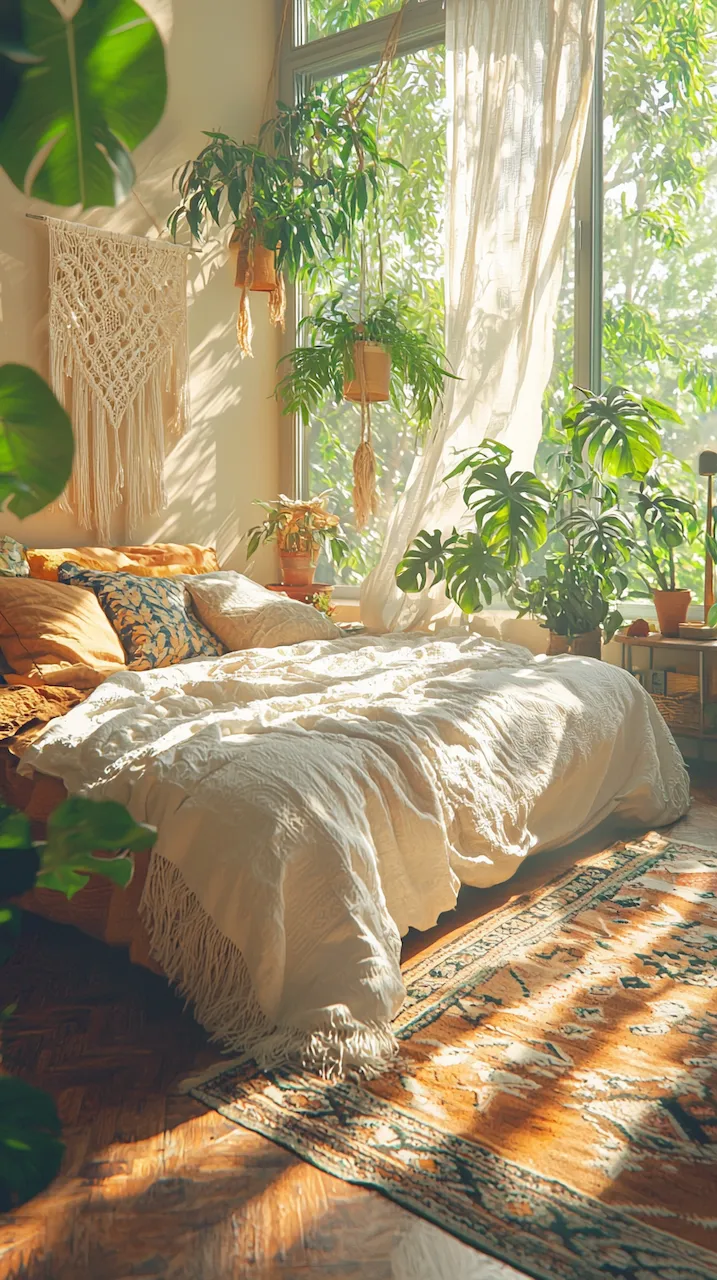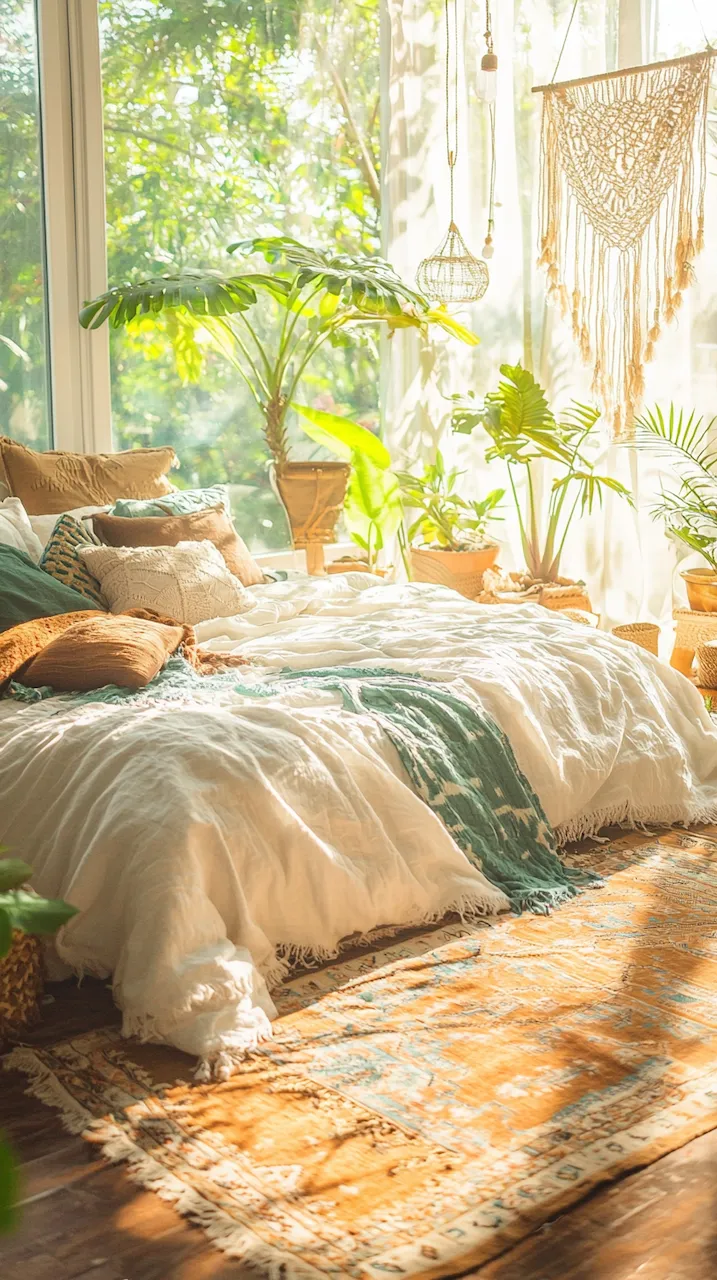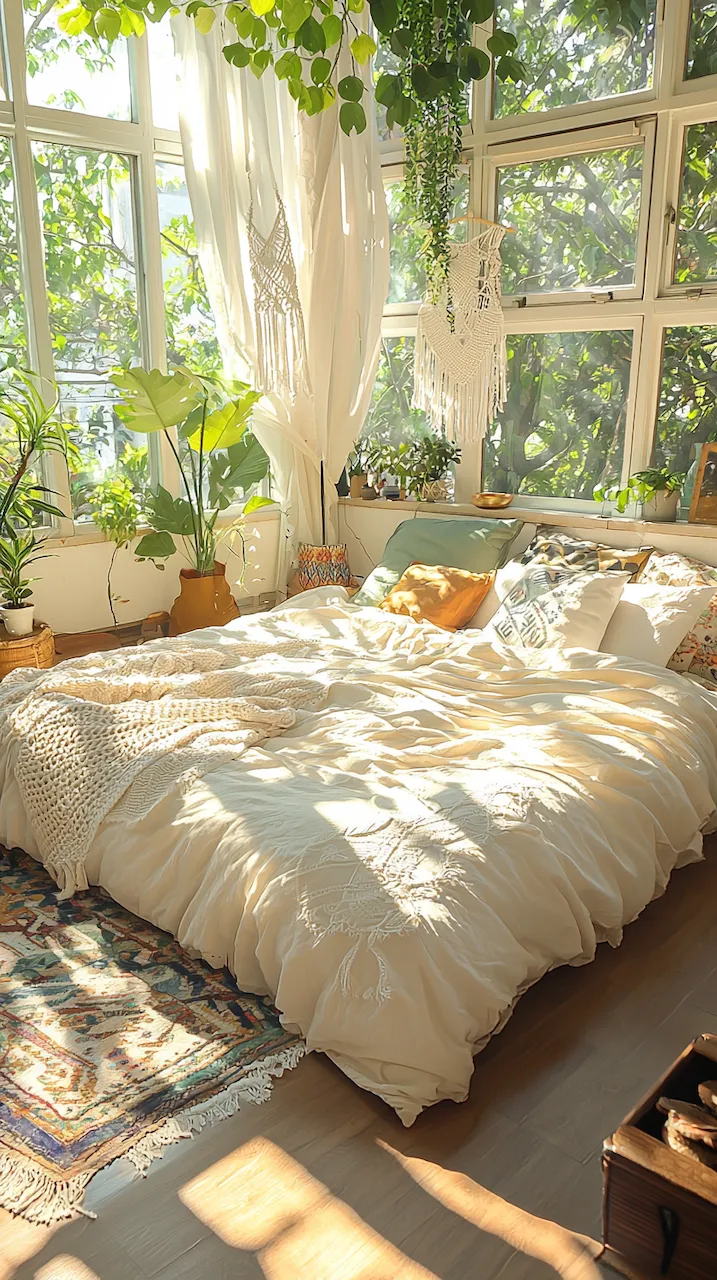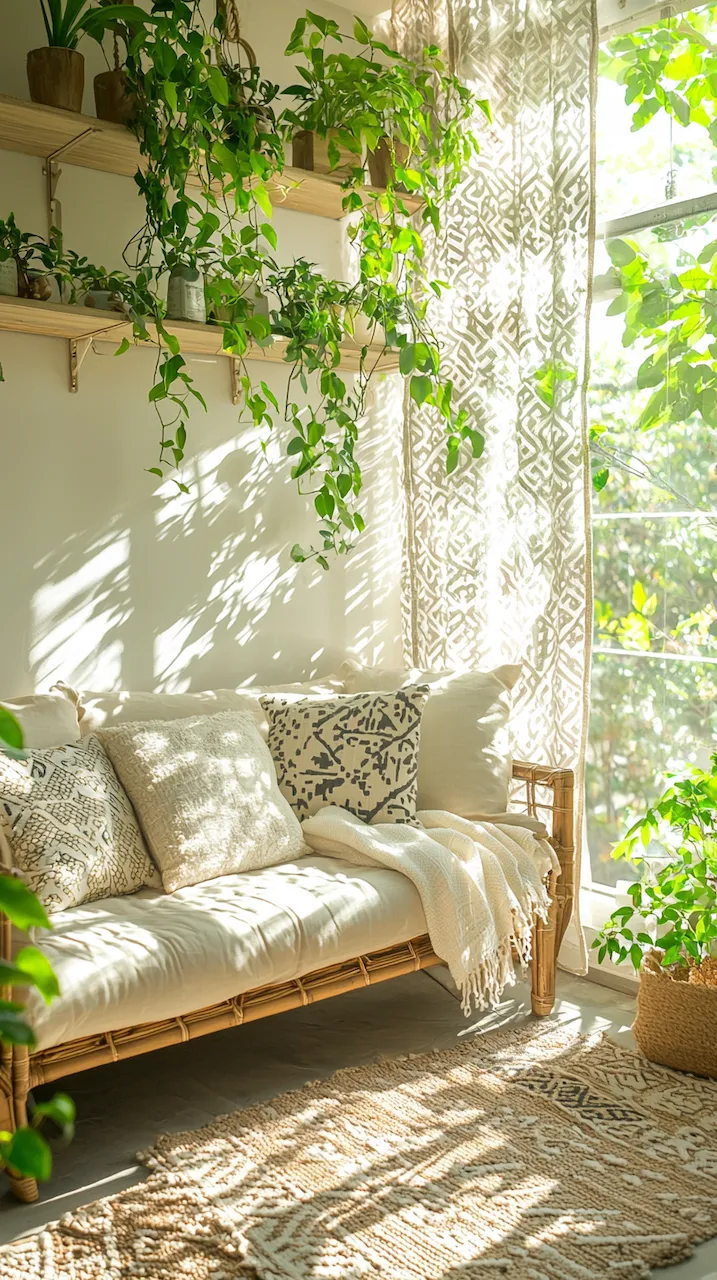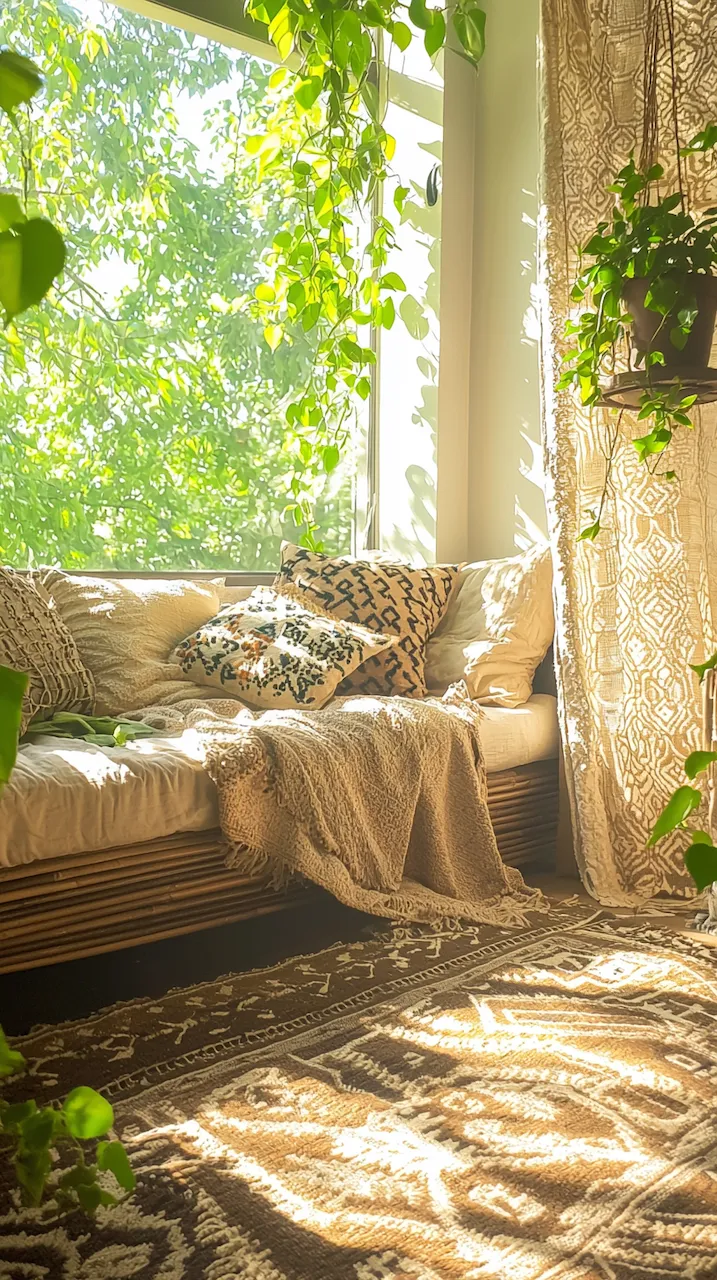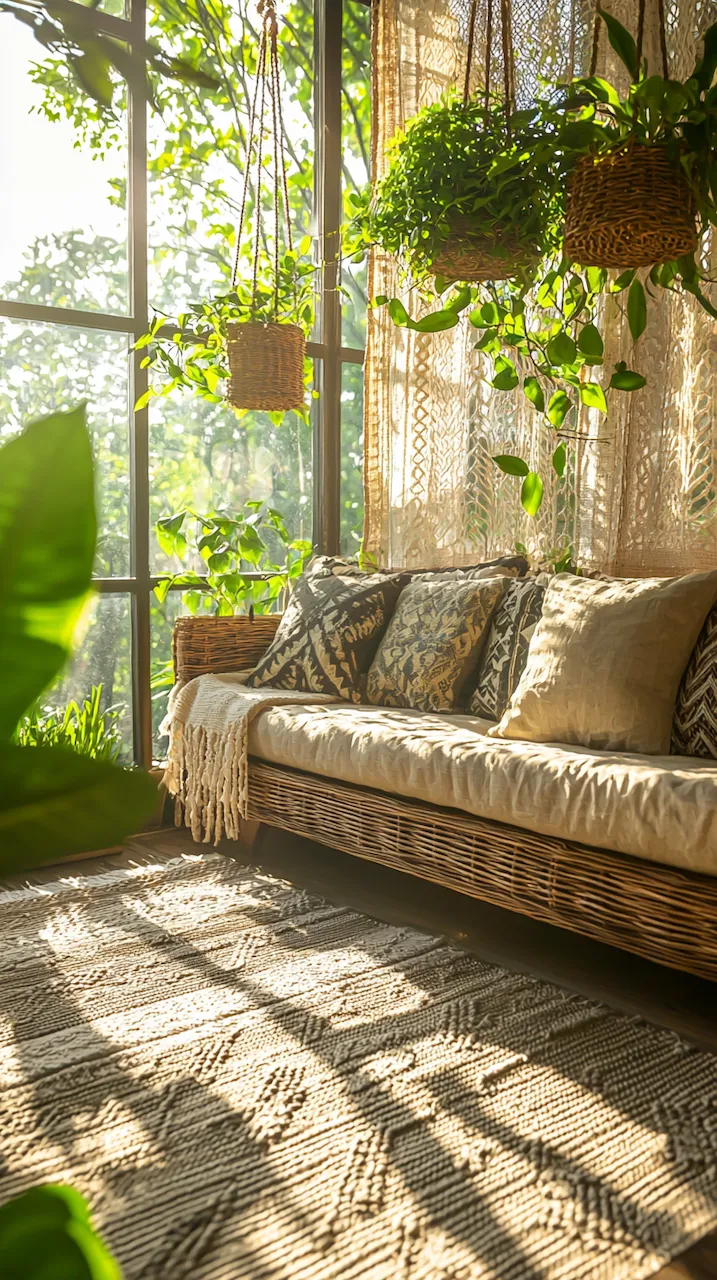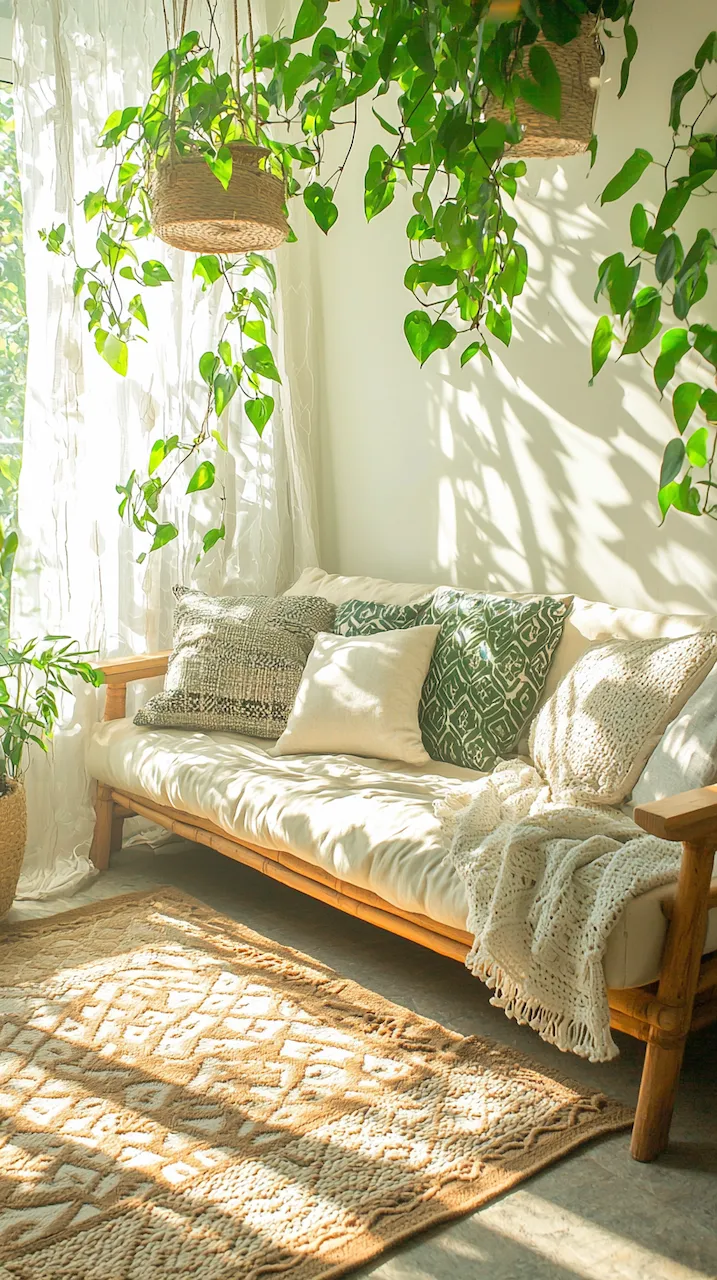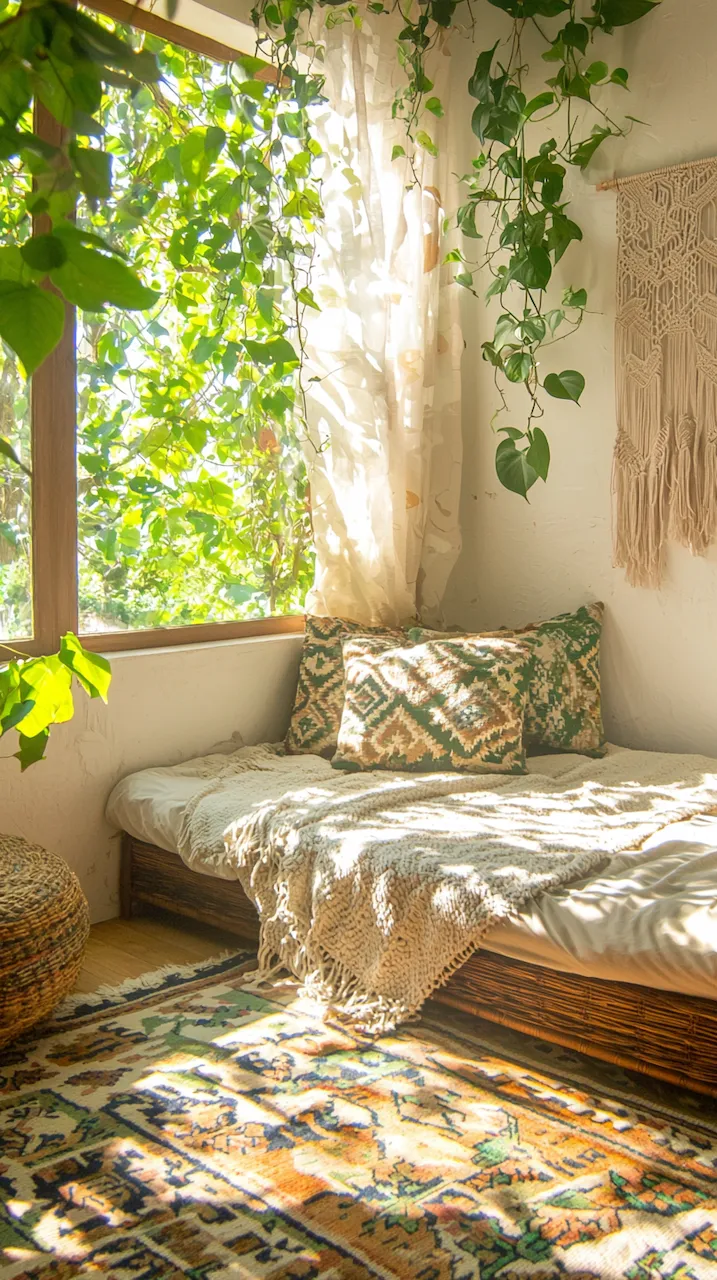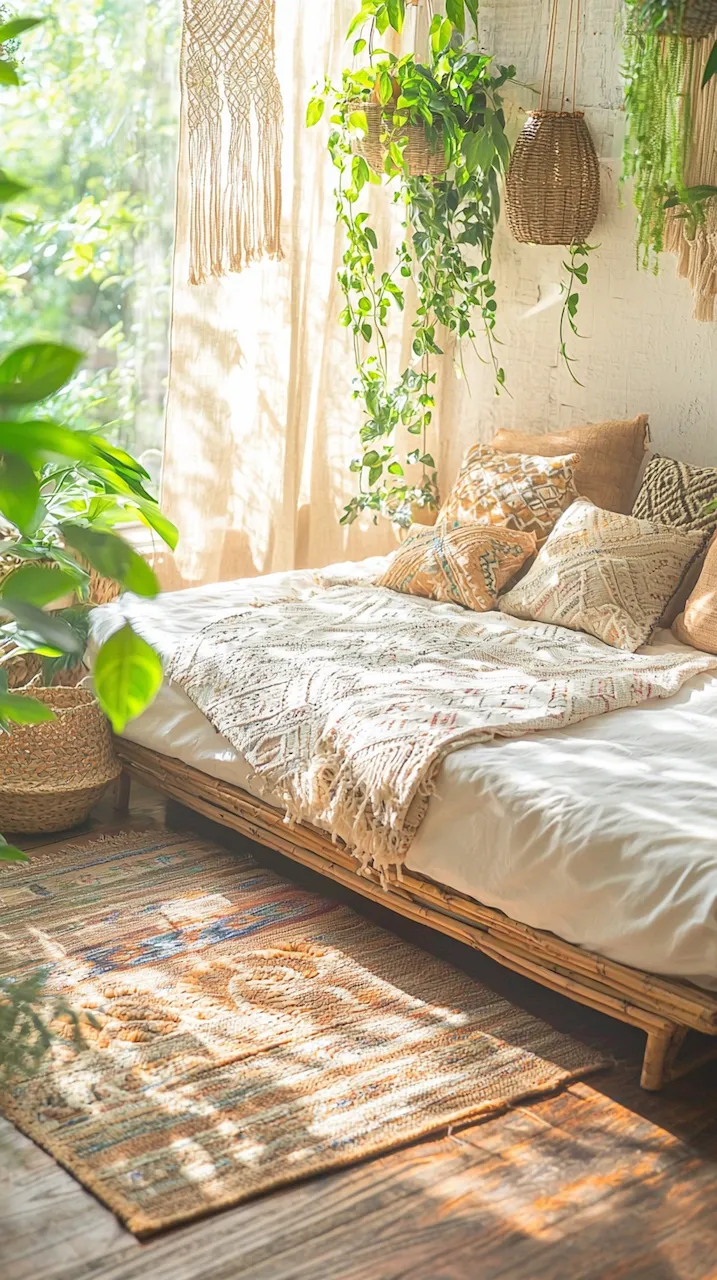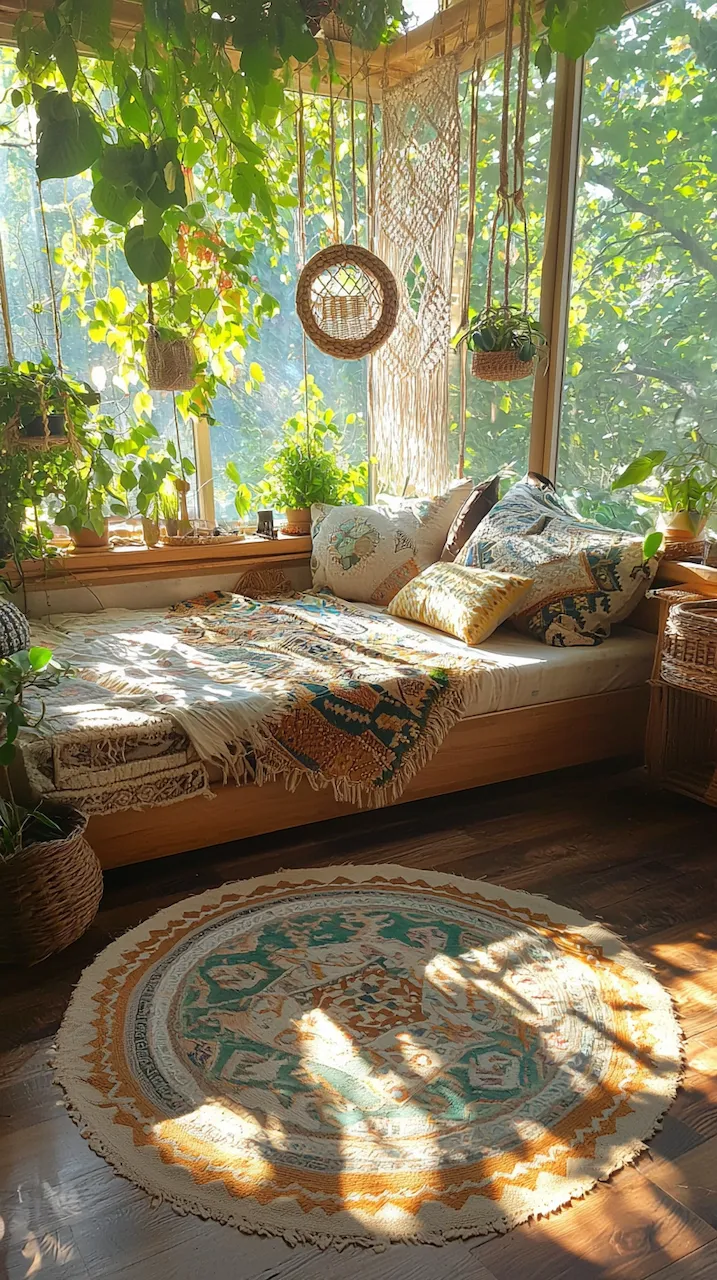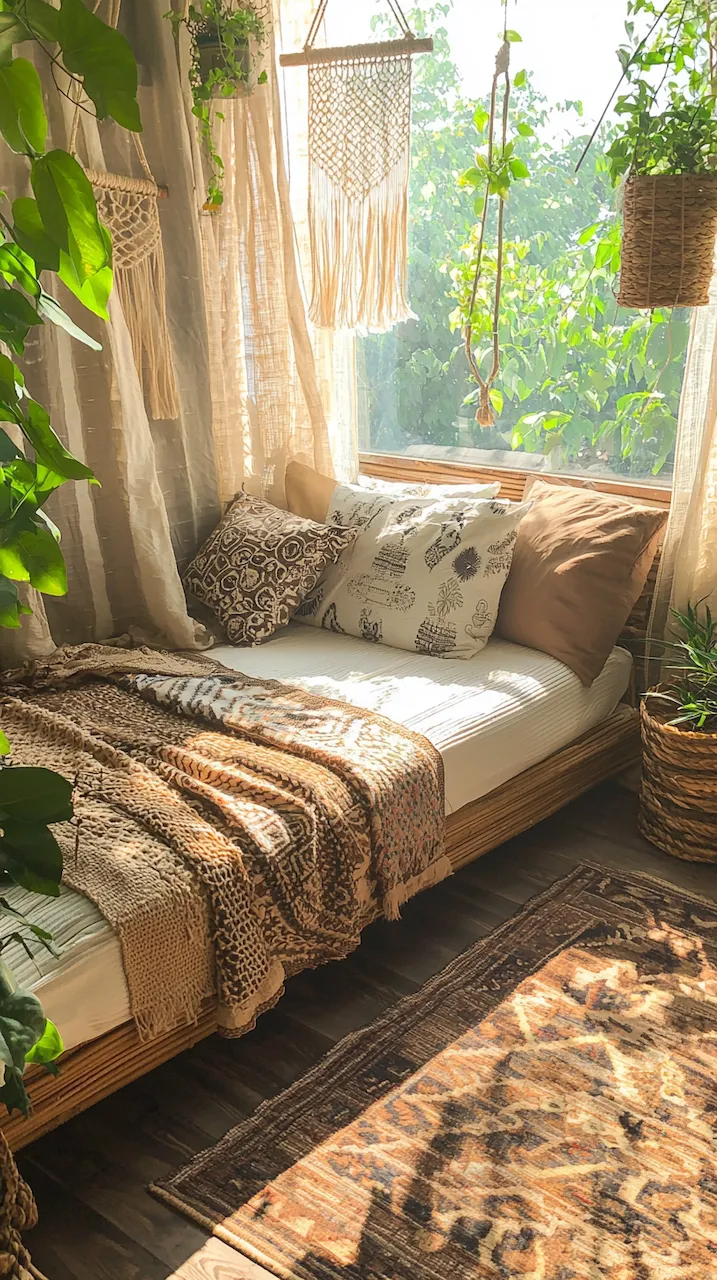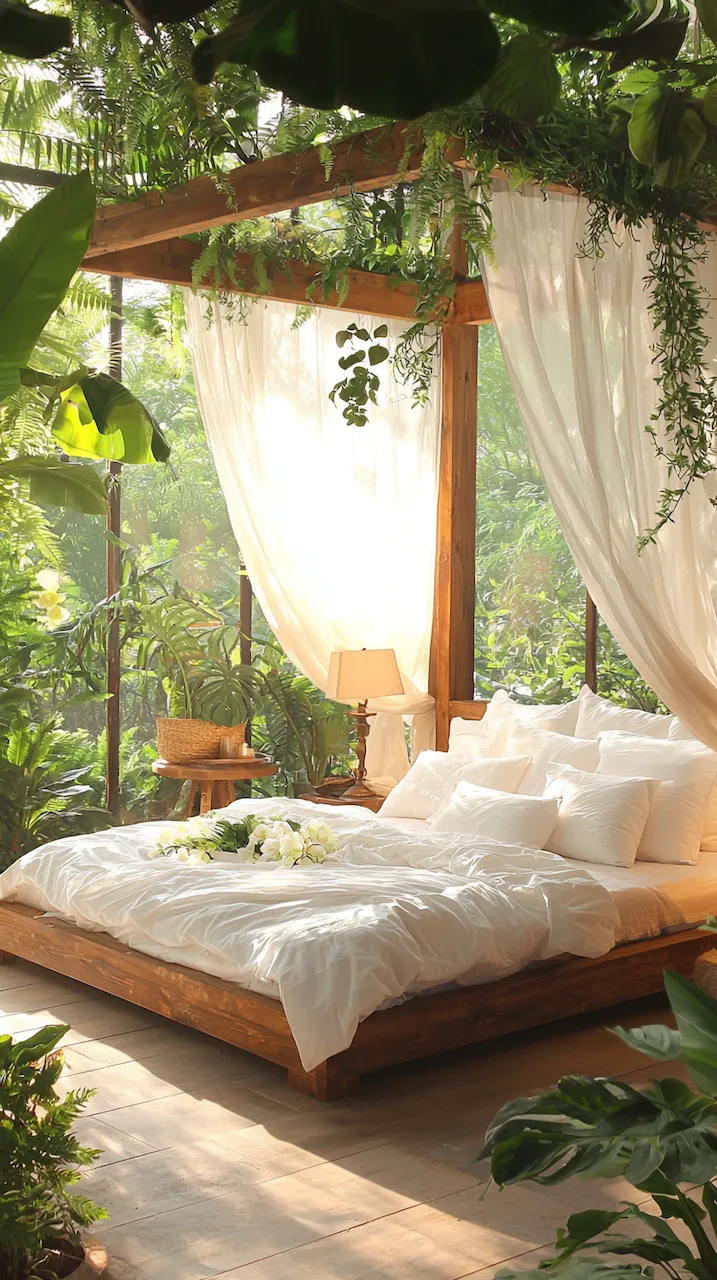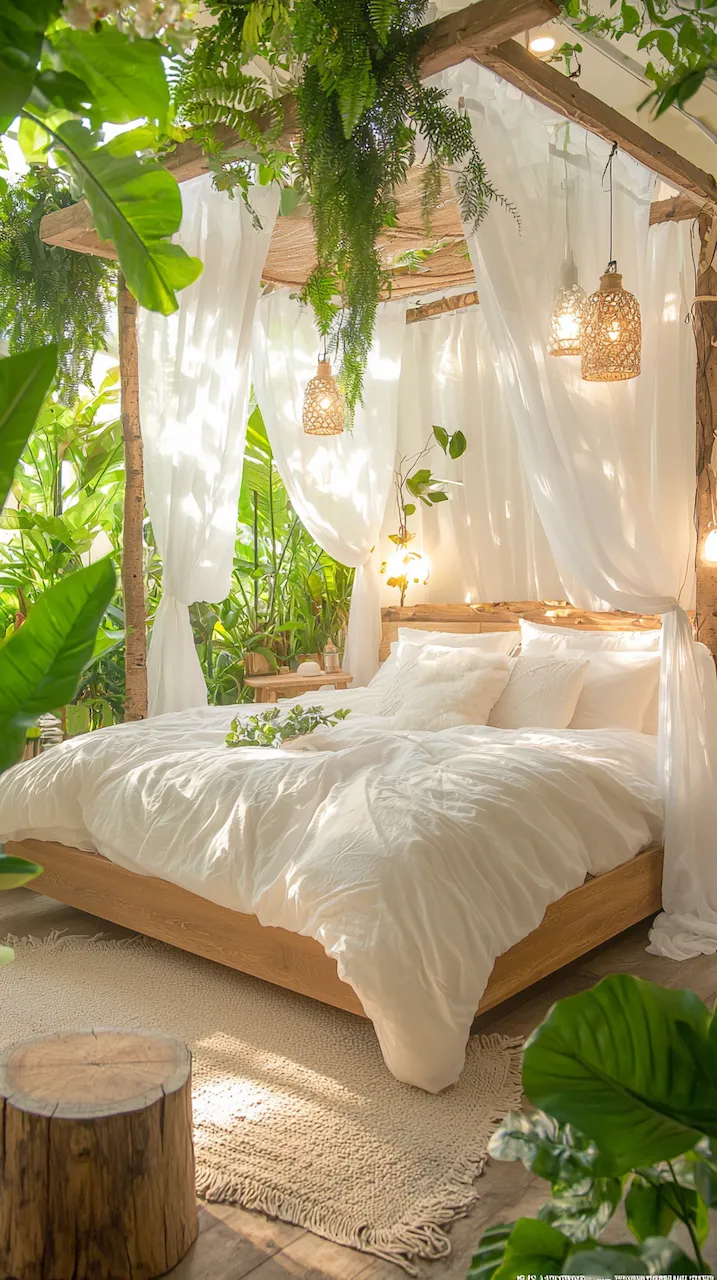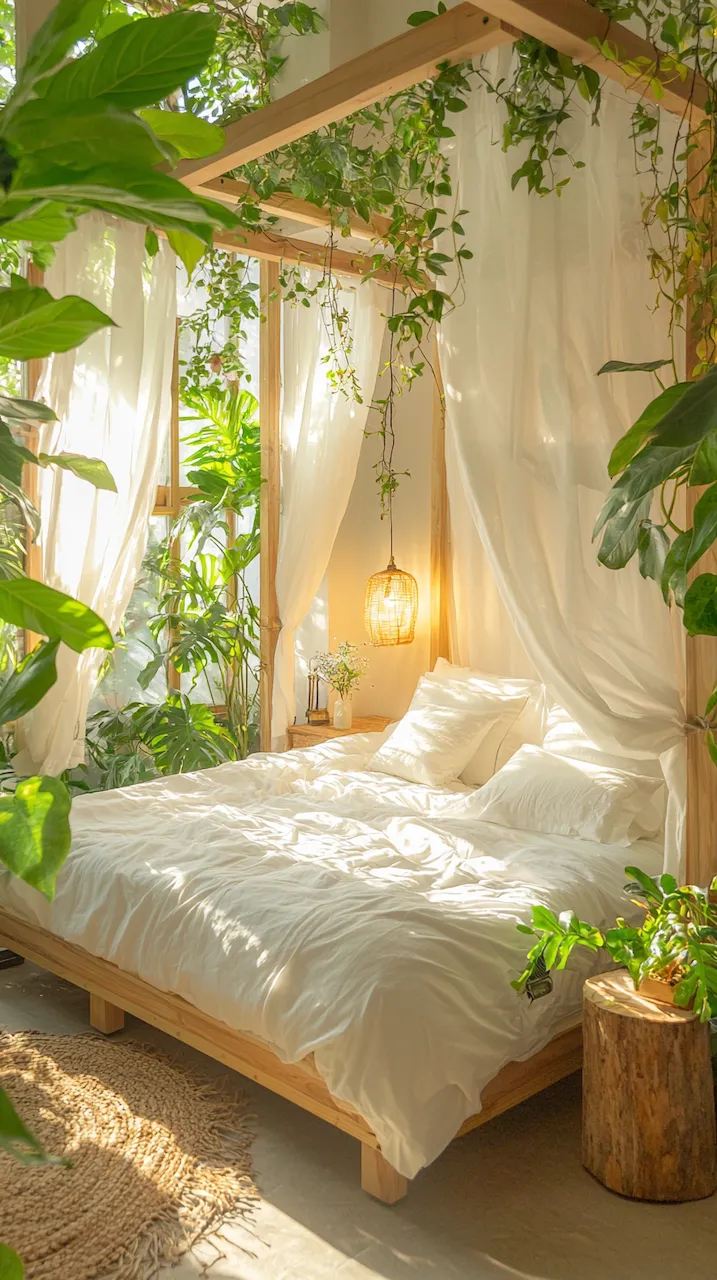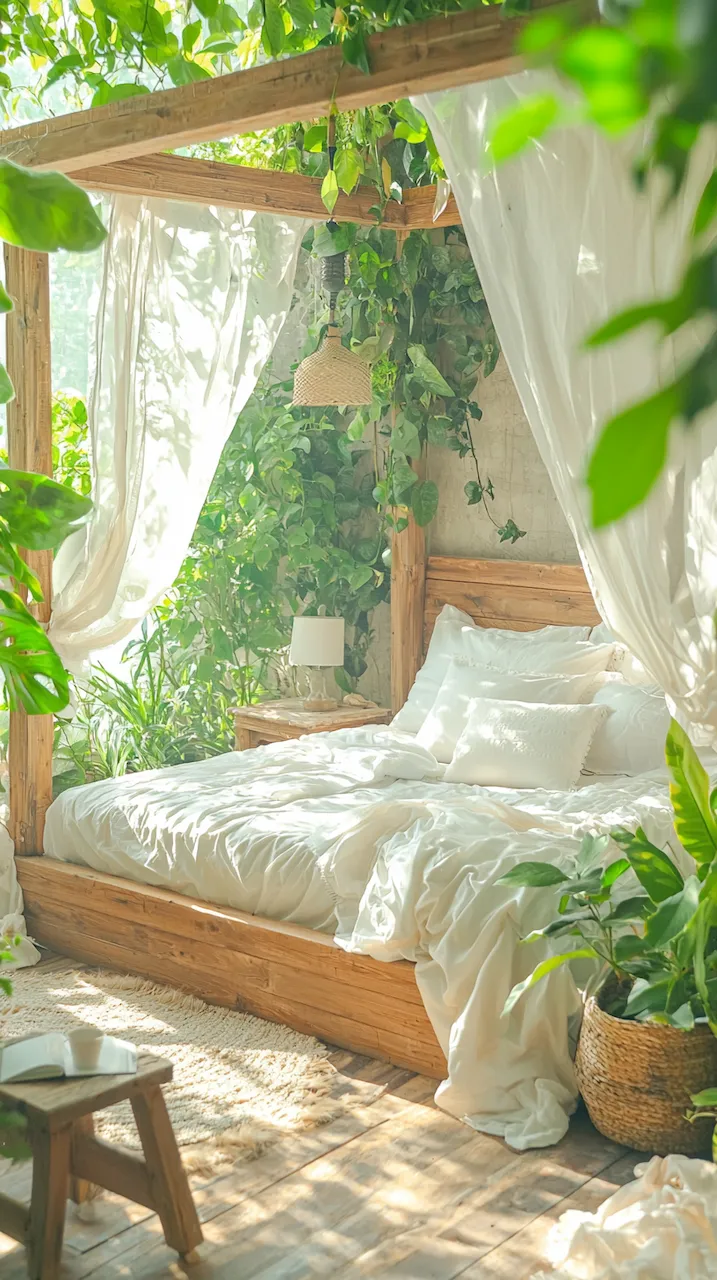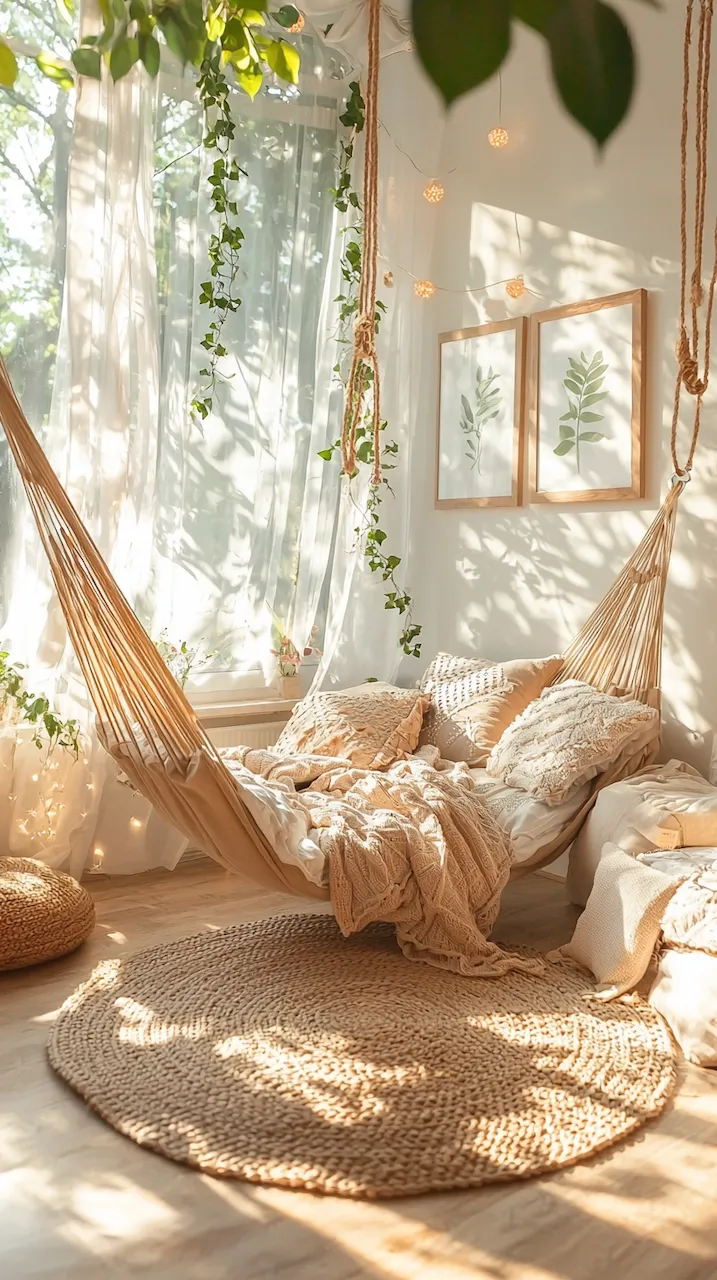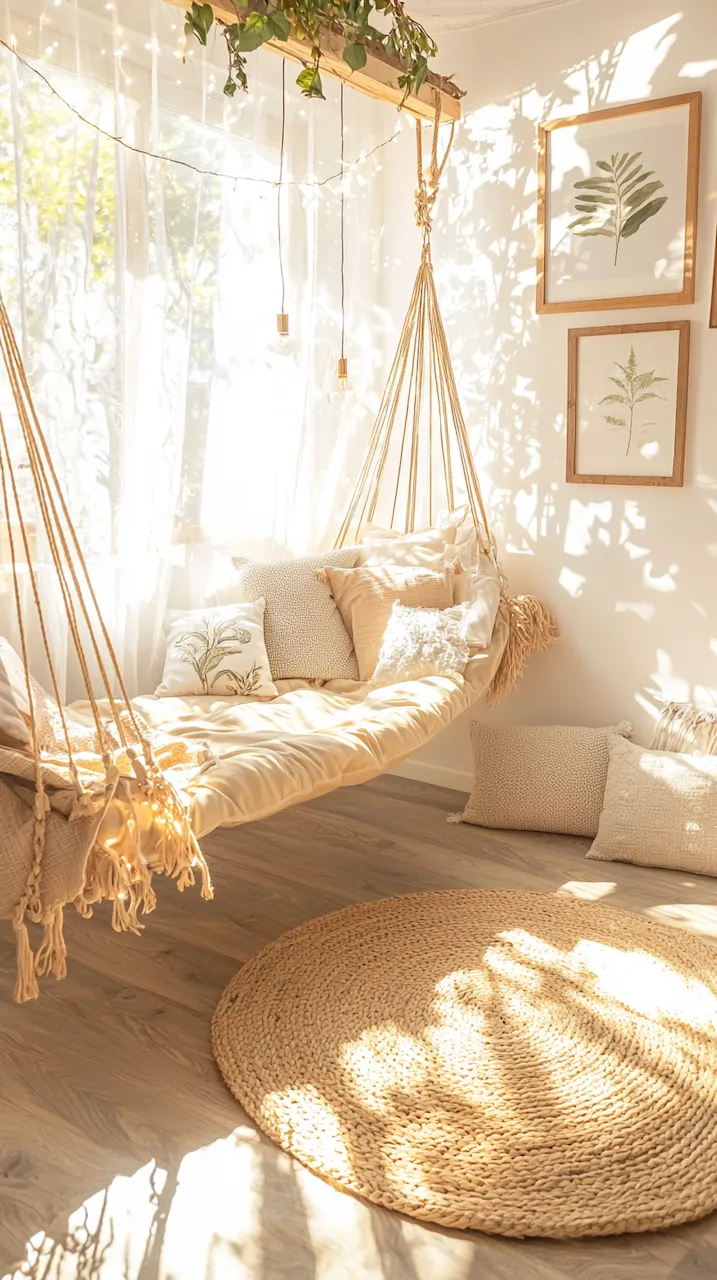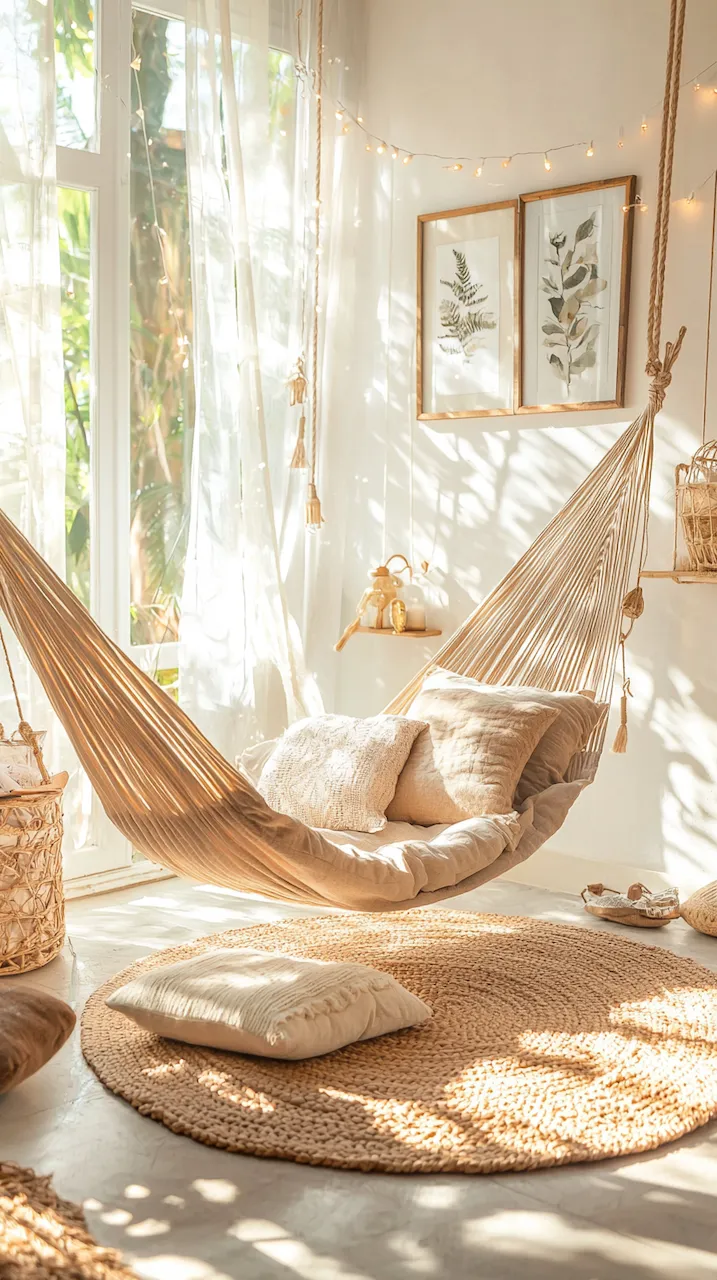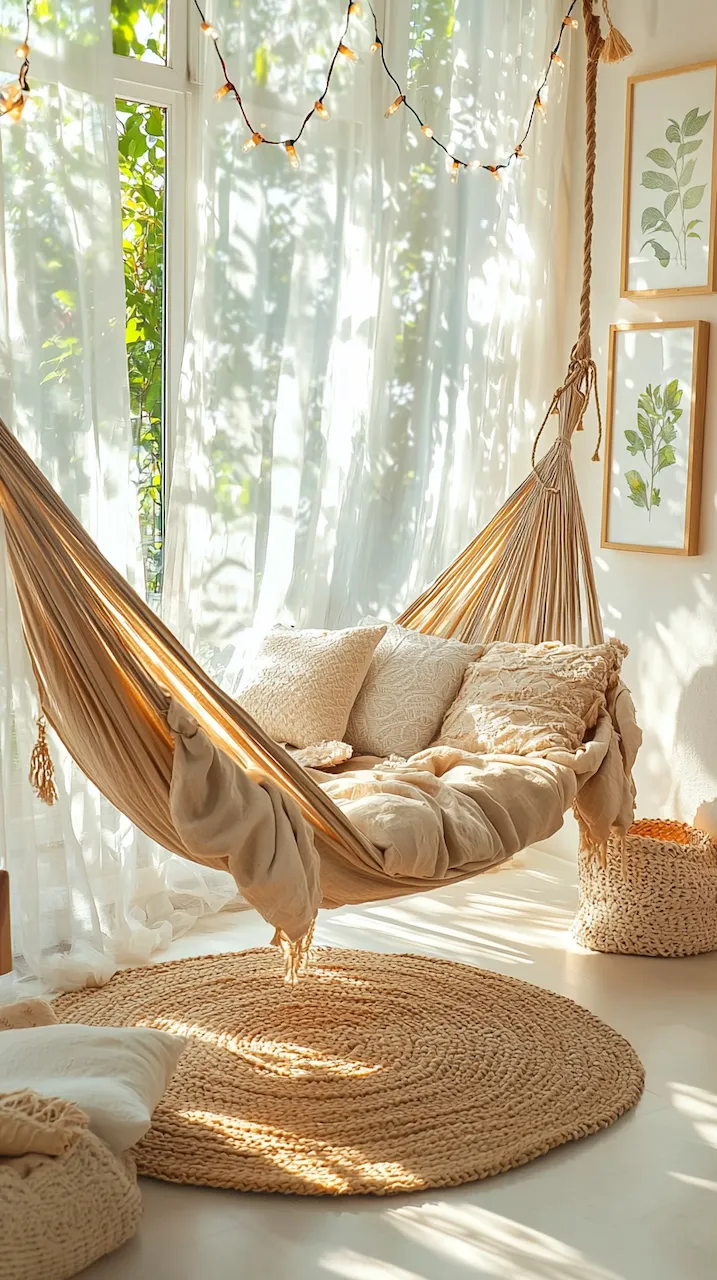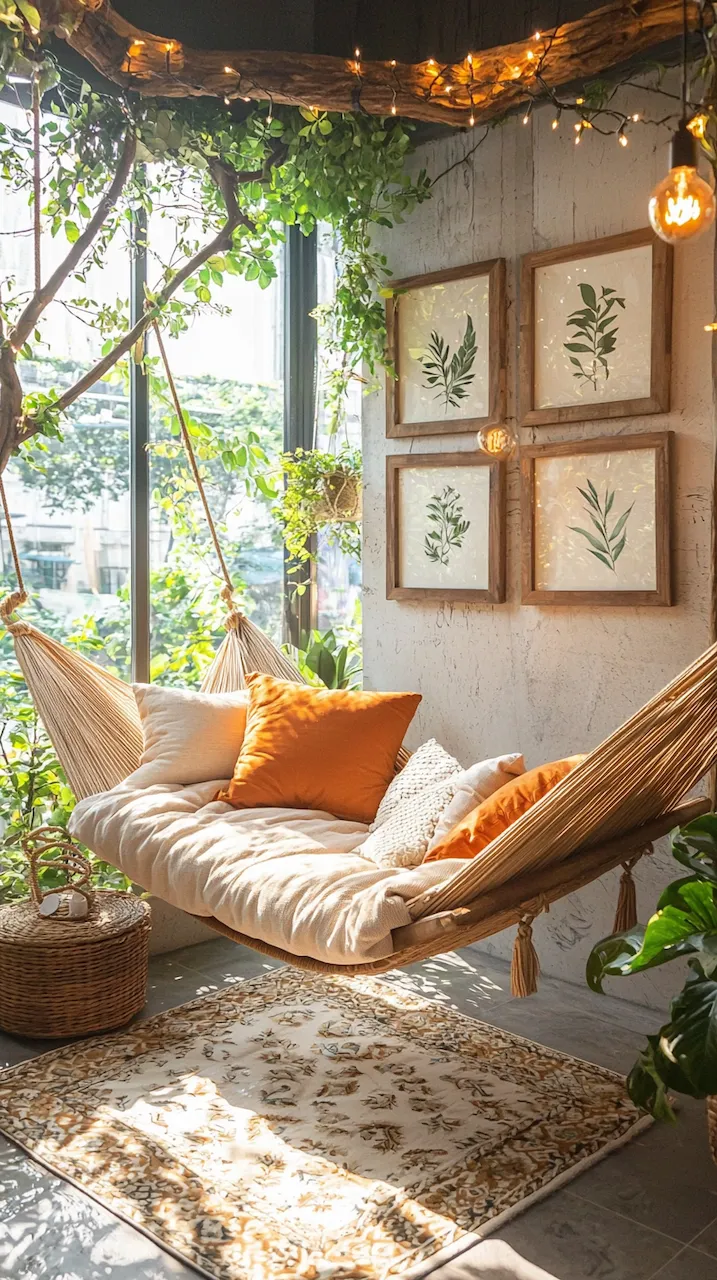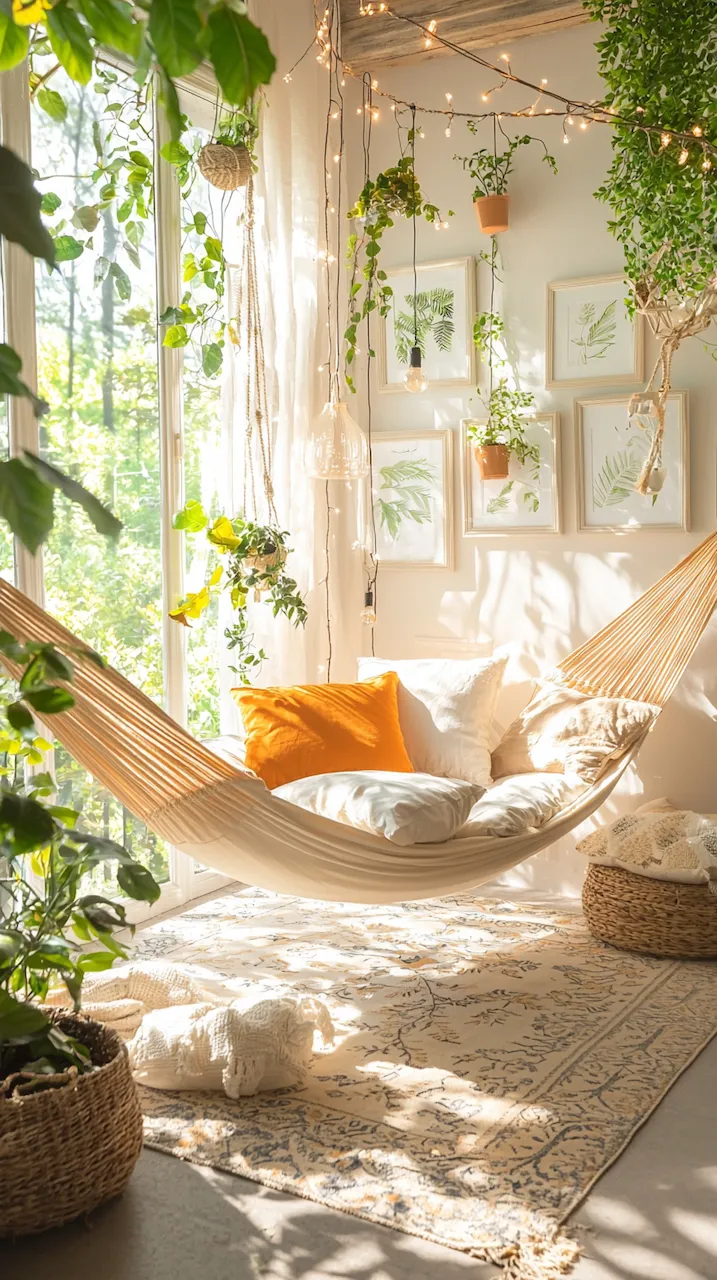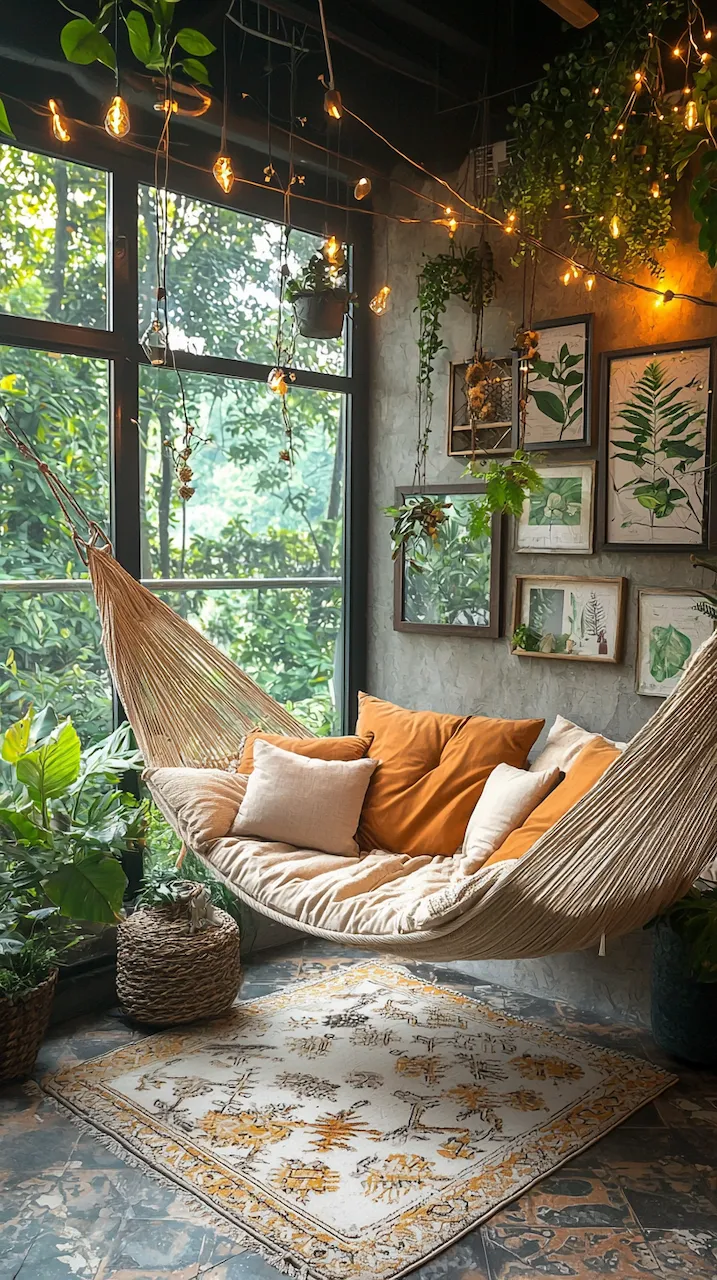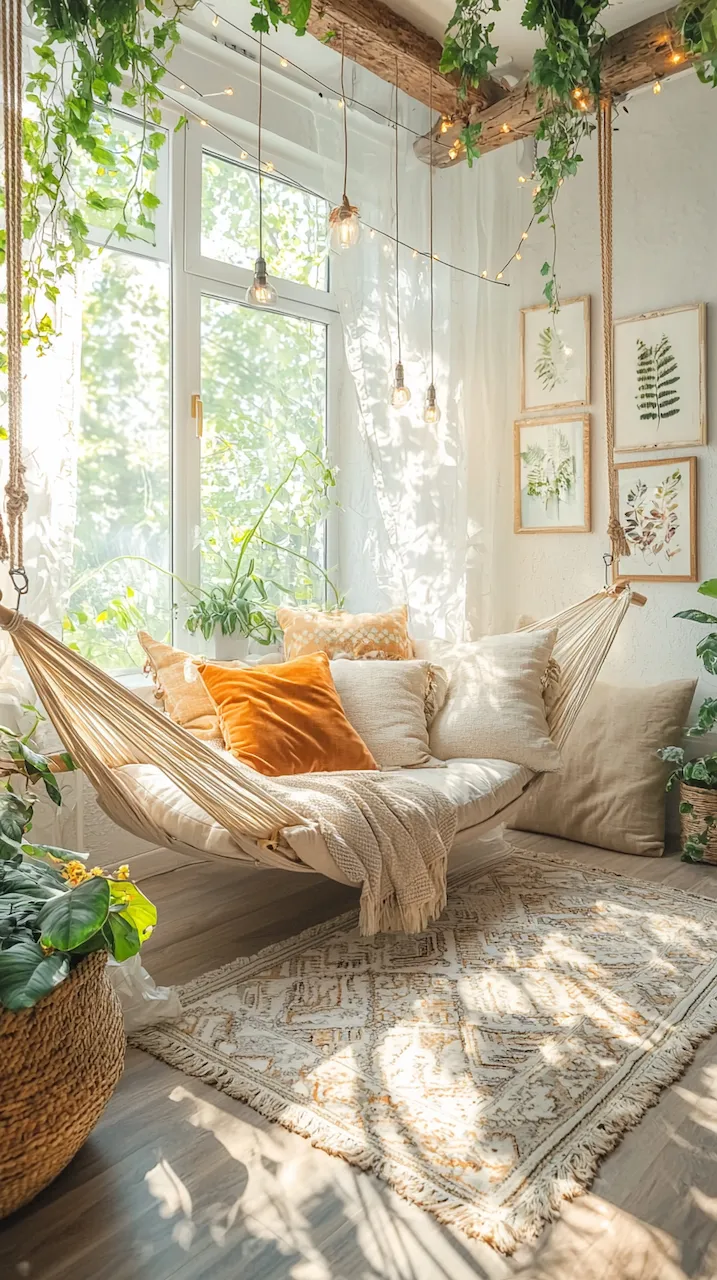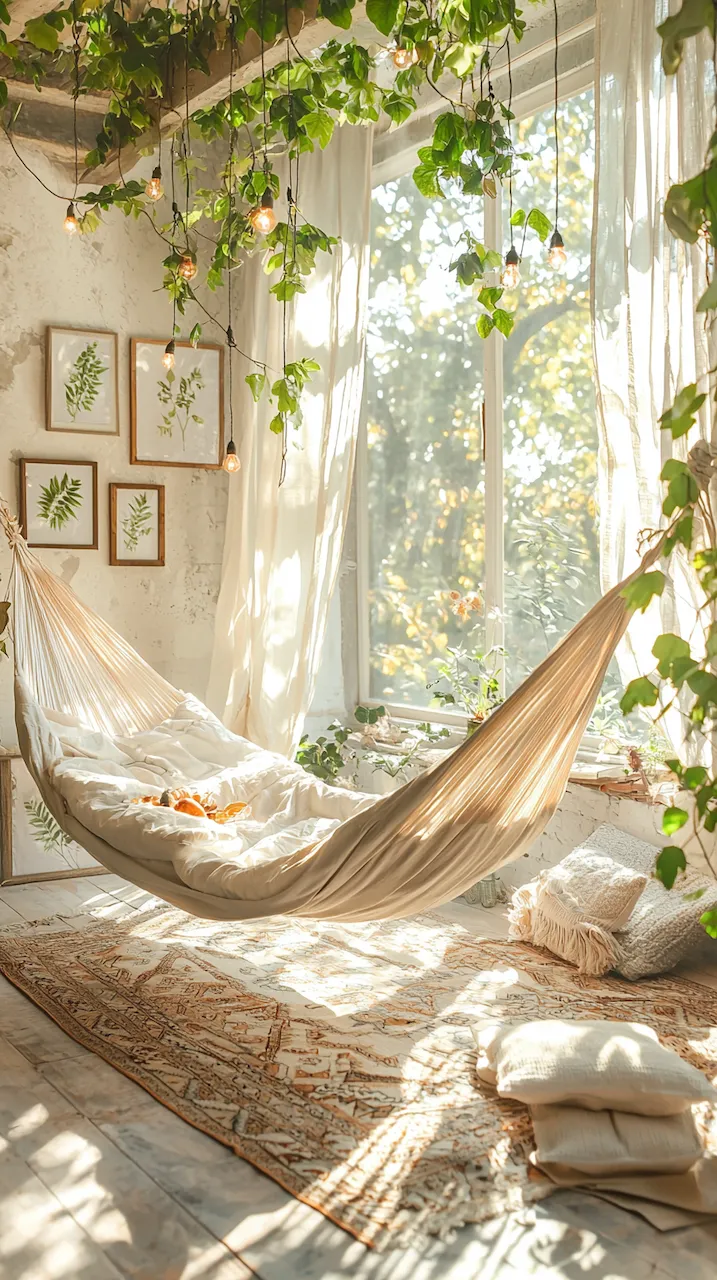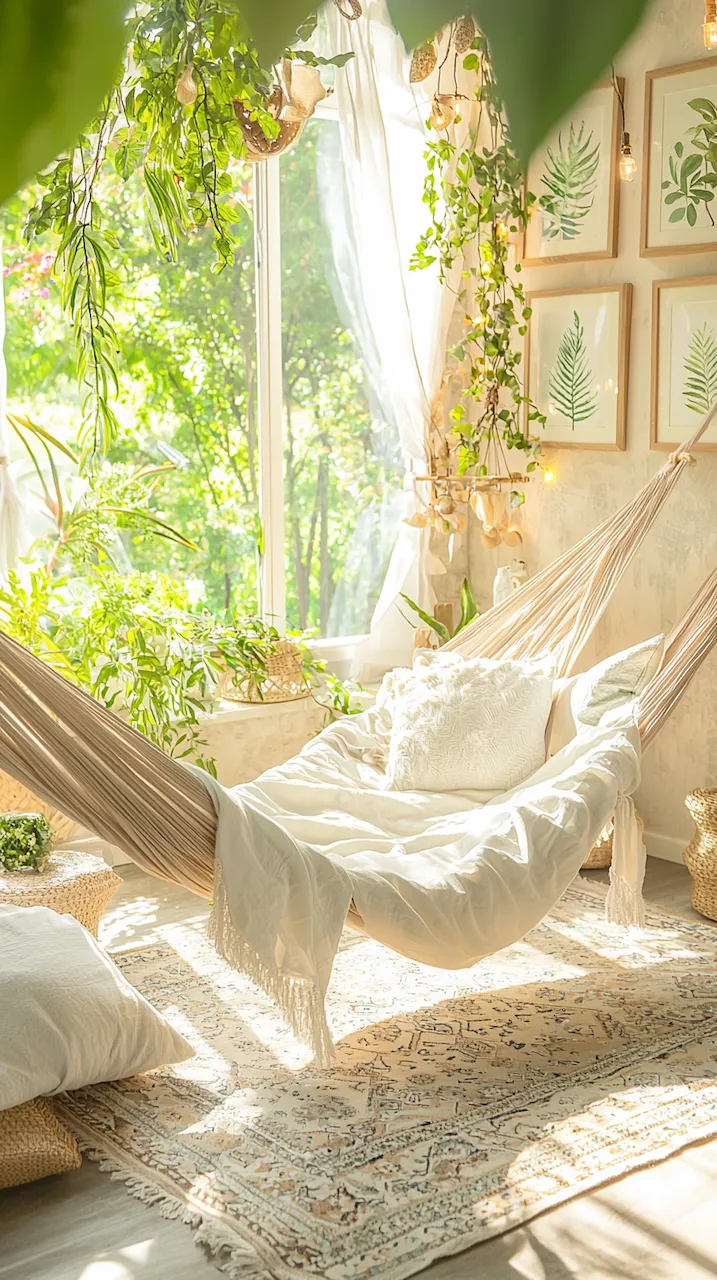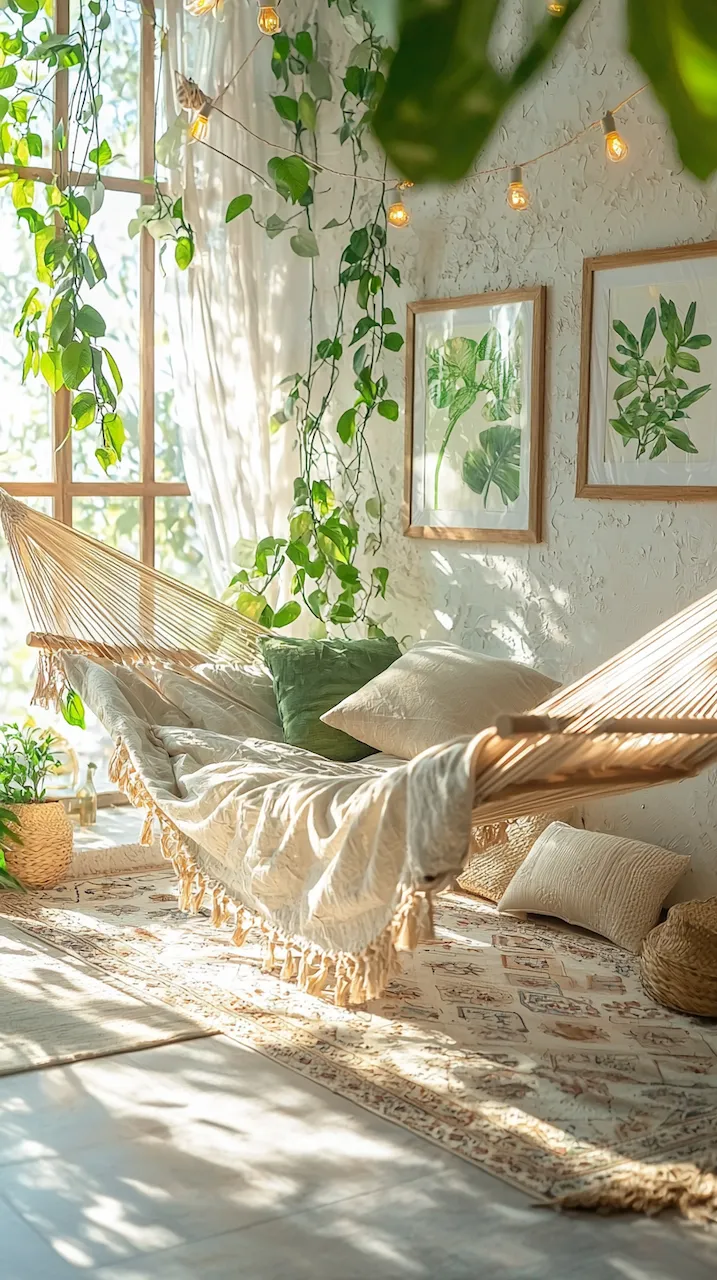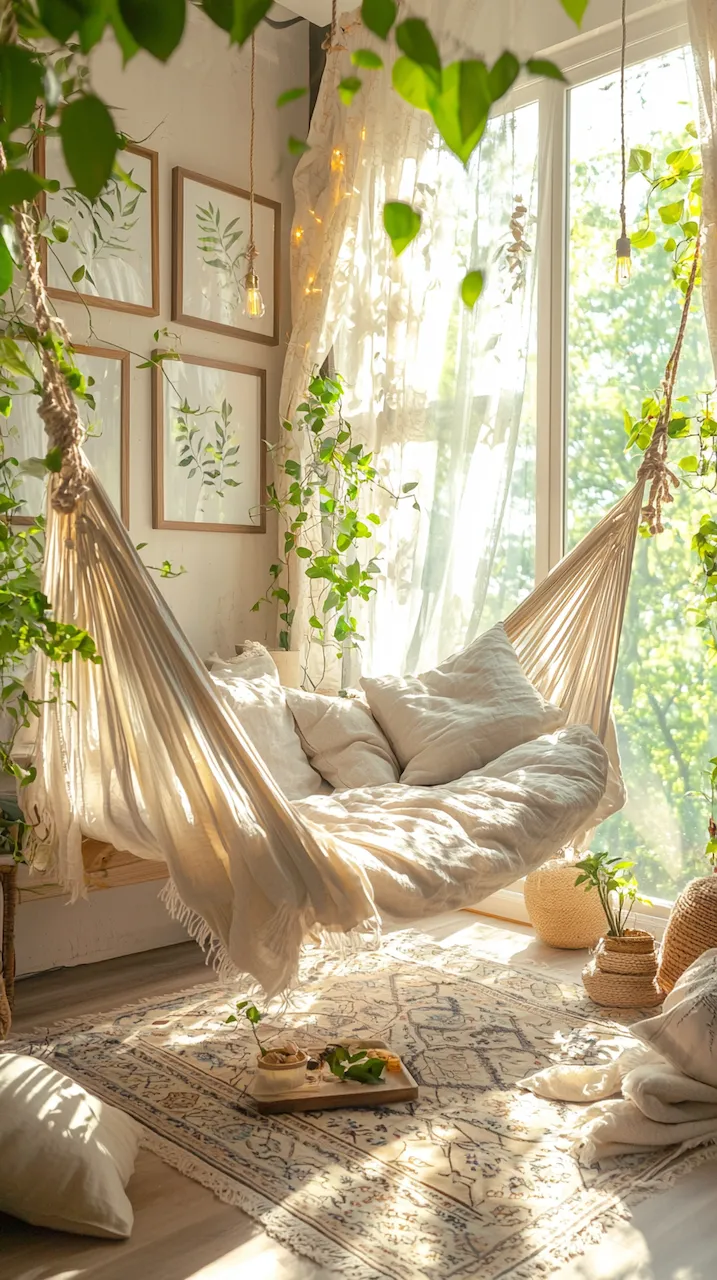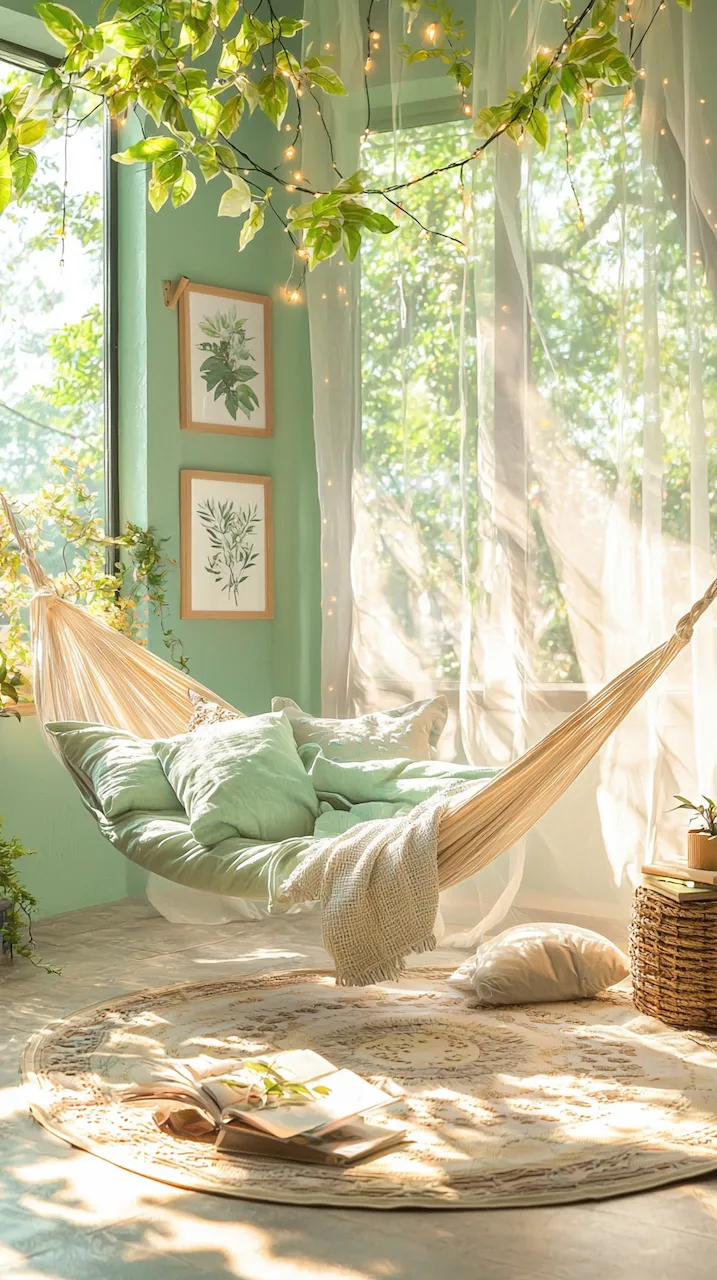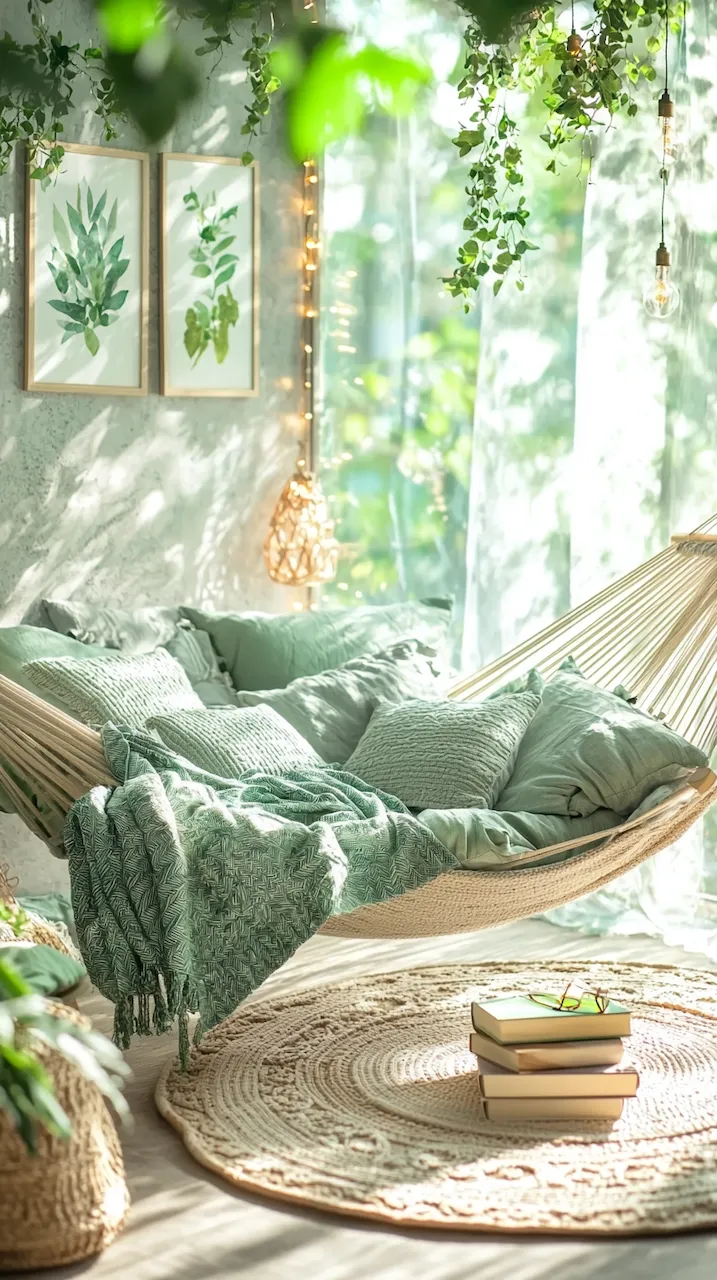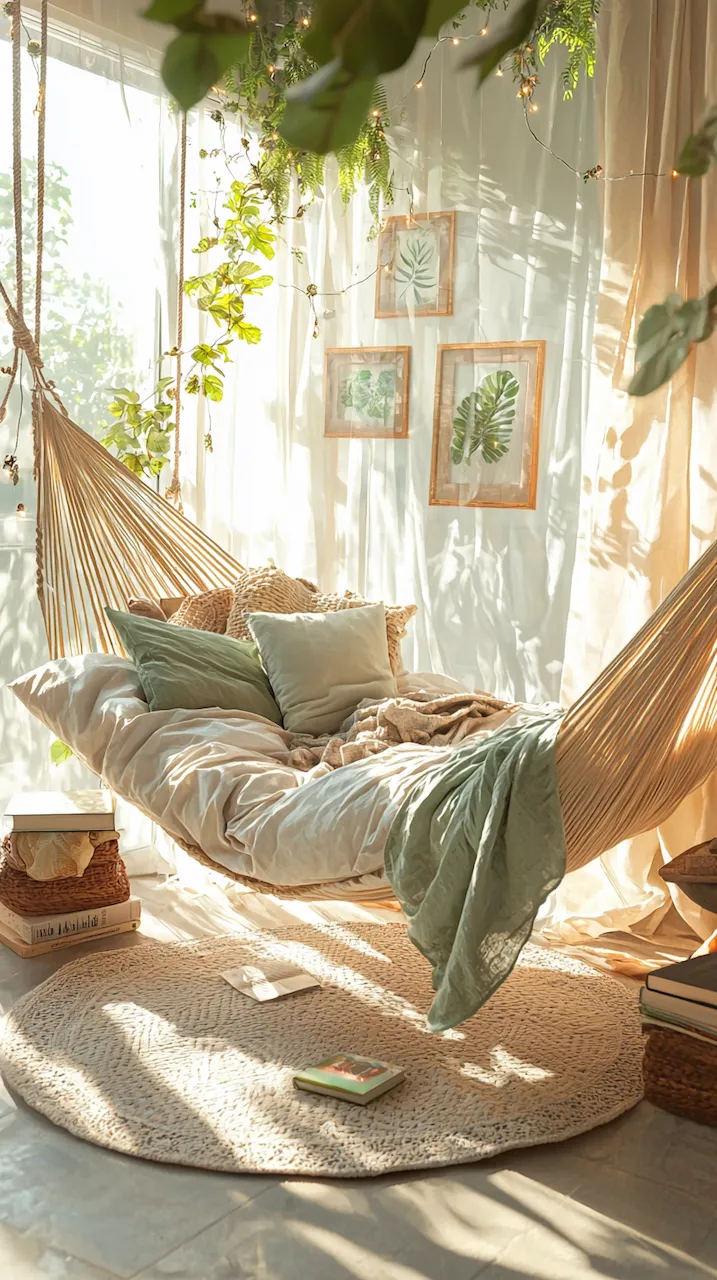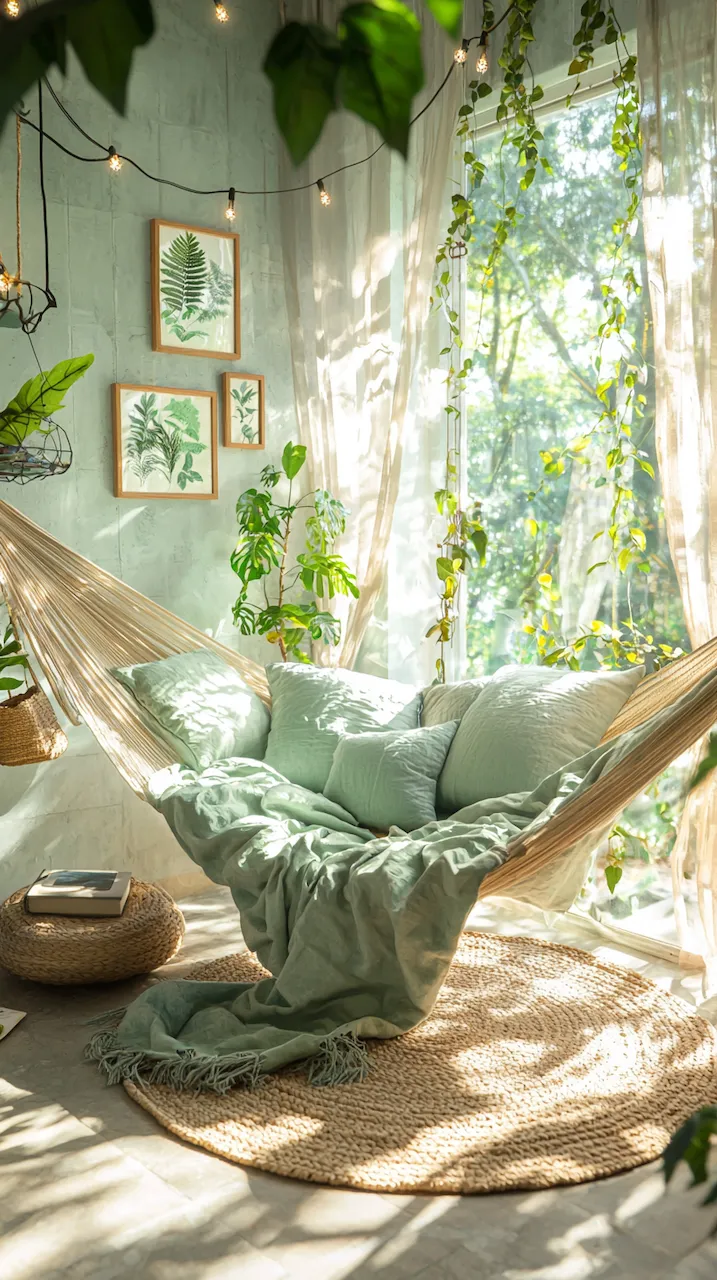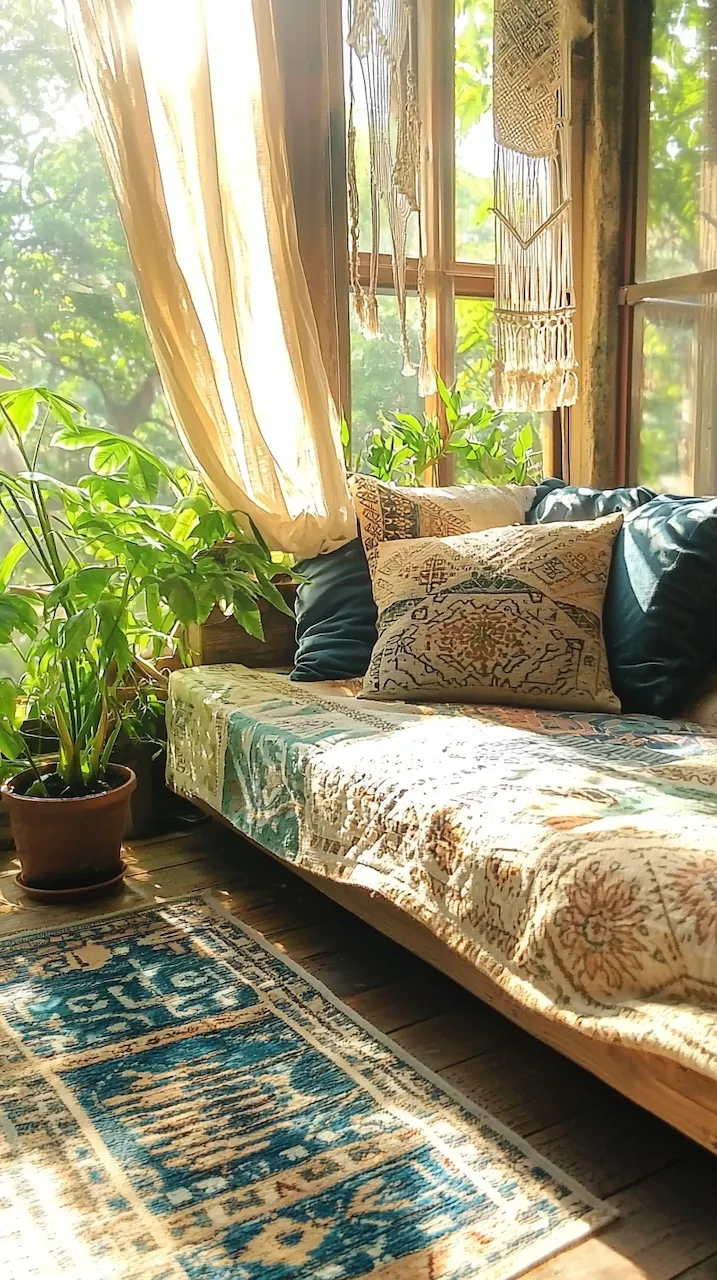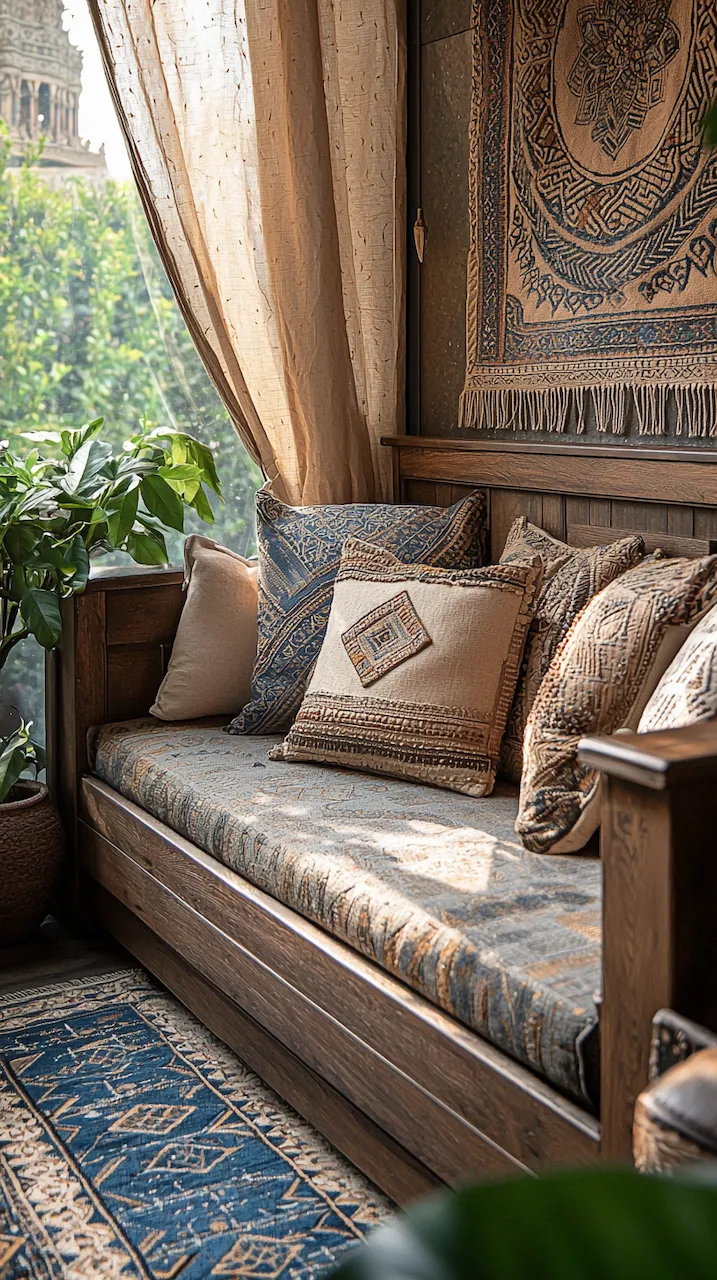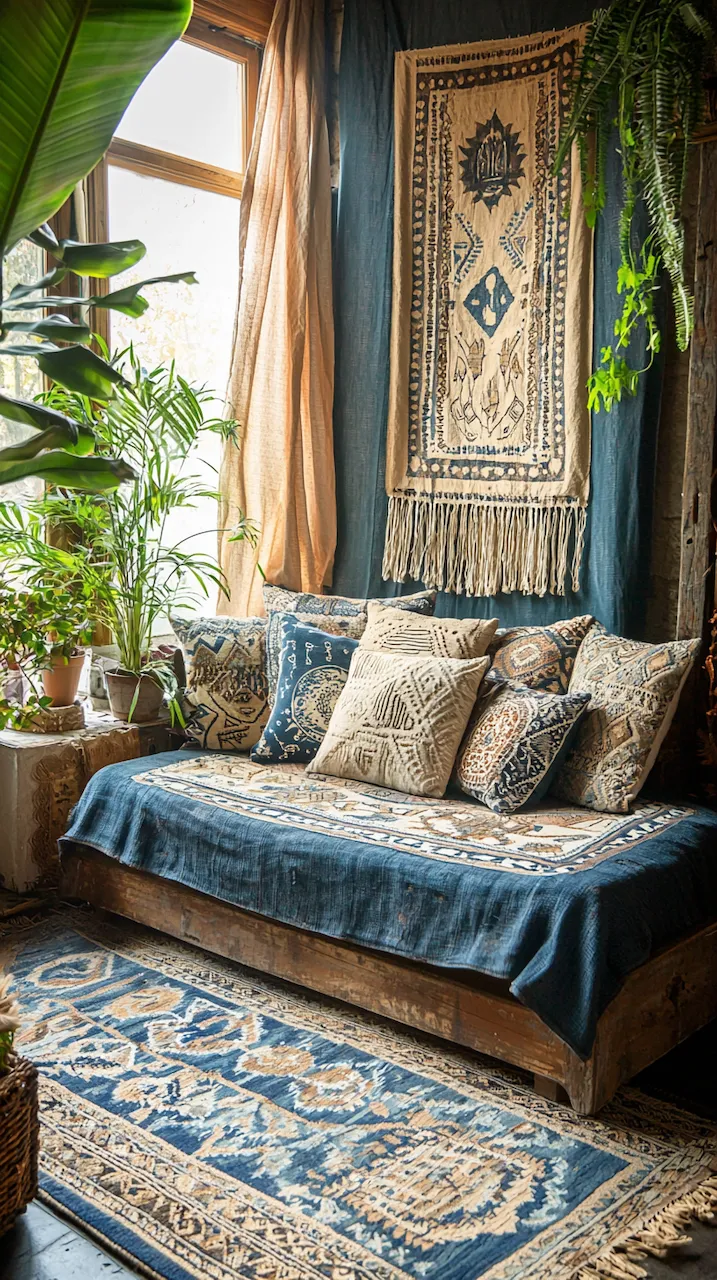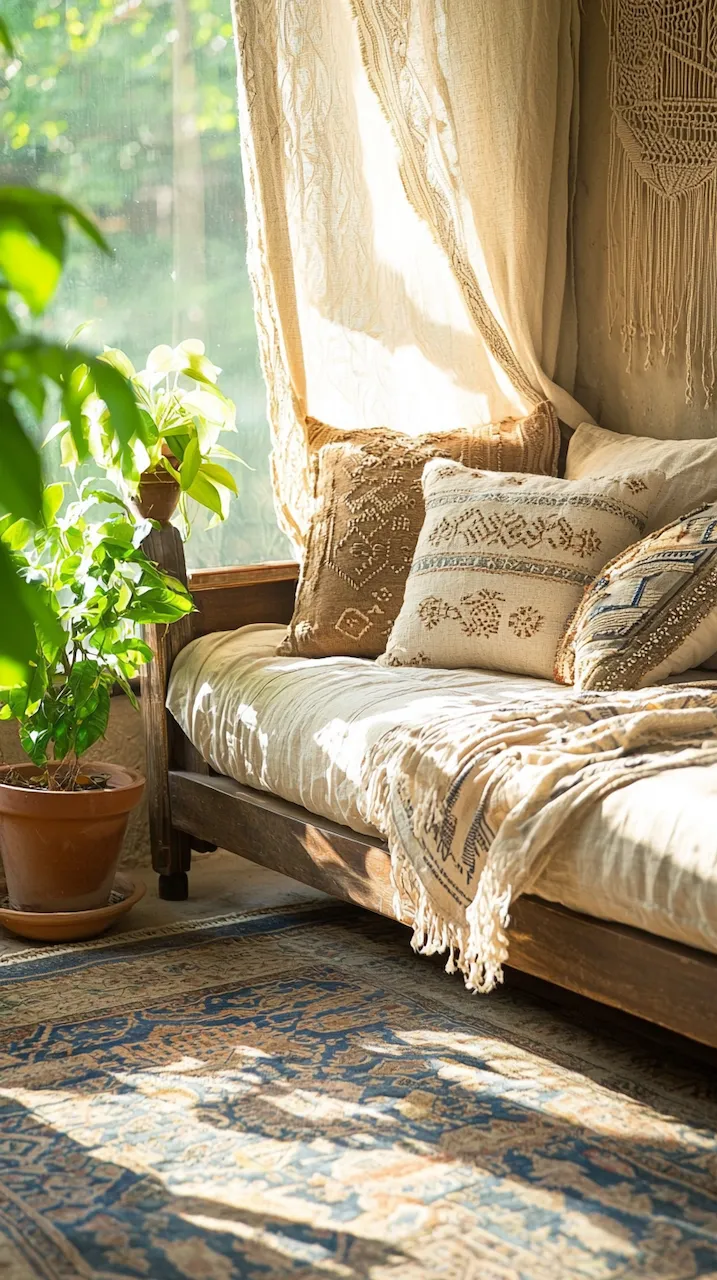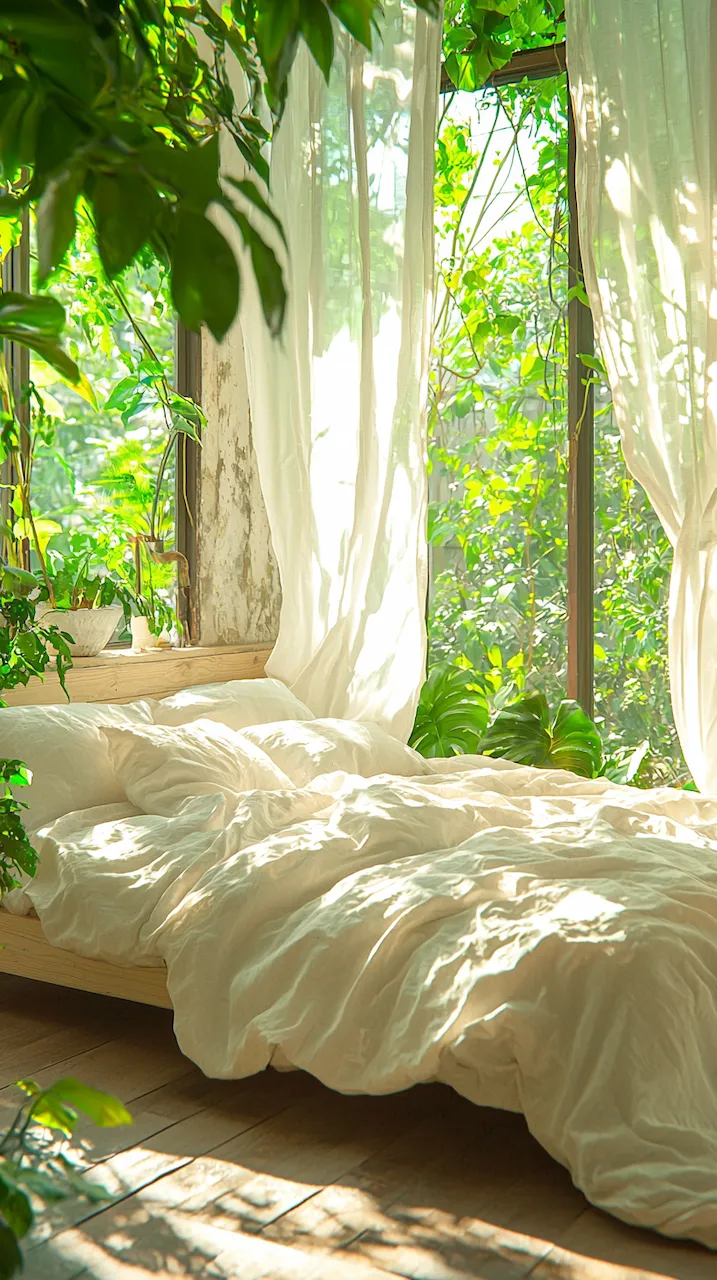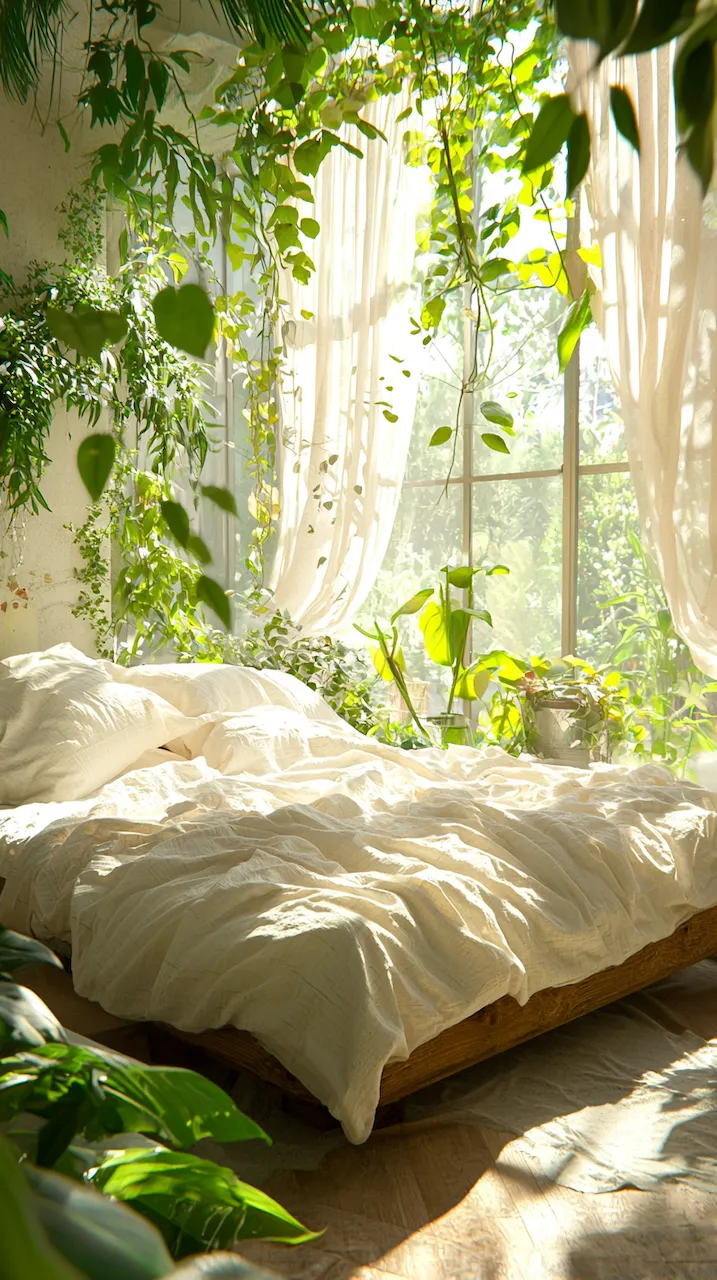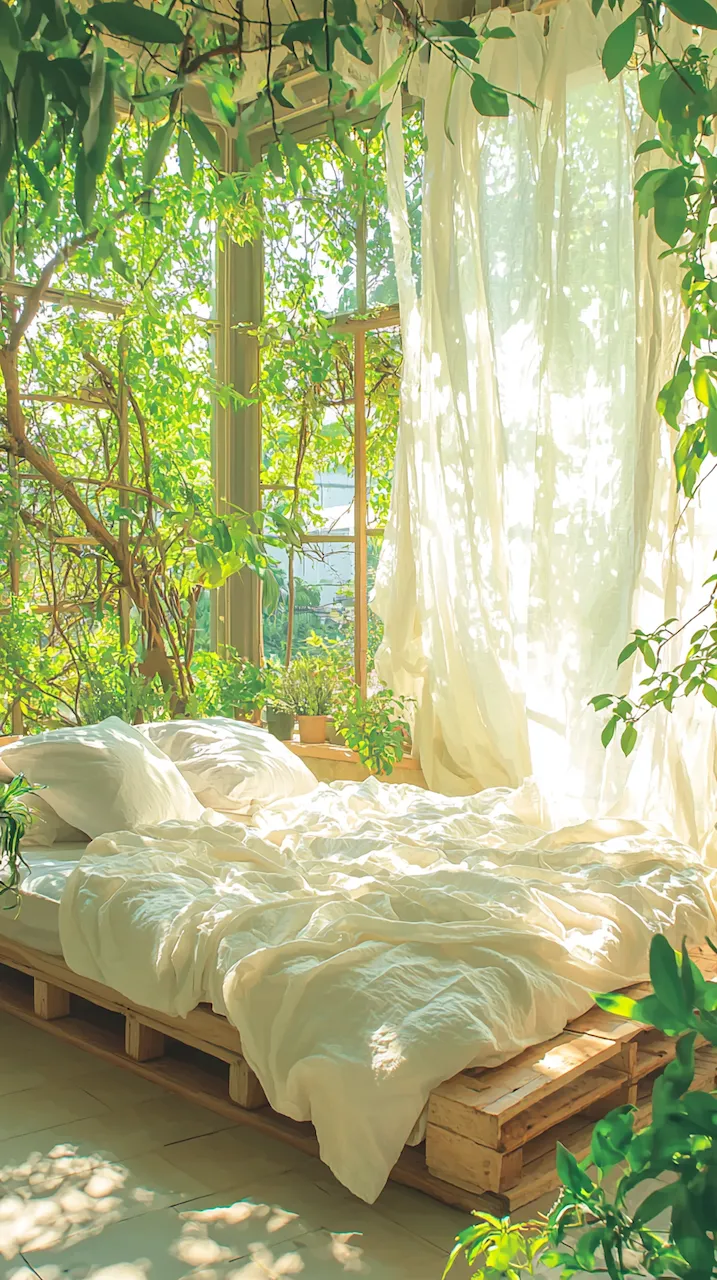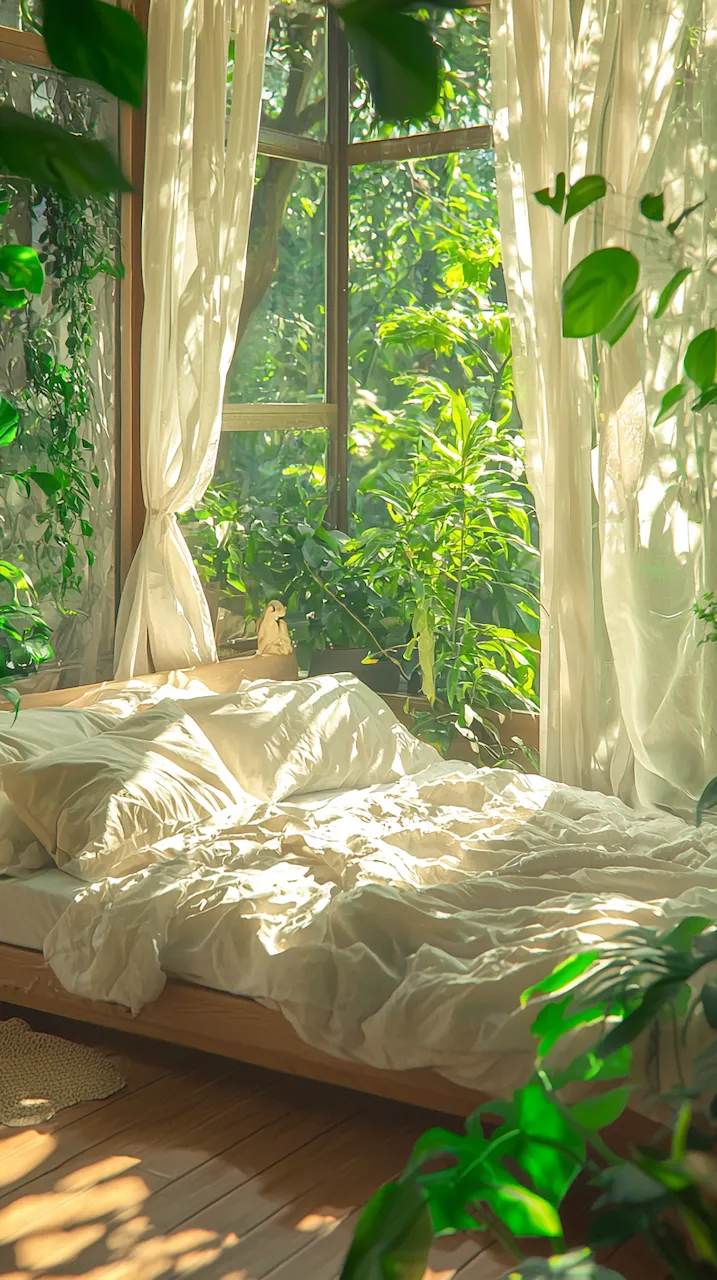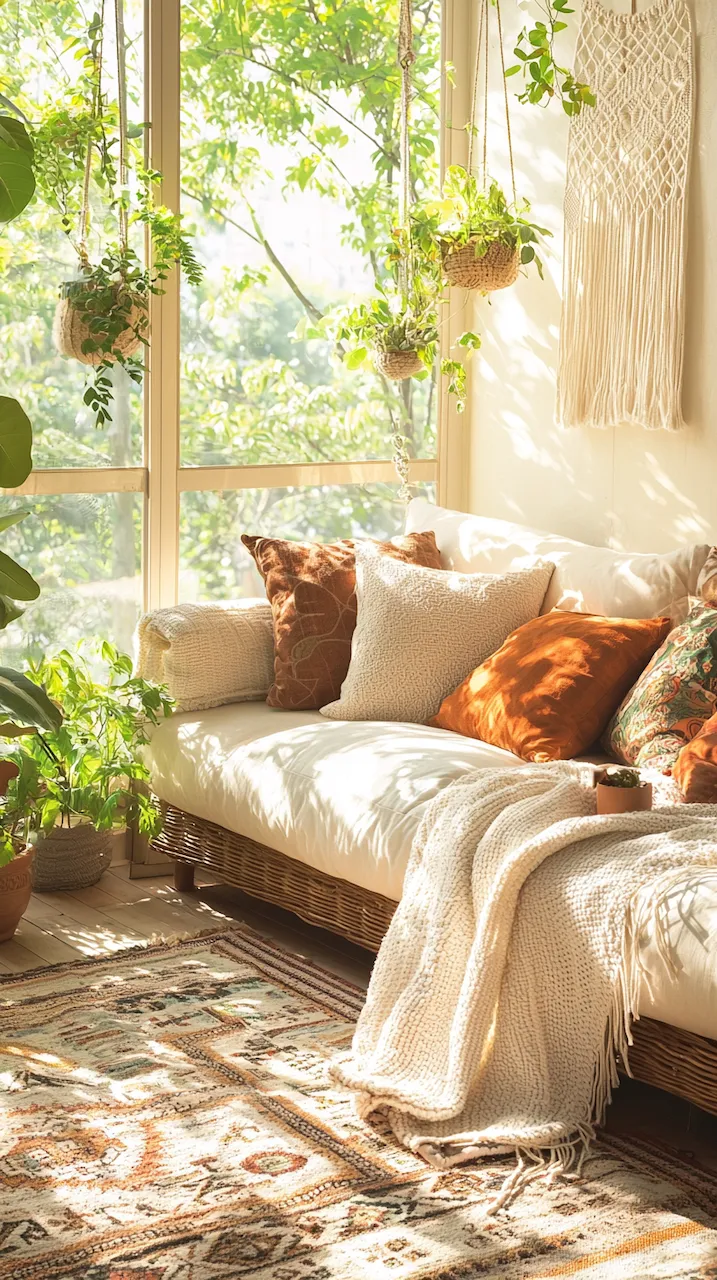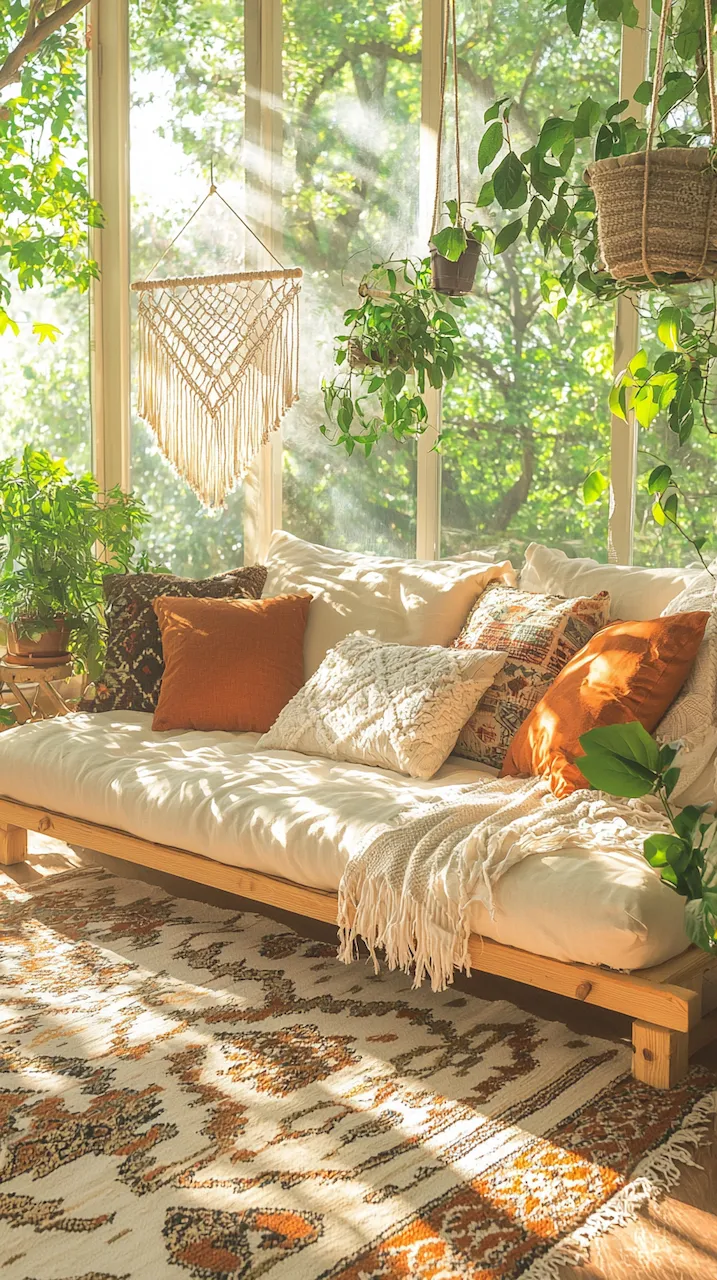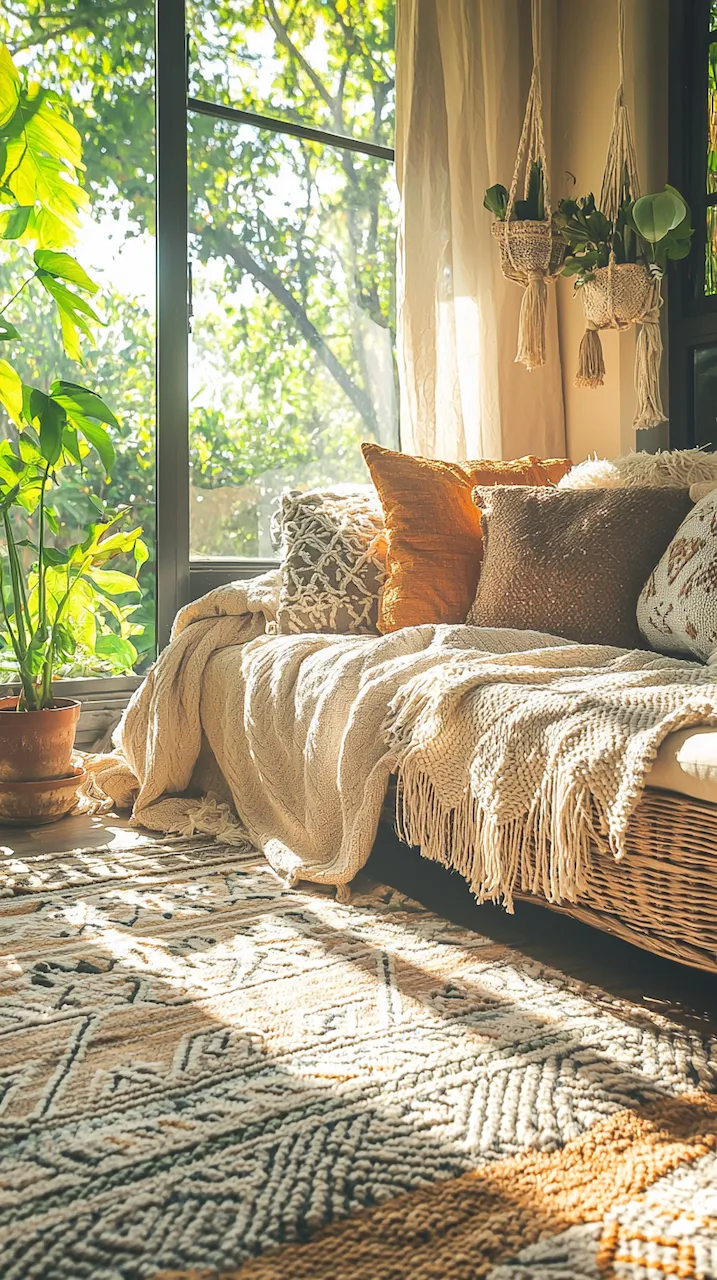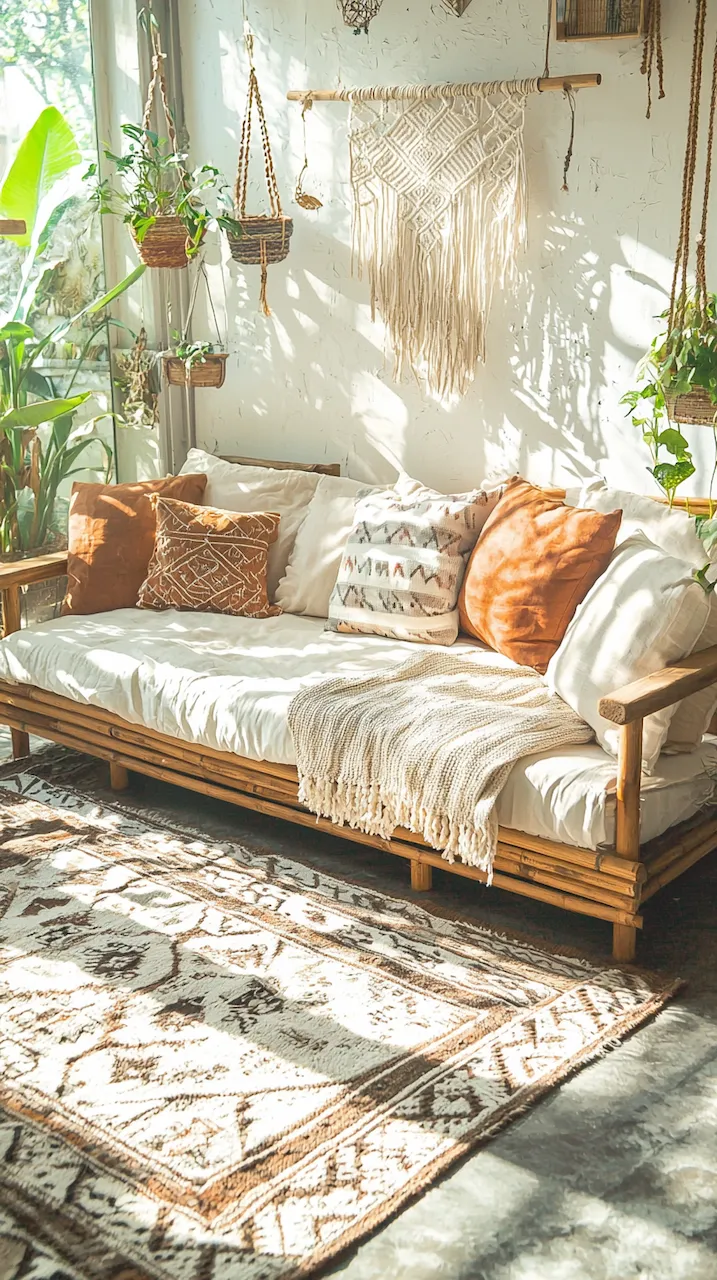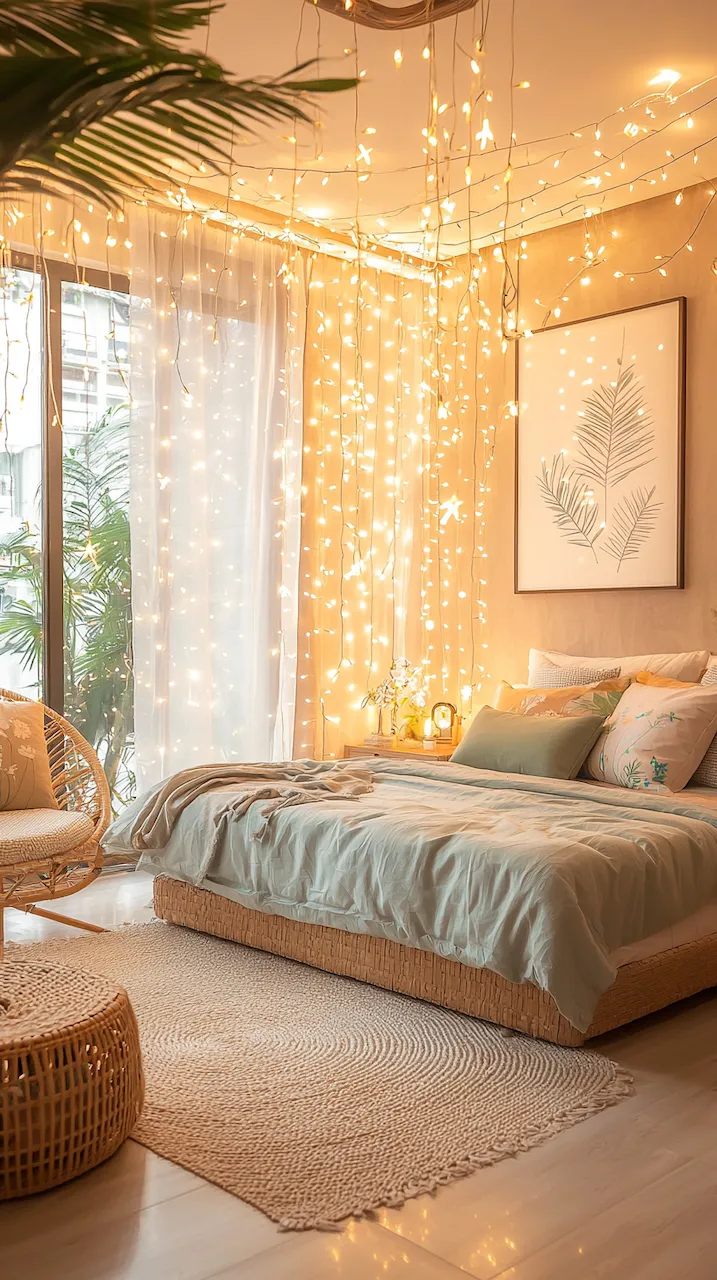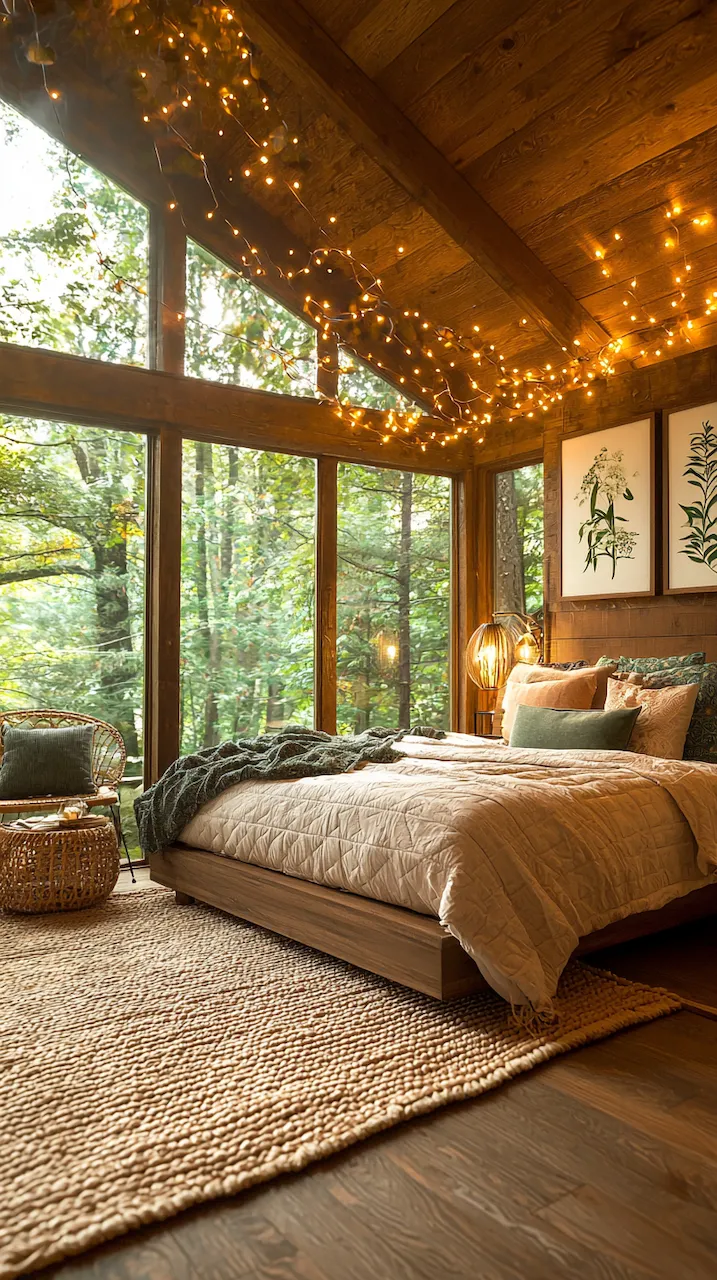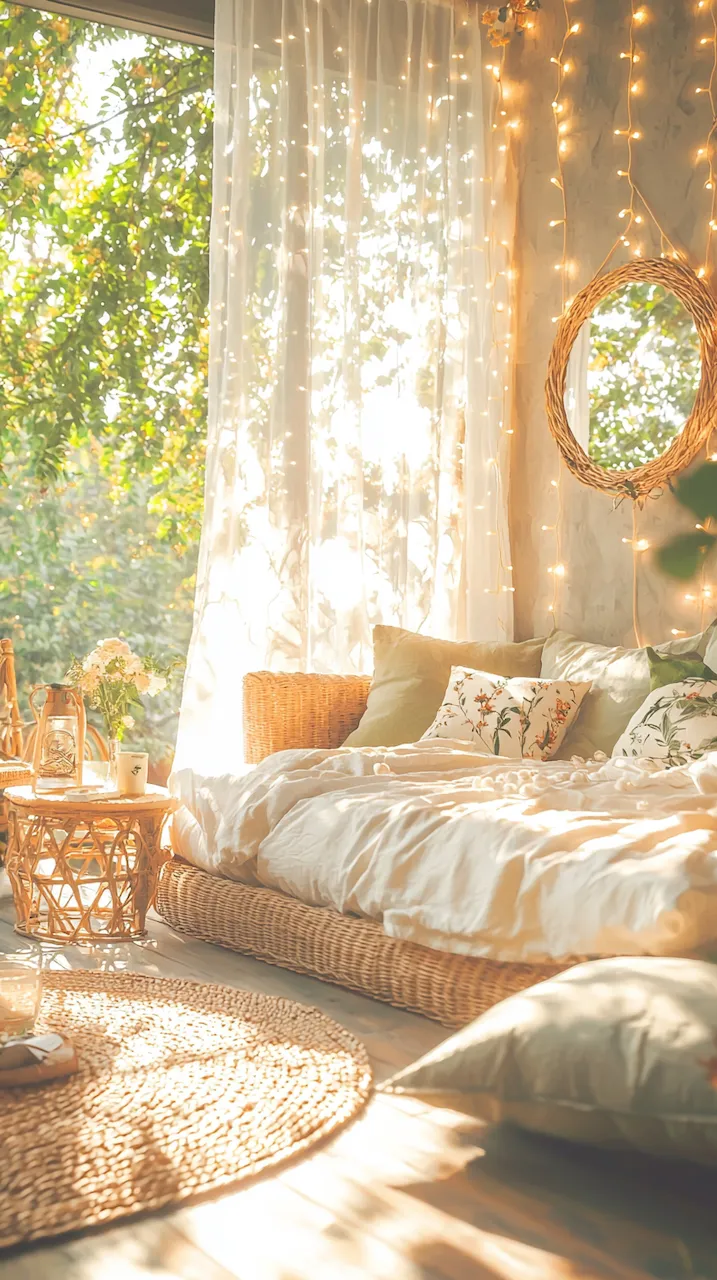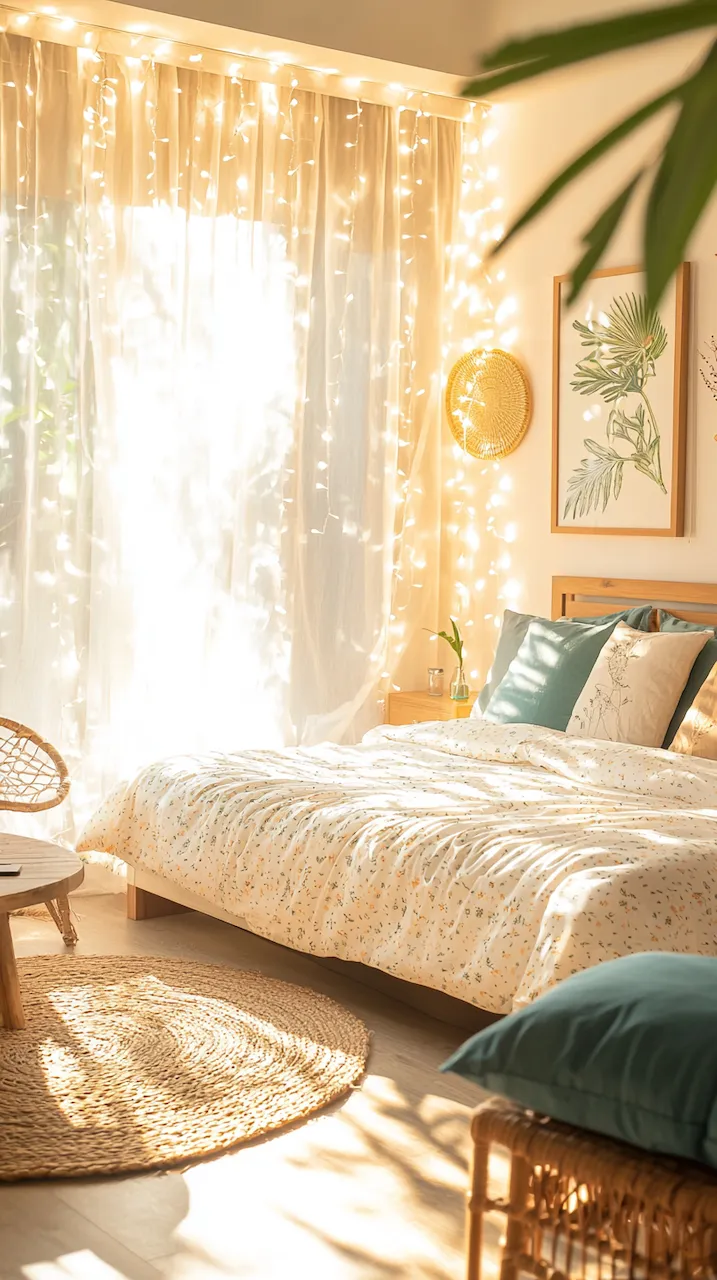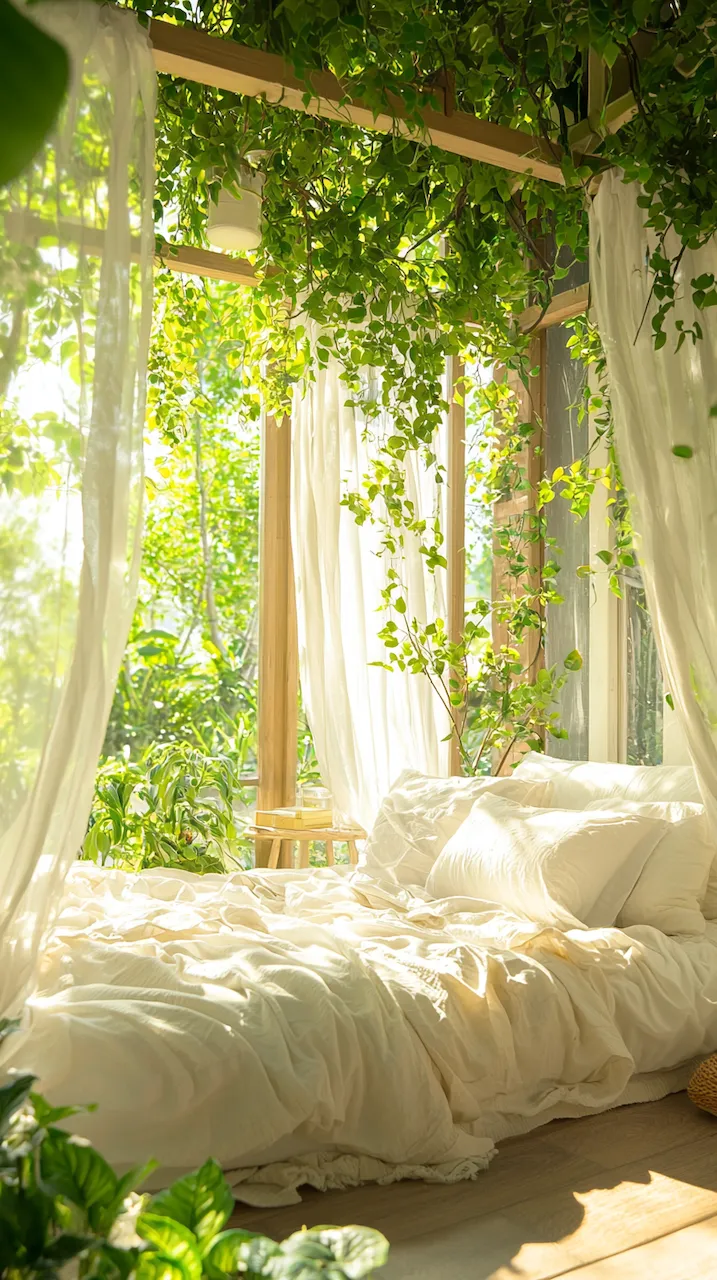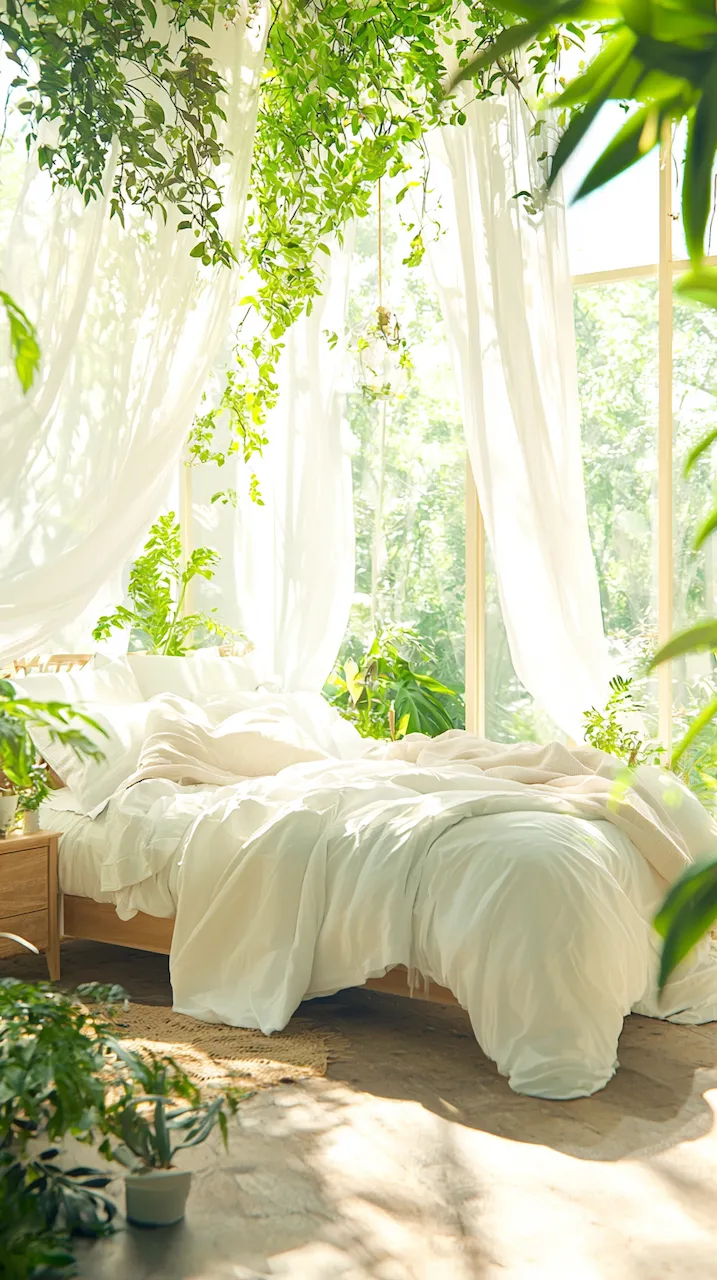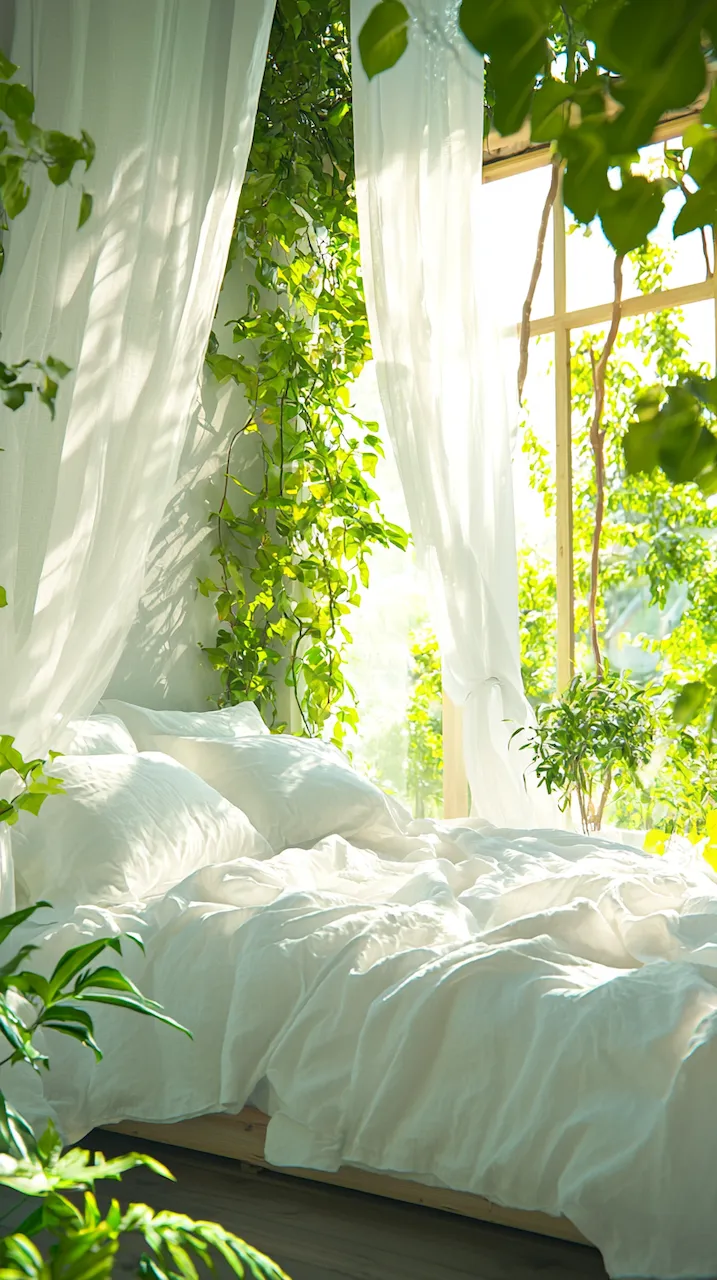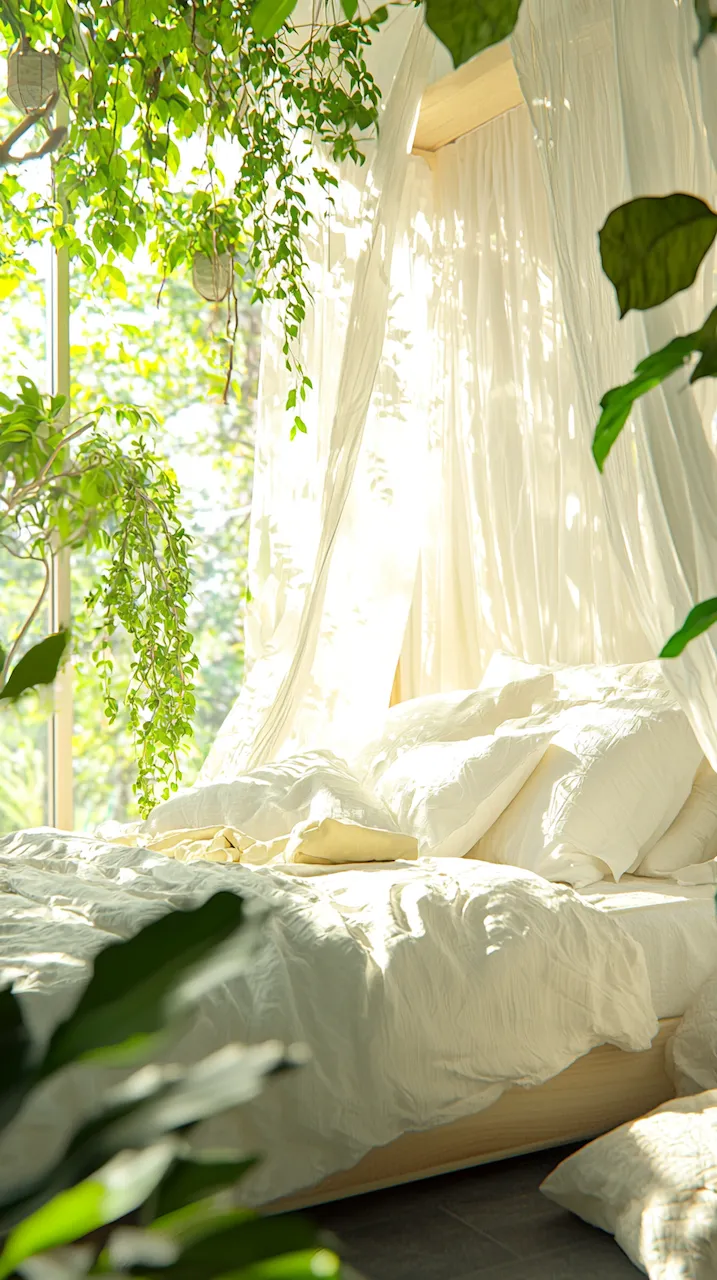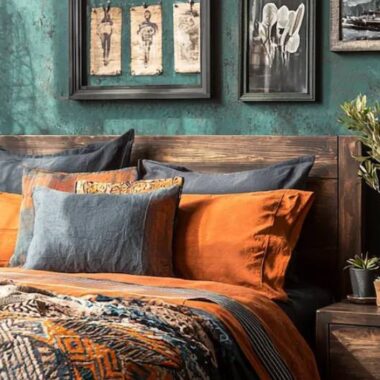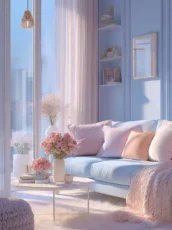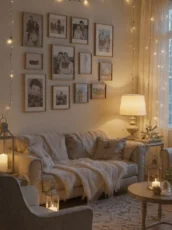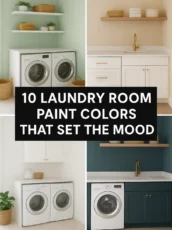Statement Meets Structure
The charm of a cottage aesthetic is its invitation to slow down, to feel, to dwell — but let’s not confuse softness with sloppiness. Today’s most impactful cottage-inspired bedrooms are ones that begin with an architectural backbone, a kind of quiet geometry. We’re talking about environments that understand the interplay between structure and soul. In a modern cottage room, the visual grammar of the space matters. The clean lines of a mid-century platform bed, the rhythm of beams across the ceiling, or the proportion of window to wall — these elements hold the room the way good syntax holds a poem.
Structure provides the stage on which textures, colors, and objects can take on meaning. Without it, charm can veer into clutter, whimsy into chaos. But with just enough framework, even the wildest floral wallpaper or the most bohemian of textiles can feel grounded. Think of a white oak wall niche carved into a bedroom alcove to display hand-thrown pottery, its minimalism allowing the organic forms to shine. Consider floating shelves made from reclaimed wood, anchored with blackened steel brackets — the contrast between rustic and refined giving the eye a place to rest.
What elevates this structure from merely practical to quietly radical is intention. The new cottage aesthetic doesn’t hide its scaffolding — it honors it. Architectural choices become visual declarations. A custom-built bench that follows the curve of a bay window isn’t just functional; it’s a celebration of space. A headboard with integrated sconces becomes an exercise in thoughtful restraint, where lighting becomes sculpture. Even the placement of a bed — off-center to allow for a long stretch of negative space — suggests a refusal to play by inherited rules.
The cottage bedroom, reimagined for the design-forward thinker, should feel like a choreography of contrast. Imagine a room where a minimal four-poster bed in matte black anchors a wall of textured limewash. Where a coffered ceiling, often considered too formal, is repainted in a soft blush or muted sage to meet the room’s country lineage with a knowing wink. Where built-in cabinetry meets the floor in a seamless visual glide, hiding everything that clutters but nothing that matters.
A structure-first approach also opens up possibilities for small-space innovation. Compact urban bedrooms can benefit tremendously from a spatial logic rooted in design thinking. Instead of cramming in separate furniture pieces, imagine a continuous wraparound built-in that starts as a headboard, morphs into a desk, then terminates in a bookshelf. This kind of integrated architecture offers more than just storage — it becomes a sculptural gesture, a way of claiming space with elegance and clarity.
Lighting is another way that structure asserts itself. The way natural light spills across a wide pine floorboard or hits the angles of a plastered wall can define the rhythm of the room. Accent lighting, too, should be seen as part of the architectural plan — think directional wall-mounted lamps that echo the lines of a window frame, or pendant lights that hover precisely at shoulder height when seated on a reading chair, turning illumination into a spatial experience.
Even textiles can take cues from structure. A tightly pleated linen valance above a window or a tailored quilt with deliberate geometric stitching doesn’t just soften — it outlines. It gives form to feeling. In these rooms, drapery is not just about flow; it’s about framing. And structure doesn’t have to mean coldness. It can be sensuous, poetic, deeply human — just as a well-composed sentence can break your heart.
Ultimately, when structure meets statement in the modern cottage bedroom, what emerges is a space that doesn’t scream to be noticed but invites you to look closer. It’s not merely a stage set for your objects, but a participant in the story. The beams, the built-ins, the outlines — these are your grammar. Everything else? That’s the poetry.
The Power of Asymmetry
Asymmetry is the design equivalent of a raised eyebrow — it challenges expectations, injects movement, and creates emotional tension. In the new cottage aesthetic, where nostalgia meets intellectual curiosity, asymmetry is more than a stylistic quirk; it’s a philosophy. It dares to break the symmetry inherited from centuries of formal interiors and replaces it with rhythm, surprise, and meaning.
Walk into a well-designed asymmetric bedroom and you’ll notice how your eye travels. It pauses at a tall ceramic lamp perched on one side of the bed, but not the other. It moves to a solo artwork hung deliberately off-center. Then it settles on a vintage chair — slightly too large for the corner it occupies — but precisely what the room needed to feel alive. These aren’t design mistakes. They’re cues. They tell you this room was made by someone awake.
In cottage-inspired bedrooms, asymmetry is especially powerful because it mirrors the organic chaos of nature. A stack of driftwood, a field of wildflowers, a winding trail — none of it is symmetrical, yet all of it makes sense. That’s the emotional logic we’re tapping into. A handwoven rug that doesn’t quite align with the bed, a bedside table made from a tree stump on one side and a chrome cylinder on the other — these contrasts provoke delight. They spark conversation. They keep you present.
In urban settings, where space is often tight and layout options limited, asymmetry also becomes a practical ally. A floating desk that juts into the room at an angle can create both more legroom and more intrigue. A tall mirror leaned casually against the wall — rather than hung — softens the rigidity of vertical lines. In a corner that feels too empty, hang a mobile or a small sculptural light fixture; in a corner that feels too full, leave it defiantly blank. Negative space is asymmetry’s best friend.
Color and texture can also lean into this logic. One wall in moody matte green, while the others remain cream. A bed dressed in layered neutrals, but interrupted by a single electric blue pillow. A velvet curtain on only one window. It’s not about rebellion for rebellion’s sake; it’s about making choices that feel lived-in and honest. The asymmetry invites your story in. It creates a space that evolves with you, rather than boxing you into a showroom-perfect freeze-frame.
Asymmetry also creates intimacy. When one side of the bed has a chair and lamp — a quiet reading moment — and the other has a lower bench piled with sketchbooks, the room begins to reflect actual lives, not idealized lifestyles. The design shifts from being performative to personal. Even a gallery wall — long a staple of cottage interiors — takes on new resonance when its frames are deliberately mismatched in size, shape, and spacing. It becomes a visual diary, not a design strategy.
The power of asymmetry, ultimately, lies in its confidence. It doesn’t seek approval — it seeks expression. In the cottage bedroom, this becomes a metaphor for the self. We are never symmetrical. We are collections of experiences, scars, oddities, and passions. Why shouldn’t our rooms be the same?
Design-forward thinkers recognize this: that a perfect grid is not the goal. A home, especially a bedroom, should reflect the asymmetrical beauty of real life. The sleepless nights, the sudden inspirations, the impulse to rearrange at 1 a.m. When embraced, asymmetry doesn’t just enhance your space — it gives it a pulse.
And that pulse? That’s the beating heart of good design.
